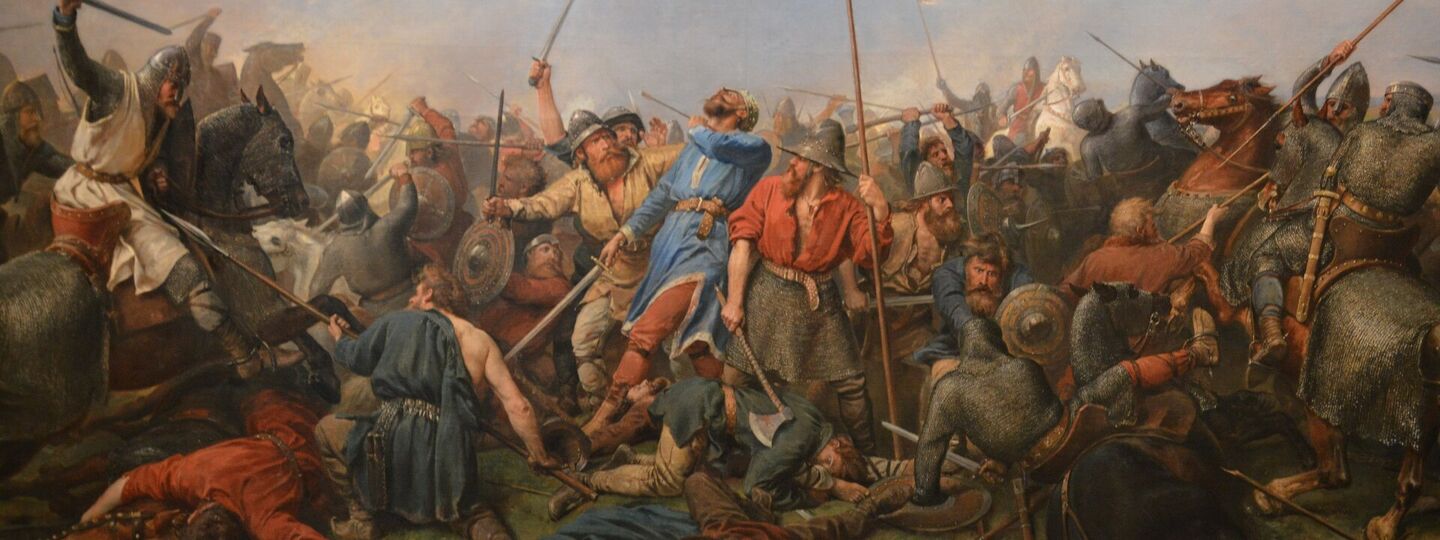
Info
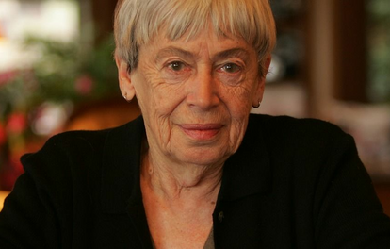
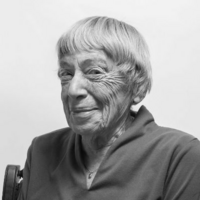
Ursula Kroeber Le Guin (October 21, 1929 – January 22, 2018) was an American novelist. She worked mainly in the genres of fantasy and science fiction. She also authored children’s books, short stories, poetry, and essays. Her writing was first published in the 1960s and often depicted futuristic or imaginary alternative worlds in politics, the natural environment, gender, religion, sexuality, and ethnography. In 2016, The New York Times described her as “America’s greatest living science fiction writer”, although she said that she would prefer to be known as an “American novelist”. She influenced Booker Prize winners and other writers, such as Salman Rushdie and David Mitchell, and science fiction and fantasy writers including Neil Gaiman and Iain Banks. She won the Hugo Award, Nebula Award, Locus Award, and World Fantasy Award, each more than once. In 2014, she was awarded the National Book Foundation Medal for Distinguished Contribution to American Letters. In 2003, she was made a Grandmaster of Science Fiction, one of a few women writers to take the top honor in the genre. Life Birth and family Ursula Kroeber was the daughter of anthropologist Alfred Louis Kroeber of the University of California, Berkeley, and writer Theodora Kracaw. Childhood and education Ursula and her three older brothers, Clifton, Theodore, and Karl Kroeber, were encouraged to read and were exposed to their parents’ dynamic friend group, which included Native Americans and Robert Oppenheimer, who was later to become in part a model for her hero in The Dispossessed. Le Guin stated that, in retrospect, she was grateful for the ease and happiness of her upbringing. The encouraging environment fostered Le Guin’s interest in literature; her first fantasy story was written at age 9, her first science fiction story submitted for publication in the magazine Astounding Science Fiction at age 11. The family spent the academic year in Berkeley, retreating in the summers to “Kishamish” in Napa Valley, "an old, tumble-down ranch... [and] a gathering place for scientists, writers, students, and California Indians. Even though I didn’t pay much attention, I heard a lot of interesting, grown-up conversation." She was interested in biology and poetry, but found math difficult. Le Guin attended Berkeley High School. She received her B.A. (Phi Beta Kappa) in Renaissance French and Italian literature from Radcliffe College in 1951, and M.A. in French and Italian literature from Columbia University in 1952. Soon after, Le Guin began her Ph.D. work and won a Fulbright grant to continue her studies in France from 1953 to 1954. Marriage and family In 1953, while traveling to France aboard the Queen Mary, Le Guin met her future husband, historian Charles Le Guin. They married later that year in Paris. After marrying, Le Guin chose not to continue her doctoral studies of the poet Jean Lemaire de Belges. The couple returned to the United States so that he could pursue his Ph.D. at Emory University. During this time, she worked as a secretary and taught French at the university level. Their first child, Elisabeth (1957), was born in Moscow, Idaho, where Charles taught. In 1958 the Le Guins moved to Portland, Oregon, where their daughter Caroline (1959) was born, and where they lived thereafter. Charles is Emeritus Professor of History at Portland State University. During this time, she continued to make time for writing in addition to maintaining her family life. In 1964, her third child, Theodore, was born. Death Le Guin died on January 22, 2018, at her home in Portland, Oregon; her son stated that she had been in poor health for several months. Her New York Times obituary called her “the immensely popular author who brought literary depth and a tough-minded feminist sensibility to science fiction and fantasy with books like The Left Hand of Darkness and the Earthsea series”. Writing career Le Guin became interested in literature quite early. At age 11, she submitted her first story to the magazine Astounding Science Fiction. Despite being rejected, she continued writing but did not attempt to publish for the next ten years. From 1951 to 1961 she wrote five novels, which publishers rejected, because they seemed inaccessible. She also wrote poetry during this time, including Wild Angels (1975). Her earliest writings, some of which she adapted in Orsinian Tales and Malafrena, were non-fantastic stories set in the imaginary country of Orsinia. Searching for a way to express her interests, she returned to her early interest in science fiction; in the early 1960s her work began to be published regularly. One Orsinian Tale was published in the Summer 1961 issue of The Western Humanities Review and three of her stories appeared in 1962 and 1963 numbers of Fantastic Stories of Imagination, a monthly edited by Cele Goldsmith. Goldsmith also edited Amazing Stories, which ran two of Le Guin’s stories in 1964, including the first “Hainish” story. In 1964 the short story “The Word of Unbinding” was published. This was the first of the Earthsea fantasy series, which includes six books and eight short stories. The three linked young adult novels beginning with A Wizard of Earthsea (1968), The Tombs of Atuan (1970), and The Farthest Shore (1972), sometimes referred to as The Earthsea Trilogy, in later years would be joined by the books Tehanu, Tales from Earthsea and The Other Wind. Le Guin received wide recognition for her novel The Left Hand of Darkness, which won the Hugo and Nebula awards in 1970. Her subsequent novel The Dispossessed made her the first person to win both the Hugo and Nebula Awards for Best Novel twice for the same two books. In later years, Le Guin worked in film and audio. She contributed to The Lathe of Heaven, a 1979 PBS film based on her novel of the same name. In 1985 she collaborated with avant-garde composer David Bedford on the libretto of Rigel 9, a space opera. In May 1983 she delivered a well-received commencement address entitled “A Left-Handed Commencement Address” at Mills College, Oakland, California. “A Left-Handed Commencement Address” is included in her nonfiction collection Dancing at the Edge of the World. In 1984, Le Guin was part of a group along with Ken Kesey, Brian Booth, and William Stafford that founded the Oregon Institute of Literary Arts, which is now known as Literary Arts in Portland. In December 2009, Le Guin resigned from the Authors Guild in protest over its endorsement of Google Books, Google’s book digitization project. “You decided to deal with the devil”, she wrote in her resignation letter. “There are principles involved, above all the whole concept of copyright; and these you have seen fit to abandon to a corporation, on their terms, without a struggle.” (See Authors Guild, Inc. v. Google, Inc..) Influences Le Guin was influenced by fantasy writers, including J. R. R. Tolkien, by science fiction writers, including Philip K. Dick (who was in her high school class, though they did not know each other), by central figures of Western literature such as Leo Tolstoy, Virgil and the Brontë sisters, by feminist writers such as Virginia Woolf, by children’s literature such as Alice in Wonderland, The Wind in the Willows, The Jungle Book, by Norse mythology, and by books from the Eastern tradition such as the Tao Te Ching. When asked about her influences, she replied: Once I learned to read, I read everything. I read all the famous fantasies – Alice in Wonderland, and Wind in the Willows, and Kipling. I adored Kipling’s Jungle Book. And then when I got older I found Lord Dunsany. He opened up a whole new world – the world of pure fantasy. And... Worm Ouroboros. Again, pure fantasy. Very, very fattening. And then my brother and I blundered into science fiction when I was 11 or 12. Early Asimov, things like that. But that didn’t have too much effect on me. It wasn’t until I came back to science fiction and discovered Sturgeon – but particularly Cordwainer Smith.... I read the story “Alpha Ralpha Boulevard”, and it just made me go, “Wow! This stuff is so beautiful, and so strange, and I want to do something like that.” In the mid-1950s, she read J. R. R. Tolkien’s The Lord of the Rings, which had an enormous impact on her. But rather than making her want to follow in Tolkien’s footsteps, it simply showed her what was possible with the fantasy genre. Themes Le Guin exploits the creative flexibility of the science fiction and fantasy genres to undertake thorough explorations of dimensions of both social and psychological identity and of broader cultural and social structures. In doing so, she draws on sociology, anthropology, and psychology, leading some critics to categorize her work as soft science fiction. She objected to this classification of her writing, arguing the term is divisive and implies a narrow view of what constitutes valid science fiction. Underlying ideas of anarchism and environmentalism also make repeated appearances throughout Le Guin’s work. In 2014 Le Guin said about the appeal of contemplating possible futures in science fiction: anything at all can be said to happen [in the future] without fear of contradiction from a native. The future is a safe, sterile laboratory for trying out ideas in, a means of thinking about reality, a method. Sociology, anthropology and psychology Being so thoroughly informed by social science perspectives on identity and society, Le Guin treats race and gender quite deliberately. The majority of her main characters are people of color, a choice made to reflect the non-white majority of humans, and one to which she attributes the frequent lack of character illustrations on her book covers. Her writing often makes use of alien (i.e., human but non-Terran) cultures to examine structural characteristics of human culture and society and their impact on the individual. This prominent theme of cultural interaction is most likely rooted in the fact that Le Guin grew up in a household of anthropologists where she was surrounded by the remarkable case of Ishi – a Native American acclaimed in his time as the “last wild Indian” – and his interaction with the white man’s world. Le Guin’s father was director of the University of California Museum of Anthropology, where Ishi was studied and worked as a research assistant. Her mother wrote the bestseller Ishi in Two Worlds. Similar elements are echoed through many of Le Guin’s stories – from Planet of Exile and City of Illusions to The Word for World Is Forest and The Dispossessed. Le Guin’s writing notably employs the ordinary actions and transactions of everyday life, clarifying how these daily activities embed individuals in a context of relation to the physical world and to one another. For example, the engagement of the main characters with the everyday business of looking after animals, tending gardens and doing domestic chores is central to the novel Tehanu. Themes of Jungian psychology also are prominent in her writing. For example Le Guin’s Hainish Cycle, a series of novels encompassing a loose collection of societies, of various related human species, that exist largely in isolation from one another, providing the setting for her explorations of intercultural encounter. The Left Hand of Darkness, The Dispossessed and The Telling all consider the consequences of contact between different worlds and cultures. Unlike those in much mainstream science fiction, Hainish Cycle civilization does not possess reliable human faster-than-light travel, but does have technology for instantaneous communication. The social and cultural impact of the arrival of Ekumen envoys (known as “mobiles”) on remote planets, and the culture shock that the envoys experience, constitute major themes of The Left Hand of Darkness. Le Guin’s concept has been borrowed explicitly by several other well-known authors, to the extent of using the name of the communication device (the “ansible”). The Left Hand of Darkness is particularly noted for the way she explores social, cultural, and personal consequences of sexual identity through a novel involving a human’s encounter with an intermittently androgynous race. In addition to androgyny, Le Guin’s focus on sexuality breaks down normative gender roles. “Solitude”, one of the stories in The Birthday of the World: and Other Stories follows a young girl, more adventurous and daring than her older brother, into a world dominated by strong, territorial women. In Paradises Lost, the people of a spaceship several generations into the voyage to a new colony-world are saved by a female interstellar navigator, an archetypal role typically reserved for men. Environmentalism Elizabeth McDowell states in her 1992 master’s thesis that Le Guin "identif[ies] the present dominant socio-political American system as problematic and destructive to the health and life of the natural world, humanity, and their interrelations". This idea recurs in several of Le Guin’s works, most notably The Left Hand of Darkness (1969), The Word for World Is Forest (1972), The Dispossessed (1974), The Eye of the Heron (1978), Always Coming Home (1985), and “Buffalo Gals, Won’t You Come Out Tonight” (1987). All of these works center on ideas regarding socio-political organization and value-system experiments in both utopias and dystopias. As McDowell explains, “Although many of Le Guin’s works are exercises in the fantastic imagination, they are equally exercises of the political imagination.” In addition to her fiction, Le Guin’s book Out Here: Poems and Images from Steens Mountain Country, a collaboration with artist Roger Dorband, is a clear environmental testament to the natural beauty of that area of Eastern Oregon. Le Guin also wrote several works of poetry and nonfiction on Mount St. Helens following the 1980 eruption. These works explore local stories and discussions surrounding the eruption event in conjunction with Le Guin’s own perspective as it relates to viewing the eruption and mountain from her home in Portland, as well as her various visits into the blast zone. Anarchism and Taoism Le Guin’s feelings towards anarchism were closely tied to her Taoist beliefs and both ideas appear in her work. “Taoism and Anarchism fit together in some very interesting ways and I’ve been a Taoist ever since I learned what it was.” She participated in numerous peace marches and although she did not call herself an anarchist, since she did not live the lifestyle, she did feel that “Democracy is good but it isn’t the only way to achieve justice and a fair share.” Le Guin said: “The Dispossessed is an Anarchist utopian novel. Its ideas come from the Pacifist Anarchist tradition – Kropotkin etc. So did some of the ideas of the so-called counterculture of the sixties and seventies.” She also said that anarchism “is a necessary ideal at the very least. It is an ideal without which we couldn’t go on. If you are asking me is anarchism at this point a practical movement, well, then you get in the question of where you try to do it and who’s living on your boundary?” Le Guin has been credited with helping to popularize anarchism as her work "rescues anarchism from the cultural ghetto to which it has been consigned [and] introduces the anarchist vision... into the mainstream of intellectual discourse". Indeed her works were influential in developing a new anarchist way of thinking; a postmodern way that is more adaptable and looks at/addresses a broader range of concerns. Adaptations of her work Few of Le Guin’s major works have been adapted for film or television. Her 1971 novel The Lathe of Heaven has been adapted twice: The first adaptation was made in 1979 by WNET Channel 13 in New York, with her own participation, and the second adaptation was made in 2002 by the A&E Network. In a 2008 interview, she said she considers the 1979 adaptation as “the only good adaptation to film” of her work to date. In the early 1980s animator and director Hayao Miyazaki asked permission to create an animated adaptation of Earthsea. However, Le Guin, who was unfamiliar with his work and anime in general, turned down the offer. Years later, after seeing My Neighbor Totoro, she reconsidered her refusal, believing that if anyone should be allowed to direct an Earthsea film, it should be Hayao Miyazaki. The third and fourth Earthsea books were used as the basis of the 2006 animated film Tales from Earthsea (ゲド戦記, Gedo Senki). The film, however, was directed by Miyazaki’s son, Gorō, rather than Hayao Miyazaki himself, which disappointed Le Guin. While she was positive about the aesthetic of the film, writing that “much of it was beautiful”, she took great issue with its re-imagining of the moral sense of the books and greater focus on physical violence. "[E]vil has been comfortably externalized in a villain", Le Guin writes, "the wizard Kumo/Cob, who can simply be killed, thus solving all problems. In modern fantasy (literary or governmental), killing people is the usual solution to the so-called war between good and evil. My books are not conceived in terms of such a war, and offer no simple answers to simplistic questions.” In 1987, the CBC Radio anthology program Vanishing Point adapted The Dispossessed into a series of six 30-minute episodes, and at an unspecified date The Word for World Is Forest as a series of three 30-minute episodes. In 1995, Chicago’s Lifeline Theatre presented its adaptation of The Left Hand of Darkness. Reviewer Jack Helbig at the Chicago Reader wrote that the “adaptation is intelligent and well crafted but ultimately unsatisfying”, in large measure because it is extremely difficult to compress a complex 300-page novel into a two-hour stage presentation. In 2004 the Sci Fi Channel adapted the first two books of the Earthsea trilogy as the miniseries Legend of Earthsea. Le Guin was highly critical of the adaptation, calling it a “far cry from the Earthsea I envisioned”, objecting both to the use of white actors for her red, brown, or black-skinned characters, and to the way she was “cut out of the process”. Her novella, Paradises Lost, published in The Birthday of the World: and Other Stories, was adapted into an opera by the American composer Stephen Andrew Taylor and Canadian librettist Marcia Johnson. The opera premiered April 26, 2012 at the Krannert Center for the Performing Arts on the campus of the University of Illinois. In 2013, the Portland Playhouse and Hand2Mouth Theatre produced a stage adaptation of The Left Hand of Darkness, directed and adapted by Jonathan Walters, with text adapted by John Schmor. The play opened May 2, 2013, and ran until June 16, 2013, in Portland, Oregon. In 2015, the BBC commissioned radio adaptations of The Left Hand of Darkness and the first three Earthsea novels. The Left Hand of Darkness was aired as two hour-long episodes, and Earthsea as six half-hour episodes. In early 2017 Le Guin’s award winning novel The Left Hand of Darkness was picked up by Critical Content, a production company formerly known as Relativity Television, to be produced as a television limited series. Le Guin was to serve as a consulting producer on the project.

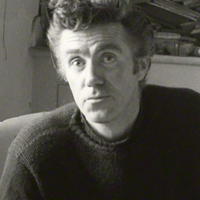
William Sydney Graham (19 November 1918– 9 January 1986) was a Scottish poet who is often associated with Dylan Thomas and the neo-romantic group of poets. Graham’s poetry was mostly overlooked in his lifetime but, partly due to the support of Harold Pinter, his work has enjoyed a revival in recent years. He was represented in the second edition of the Penguin Book of Contemporary Verse (Harmondsworth, UK, 1962) and the Anthology of Twentieth-Century British and Irish Poetry (Oxford University Press, 2001). Early life and work Graham was born in Greenock. In 1932, he left school to become an apprentice draughtsman and then studied structural engineering at Stow College, Glasgow. He was awarded a bursary to study literature for a year at Newbattle Abbey College in 1938. Graham spent the war years working at a number of jobs in Scotland and Ireland before moving to Cornwall in 1944. His first book, Cage Without Grievance was published in 1942. Graham and the neo-romantics The 1940s were prolific years for Graham, and he published four more books during that decade. These were The Seven Journeys (1944)' 2ND Poems (1945), The Voyages of Alfred Wallis (1948) and The White Threshold (1949). The style of these early poems led critics to see Graham as part of the neo-romantic group that included Dylan Thomas and George Barker. The affinities between these three poets derive from a common interest in poets like Gerard Manley Hopkins, Arthur Rimbaud and Hart Crane, and, in the cases of Thomas and Graham, a taste for the Bohemian lifestyle of the London literary scene. In 1947, Graham received the Atlantic Award for Literature, and lectured at New York University whilst spending a year on a reading touring of the United States. He moved to London to be nearer the hub of that Bohemian world. Here he came into contact with T. S. Eliot, then editor of Faber and Faber who published The White Threshold and who were to remain Graham’s publishers for the rest of his life. The Nightfishing and legacy In 1954, Graham returned to Cornwall to live near the St. Ives artists colony. Here he became friendly with several of the resident painters, including Bryan Wynter and Roger Hilton. The following year, Faber and Faber published his The Nightfishing, a book whose title poem marked a dramatic change in Graham’s poetry. The poem moved on from his earlier style and moved away from the neo-romantic/apocalyptic tag. Unfortunately for the poet, the poem’s appearance coincided with the rise of the Movement with their open hostility to the neo-romantics, and, despite the support of Eliot and Hugh MacDiarmid, the book was neither a critical nor a popular success. It was to be fifteen years before Graham published another book, Malcolm Mooney’s Land (1970). This, and his last book, “Implements In Their Places” are truly original and enduring poetic achievements, for which Graham is slowly coming to be recognised. For many years, he had been living in semi-poverty on his income as a writer, but in 1974 he received a Civil List pension of £500 per year. Perhaps because of this alleviation of his financial circumstances, Graham began to publish with more frequency, with Implements in their Places (1977), Collected Poems 1942–1977 (1979) and an American-published Selected Poems (1980). He died in Madron, Cornwall in 1986. His last collection Aimed at Nobody was published posthumously in 1993 and a book of Uncollected Poems appeared in 1990. Faber brought out a new Selected Poems in 1996. The Nightfisherman: Selected Letters was published in 1999 and New Collected Poems in 2005. All Graham’s poems have a location, a plot and setting (or narrative) as Graham insisted ‘the first act of engagement of reader and poem was in reading it aloud. This tested the syntax, pace and tone of poem and reader ’. Posthumous publication activity indicates, Graham’s reputation has grown in recent years. Some might argue this is partly due to Harold Pinter’s often-expressed enthusiasm for the poet, or attribute his increasing recognition to the widespread advocacy of poets associated with the British Poetry Revival. However Graham’s work was represented in the anthology Conductors of Chaos (1996) by a selection introduced by the poet and critic Tony Lopez, who also wrote a book-length study, The Poetry of W. S. Graham (1989). Marriage, death and recognition He married another poet, Agnes Kilpatrick Dunsmuir (1909–1999), known as “Nessie Dunsmuir”. He died on 9 January 1986. Copyright in Graham’s works is held by his daughter, Rosalind Mudaliar. In 2006, 20 years after his death, memorial plaques were unveiled in Fore Street, Madron where he spent his final years, and at his birthplace, 1 Hope Street, Greenock. Bibliography * Cage without Grievance, Parton Press, 1942 * The Seven Journeys, William MacLellan, 1944 * 2ND Poems, Nicholson and Watson, 1945 * The White Threshold, Faber and Faber, 1949 * The Nightfishing, Faber and Faber, 1955 * Malcolm Mooney’s Land, Faber and Faber, 1970 * Penguin Modern Poets 17, David Gascoyne, W. S. Graham, Kathleen Raine, Penguin Books, 1970 * Implements in their Places, Faber and Faber, 1977 * Collected Poems, 1942-1977, Faber and Faber, 1979 * Selected Poems, Ecco Press, 1980 * Uncollected Poems, Greville Press, 1990 * Aimed at Nobody: Poems from Notebooks, ed. Margaret Blackwood and Robin Skelton, Faber and Faber, 1993 * Selected Poems, Faber and Faber, 1996 * W.S. Graham Selected by Nessie Dunsmuir, Greville Press, 1998 * The Night Fisherman: Selected Letters of W. S. Graham, ed. Michael and Margaret Snow, Carcanet, 1999 * New Collected Poems, ed. Matthew Francis, Faber and Faber, 2004 * Approaches to How They Behave, Donut Press, 2009 * Les Dialogues obscurs / The Dark Dialogues, selected poems, bilingual book English-French, introduction Michael Snow, afterword Paul Stubbs, Black Herald Press, 2013 References Wikipedia—https://en.wikipedia.org/wiki/W._S._Graham
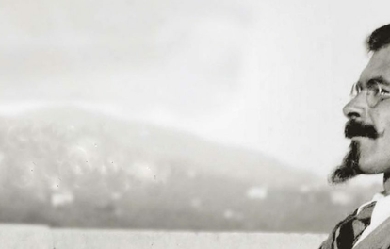
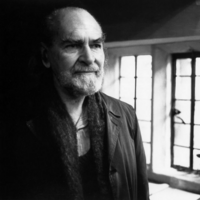
Basil Cheesman Bunting (1 March 1900– 17 April 1985) was a significant British modernist poet whose reputation was established with the publication of Briggflatts in 1966. He had a lifelong interest in music that led him to emphasise the sonic qualities of poetry, particularly the importance of reading poetry aloud. He was an accomplished reader of his own work. Life and career Born into a Quaker family in Scotswood-on-Tyne, Northumberland, he studied at two Quaker schools: from 1912 to 1916 at Ackworth School in the West Riding of Yorkshire and from 1916 to 1918 at Leighton Park School in Berkshire. His Quaker education strongly influenced his pacifist opposition to the First World War, and in 1918 he was arrested as a conscientious objector having been refused recognition by the tribunals and refusing to comply with a notice of call-up. Handed over to the military, he was court-martialled for refusing to obey orders, and served a sentence of more than a year in Wormwood Scrubs and Winchester prisons. Bunting’s friend Louis Zukofsky described him as a "conservative/anti-fascist/imperialist", though Bunting himself listed the major influences on his artistic and personal outlook somewhat differently as “Jails and the sea, Quaker mysticism and socialist politics, a lasting unlucky passion, the slums of Lambeth and Hoxton ...” These events were to have an important role in his first major poem, “Villon” (1925). “Villon” was one of a rather rare set of complex structured poems that Bunting labelled “sonatas,” thus underlining the sonic qualities of his verse and recalling his love of music. Other “sonatas” include “Attis: or, Something Missing,” “Aus Dem Zweiten Reich,” “The Well of Lycopolis,” “The Spoils” and, finally, “Briggflatts.” After his release from prison in 1919, traumatised by the time spent there, Bunting went to London, where he enrolled in the London School of Economics, and had his first contacts with journalists, social activists and Bohemia. Bunting was introduced to the works of Ezra Pound by Nina Hamnett who lent him a copy of Homage to Sextus Propertius. The glamour of the cosmopolitan modernist examples of Nina Hamnett and Mina Loy seems to have influenced Bunting in his later move from London to Paris. After travelling in Northern Europe, Bunting left the London School of Economics without a degree and went to France. There, in 1923, he became friendly with Ezra Pound, who years later would dedicate his Guide to Kulchur (1938) to both Bunting and Louis Zukofsky, “strugglers in the desert”. Between February and October 1927, Bunting wrote articles and reviews for The Outlook, and then became its music critic until the magazine ceased publication in 1928. Bunting’s poetry began to show the influence of the friendship with Pound, whom he visited in Rapallo, Italy, and later settled there with his family from 1931 to 1933. He was published in the Objectivist issue of Poetry magazine, in the Objectivist Anthology, and in Pound’s Active Anthology. During the Second World War, Bunting served in British Military Intelligence in Persia. After the war, in 1948, he left government service to become the correspondent for The Times of London, in Iran. He married an Iranian woman– Sima Alladian– whilst continuing his intelligence work with the Anglo-Iranian Oil Company Tehran, until he was expelled by Mohammad Mossadegh in 1952. Back in Newcastle, he worked as a journalist on the Evening Chronicle until his rediscovery during the 1960s by young poets, notably Tom Pickard and Jonathan Williams, who were interested in working in the modernist tradition. In 1965, he published his major long poem, Briggflatts, named after the Quaker village in Cumbria where he is now buried. In later life he published Advice to Young Poets, beginning "I SUGGEST / 1. Compose aloud; poetry is a sound.” Bunting died in 1985 in Hexham, Northumberland. The Basil Bunting Poetry Award and Young Person’s Prize, administered by Newcastle University, are open internationally to any poet writing in English. Briggflatts Divided into five parts, Briggflatts is an autobiographical long poem, looking back on teenage love and on Bunting’s involvement in the high modernist period. In addition, Briggflatts can be read as a meditation on the limits of life and a celebration of Northumbrian culture and dialect, as symbolised by events and figures like the doomed Viking King Eric Bloodaxe. The critic Cyril Connolly was among the first to recognise the poem’s value, describing it as “the finest long poem to have been published in England since T. S. Eliot’s Four Quartets”. Portrait bust of Basil Bunting Basil Bunting sat in Northumberland for sculptor Alan Thornhill, with a resulting terracotta (for bronze) in existence. The correspondence file relating to the Bunting portrait bust is held as part of the Thornhill Papers (2006:56) in the archive of the Henry Moore Foundation’s Henry Moore Institute in Leeds and the terracotta remains in the collection of the artist. The 1973 portrait is displayed in the Burton (2014) biography of Bunting. In popular culture Mark Knopfler wrote a song, titled 'Basil’, about his time as a Saturday afternoon copy boy on the Newcastle Evening Chronicle when Bunting worked there. The song was recorded for Knopfler’s 2015 album Tracker. Books * 1930: Redimiculum Matellarum (privately printed) * 1950: Poems (Cleaners’ Press, 1950) revised and published as Loquitur (Fulcrum Press, 1965). * 1951: The Spoils * 1965: First Book of Odes * 1965: Ode II/2 * 1966: Briggflatts: An Autobiography * 1967: Two Poems * 1967: What the Chairman Told Tom * 1968: Collected Poems * 1972: Version of Horace * 1991: Uncollected Poems (posthumous, edited by Richard Caddel) * 1994: The Complete Poems (posthumous, edited by Richard Caddel) * 1999: Basil Bunting on Poetry (posthumous, edited by Peter Makin) * 2000: Complete Poems (posthumous, edited by Richard Caddel) * 2009: Briggflatts (with audio CD and video DVD) * 2012: Bunting’s Persia (Translations by Basil Bunting. Edited by Don Share) References Wikipedia—https://en.wikipedia.org/wiki/Basil_Bunting
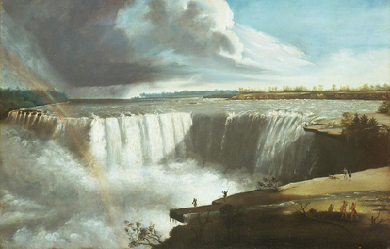
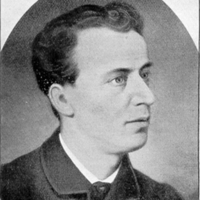
George Frederick Cameron (24 September 1854– 17 September 1885) was a Canadian poet, lawyer, and journalist, best known for the libretto for the operetta Leo, the Royal Cadet. He moved to Boston in April 1869. He graduated from the Boston University School of Law in 1877. He worked for the law firm Dean, Butler and Abbot of Boston from 1877 to 1882. He contributed poetry to Boston periodicals, including the Courier and the Transcript. In fall 1882 he enrolled in Queen’s College in Kingston, Ontario where he won a poetry prize in 1883 for “Adelphi.” He is sometimes considered one of the Confederation Poets.
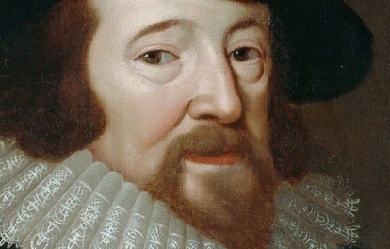
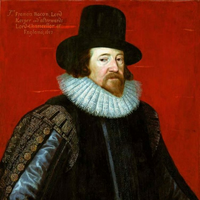
Francis Bacon, 1st Viscount St Alban, PC KC (/ˈbeɪkən/; 22 January 1561– 9 April 1626) was an English philosopher, statesman, scientist, jurist, orator, and author. He served both as Attorney General and as Lord Chancellor of England. After his death, he remained extremely influential through his works, especially as philosophical advocate and practitioner of the scientific method during the scientific revolution. Bacon has been called the father of empiricism. His works argued for the possibility of scientific knowledge based only upon inductive and careful observation of events in nature. Most importantly, he argued this could be achieved by use of a skeptical and methodical approach whereby scientists aim to avoid misleading themselves. While his own practical ideas about such a method, the Baconian method, did not have a long lasting influence, the general idea of the importance and possibility of a skeptical methodology makes Bacon the father of scientific method. This marked a new turn in the rhetorical and theoretical framework for science, the practical details of which are still central in debates about science and methodology today. Bacon was generally neglected at court by Queen Elizabeth, but after the accession of King James I in 1603, Bacon was knighted. He was later created Baron Verulam in 1618 and Viscount St. Alban in 1621. Because he had no heirs, both titles became extinct upon his death in 1626, at 65 years of age. Bacon died of pneumonia, with one account by John Aubrey stating that he had contracted the condition while studying the effects of freezing on the preservation of meat. Biography Early life Francis Bacon was born on 22 January 1561 at York House near the Strand in London, the son of Sir Nicholas Bacon by his second wife, Anne (Cooke) Bacon, the daughter of the noted humanist Anthony Cooke. His mother’s sister was married to William Cecil, 1st Baron Burghley, making Burghley Bacon’s uncle. Biographers believe that Bacon was educated at home in his early years owing to poor health, which would plague him throughout his life. He received tuition from John Walsall, a graduate of Oxford with a strong leaning toward Puritanism. He entered Trinity College, Cambridge, on 5 April 1573 at the age of 12, living for three years there, together with his older brother Anthony Bacon under the personal tutelage of Dr John Whitgift, future Archbishop of Canterbury. Bacon’s education was conducted largely in Latin and followed the medieval curriculum. He was also educated at the University of Poitiers. It was at Cambridge that he first met Queen Elizabeth, who was impressed by his precocious intellect, and was accustomed to calling him “The young lord keeper”. His studies brought him to the belief that the methods and results of science as then practised were erroneous. His reverence for Aristotle conflicted with his rejection of Aristotelian philosophy, which seemed to him barren, disputatious and wrong in its objectives. On 27 June 1576, he and Anthony entered de societate magistrorum at Gray’s Inn. A few months later, Francis went abroad with Sir Amias Paulet, the English ambassador at Paris, while Anthony continued his studies at home. The state of government and society in France under Henry III afforded him valuable political instruction. For the next three years he visited Blois, Poitiers, Tours, Italy, and Spain. During his travels, Bacon studied language, statecraft, and civil law while performing routine diplomatic tasks. On at least one occasion he delivered diplomatic letters to England for Walsingham, Burghley, and Leicester, as well as for the queen. The sudden death of his father in February 1579 prompted Bacon to return to England. Sir Nicholas had laid up a considerable sum of money to purchase an estate for his youngest son, but he died before doing so, and Francis was left with only a fifth of that money. Having borrowed money, Bacon got into debt. To support himself, he took up his residence in law at Gray’s Inn in 1579, his income being supplemented by a grant from his mother Lady Anne of the manor of Marks near Romford in Essex, which generated a rent of £46. Parliamentarian Bacon stated that he had three goals: to uncover truth, to serve his country, and to serve his church. He sought to further these ends by seeking a prestigious post. In 1580, through his uncle, Lord Burghley, he applied for a post at court that might enable him to pursue a life of learning, but his application failed. For two years he worked quietly at Gray’s Inn, until he was admitted as an outer barrister in 1582. His parliamentary career began when he was elected MP for Bossiney, Cornwall, in a by-election (similar to a special election in the US) in 1581. In 1584 he took his seat in parliament for Melcombe in Dorset, and in 1586 for Taunton. At this time, he began to write on the condition of parties in the church, as well as on the topic of philosophical reform in the lost tract Temporis Partus Maximus. Yet he failed to gain a position that he thought would lead him to success. He showed signs of sympathy to Puritanism, attending the sermons of the Puritan chaplain of Gray’s Inn and accompanying his mother to the Temple Church to hear Walter Travers. This led to the publication of his earliest surviving tract, which criticised the English church’s suppression of the Puritan clergy. In the Parliament of 1586, he openly urged execution for the Catholic Mary, Queen of Scots. About this time, he again approached his powerful uncle for help; this move was followed by his rapid progress at the bar. He became a bencher in 1586 and was elected a Reader in 1587, delivering his first set of lectures in Lent the following year. In 1589, he received the valuable appointment of reversion to the Clerkship of the Star Chamber, although he did not formally take office until 1608; the post was worth £1,600 a year. In 1588 he became MP for Liverpool and then for Middlesex in 1593. He later sat three times for Ipswich (1597, 1601, 1604) and once for Cambridge University (1614). He became known as a liberal-minded reformer, eager to amend and simplify the law. Though a friend of the crown, he opposed feudal privileges and dictatorial powers. He spoke against religious persecution. He struck at the House of Lords in its usurpation of the Money Bills. He advocated for the union of England and Scotland, which made him a significant influence toward the consolidation of the United Kingdom; and he later would advocate for the integration of Ireland into the Union. Closer constitutional ties, he believed, would bring greater peace and strength to these countries. Attorney General Bacon soon became acquainted with Robert Devereux, 2nd Earl of Essex, Queen Elizabeth’s favourite. By 1591 he acted as the earl’s confidential adviser. In 1592 he was commissioned to write a tract in response to the Jesuit Robert Parson’s anti-government polemic, which he titled Certain observations made upon a libel, identifying England with the ideals of democratic Athens against the belligerence of Spain. Bacon took his third parliamentary seat for Middlesex when in February 1593 Elizabeth summoned Parliament to investigate a Roman Catholic plot against her. Bacon’s opposition to a bill that would levy triple subsidies in half the usual time offended the Queen: opponents accused him of seeking popularity, and for a time the Court excluded him from favour. When the office of Attorney General fell vacant in 1594, Lord Essex’s influence was not enough to secure the position for Bacon and it was given to Sir Edward Coke. Likewise, Bacon failed to secure the lesser office of Solicitor General in 1595, the Queen pointedly snubbing him by appointing Sir Thomas Fleming instead. To console him for these disappointments, Essex presented him with a property at Twickenham, which Bacon subsequently sold for £1,800. In 1596 Bacon became Queen’s Counsel, but missed the appointment of Master of the Rolls. During the next few years, his financial situation remained embarrassing. His friends could find no public office for him, and a scheme for retrieving his position by a marriage with the wealthy and young widow Lady Elizabeth Hatton failed after she broke off their relationship upon accepting marriage to Sir Edward Coke, a further spark of enmity between the men. In 1598 Bacon was arrested for debt. Afterward, however, his standing in the Queen’s eyes improved. Gradually, Bacon earned the standing of one of the learned counsels, though he had no commission or warrant, and received no salary. His relationship with the Queen further improved when he severed ties with Essex—a shrewd move, as Essex would be executed for treason in 1601. With others, Bacon was appointed to investigate the charges against Essex. A number of Essex’s followers confessed that Essex had planned a rebellion against the Queen. Bacon was subsequently a part of the legal team headed by the Attorney General Sir Edward Coke at Essex’s treason trial. After the execution, the Queen ordered Bacon to write the official government account of the trial, which was later published as A DECLARATION of the Practices and Treasons attempted and committed by Robert late Earle of Essex and his Complices, against her Majestie and her Kingdoms... after Bacon’s first draft was heavily edited by the Queen and her ministers. According to his personal secretary and chaplain, William Rawley, as a judge Bacon was always tender-hearted, “looking upon the examples with the eye of severity, but upon the person with the eye of pity and compassion”. And also that “he was free from malice”, “no revenger of injuries”, and “no defamer of any man”. James I comes to the throne The succession of James I brought Bacon into greater favour. He was knighted in 1603. In another shrewd move, Bacon wrote his Apologies in defence of his proceedings in the case of Essex, as Essex had favoured James to succeed to the throne. The following year, during the course of the uneventful first parliament session, Bacon married Alice Barnham. In June 1607 he was at last rewarded with the office of solicitor general. The following year, he began working as the Clerkship of the Star Chamber. Despite a generous income, old debts still could not be paid. He sought further promotion and wealth by supporting King James and his arbitrary policies. In 1610 the fourth session of James’s first parliament met. Despite Bacon’s advice to him, James and the Commons found themselves at odds over royal prerogatives and the king’s embarrassing extravagance. The House was finally dissolved in February 1611. Throughout this period Bacon managed to stay in the favour of the king while retaining the confidence of the Commons. In 1613 Bacon was finally appointed attorney general, after advising the king to shuffle judicial appointments. As attorney general, Bacon, by his zealous efforts—which included torture—to obtain the conviction of Edmund Peacham for treason, raised legal controversies of high constitutional importance; and successfully prosecuted Robert Carr, 1st Earl of Somerset, and his wife, Frances Howard, Countess of Somerset, for murder in 1616. The so-called Prince’s Parliament of April 1614 objected to Bacon’s presence in the seat for Cambridge and to the various royal plans that Bacon had supported. Although he was allowed to stay, parliament passed a law that forbade the attorney general to sit in parliament. His influence over the king had evidently inspired resentment or apprehension in many of his peers. Bacon, however, continued to receive the King’s favour, which led to his appointment in March 1617 as temporary Regent of England (for a period of a month), and in 1618 as Lord Chancellor. On 12 July 1618 the king created Bacon Baron Verulam, of Verulam, in the Peerage of England; he then became known as Francis, Lord Verulam. Bacon continued to use his influence with the king to mediate between the throne and Parliament, and in this capacity he was further elevated in the same peerage, as Viscount St Alban, on 27 January 1621. Lord Chancellor and public disgrace Bacon’s public career ended in disgrace in 1621. After he fell into debt, a parliamentary committee on the administration of the law charged him with 23 separate counts of corruption. His lifelong enemy, Sir Edward Coke, who had instigated these accusations, was one of those appointed to prepare the charges against the chancellor. To the lords, who sent a committee to enquire whether a confession was really his, he replied, “My lords, it is my act, my hand, and my heart; I beseech your lordships to be merciful to a broken reed.” He was sentenced to a fine of £40,000 and committed to the Tower of London at the king’s pleasure; the imprisonment lasted only a few days and the fine was remitted by the king. More seriously, parliament declared Bacon incapable of holding future office or sitting in parliament. He narrowly escaped undergoing degradation, which would have stripped him of his titles of nobility. Subsequently, the disgraced viscount devoted himself to study and writing. There seems little doubt that Bacon had accepted gifts from litigants, but this was an accepted custom of the time and not necessarily evidence of deeply corrupt behaviour. While acknowledging that his conduct had been lax, he countered that he had never allowed gifts to influence his judgement and, indeed, he had on occasion given a verdict against those who had paid him. He even had an interview with King James in which he assured: The law of nature teaches me to speak in my own defence: With respect to this charge of bribery I am as innocent as any man born on St. Innocents Day. I never had a bribe or reward in my eye or thought when pronouncing judgment or order... I am ready to make an oblation of myself to the King He also wrote the following to Buckingham: My mind is calm, for my fortune is not my felicity. I know I have clean hands and a clean heart, and I hope a clean house for friends or servants; but Job himself, or whoever was the justest judge, by such hunting for matters against him as hath been used against me, may for a time seem foul, especially in a time when greatness is the mark and accusation is the game. The true reason for his acknowledgement of guilt is the subject of debate, but some authors speculate that it may have been prompted by his sickness, or by a view that through his fame and the greatness of his office he would be spared harsh punishment. He may even have been blackmailed, with a threat to charge him with sodomy, into confession. The British jurist Basil Montagu wrote in Bacon’s defence, concerning the episode of his public disgrace: Bacon has been accused of servility, of dissimulation, of various base motives, and their filthy brood of base actions, all unworthy of his high birth, and incompatible with his great wisdom, and the estimation in which he was held by the noblest spirits of the age. It is true that there were men in his own time, and will be men in all times, who are better pleased to count spots in the sun than to rejoice in its glorious brightness. Such men have openly libelled him, like Dewes and Weldon, whose falsehoods were detected as soon as uttered, or have fastened upon certain ceremonious compliments and dedications, the fashion of his day, as a sample of his servility, passing over his noble letters to the Queen, his lofty contempt for the Lord Keeper Puckering, his open dealing with Sir Robert Cecil, and with others, who, powerful when he was nothing, might have blighted his opening fortunes for ever, forgetting his advocacy of the rights of the people in the face of the court, and the true and honest counsels, always given by him, in times of great difficulty, both to Elizabeth and her successor. When was a “base sycophant” loved and honoured by piety such as that of Herbert, Tennison, and Rawley, by noble spirits like Hobbes, Ben Jonson, and Selden, or followed to the grave, and beyond it, with devoted affection such as that of Sir Thomas Meautys. Personal life When he was 36, Bacon courted Elizabeth Hatton, a young widow of 20. Reportedly, she broke off their relationship upon accepting marriage to a wealthier man, Bacon’s rival, Edward Coke. Years later, Bacon still wrote of his regret that the marriage to Hatton had not taken place. At the age of 45, Bacon married Alice Barnham, the 14-year-old daughter of a well-connected London alderman and MP. Bacon wrote two sonnets proclaiming his love for Alice. The first was written during his courtship and the second on his wedding day, 10 May 1606. When Bacon was appointed lord chancellor, “by special Warrant of the King”, Lady Bacon was given precedence over all other Court ladies. Reports of increasing friction in his marriage to Alice appeared, with speculation that some of this may have been due to financial resources not being as readily available to her as she had been accustomed to. Alice was reportedly interested in fame and fortune, and when reserves of money were no longer available there were complaints about where all the money was going. Alice Chambers Bunten wrote in her Life of Alice Barnham that, upon their descent into debt, she actually went on trips to ask for financial favours and assistance from their circle of friends. Bacon disinherited her upon discovering her secret romantic relationship with Sir John Underhill. He rewrote his will, which had previously been very generous—leaving her lands, goods, and income—revoking it all. Bacon’s personal secretary and chaplain, William Rawley, however, wrote in his biography of Bacon that his marriage was one of “much conjugal love and respect”, mentioning a robe of honour that he gave to Alice and which “she wore unto her dying day, being twenty years and more after his death”. The well-connected antiquary John Aubrey noted in his Brief Lives concerning Bacon, “He was a Pederast. His Ganimeds and Favourites tooke Bribes”, biographers continue to debate Bacon’s sexual inclinations and the precise nature of his personal relationships. Some authors believe that despite his marriage, Bacon was primarily attracted to men. Forker, for example, has explored the “historically documentable sexual preferences” of both King James and Bacon, and concluded they were all oriented to “masculine love”, a contemporary term that “seems to have been used exclusively to refer to the sexual preference of men for members of their own gender.” The Jacobean antiquarian Sir Simonds D’Ewes implied there had been a question of bringing him to trial for buggery, which his brother Anthony Bacon had also been charged with. This conclusion has been disputed by others, who point to lack of consistent evidence, and consider the sources to be more open to interpretation. In his “New Atlantis”, Bacon describes his utopian island as being “the chastest nation under heaven”, in which there was no prostitution or adultery, and further saying that “as for masculine love, they have no touch of it”. Death On 9 April 1626, Bacon died of pneumonia while at Arundel mansion at Highgate outside London. An influential account of the circumstances of his death was given by John Aubrey’s Brief Lives, with Aubrey stating he contracted pneumonia while studying the effects of freezing on the preservation of meat. Aubrey has been criticised for his evident credulousness in this and other works; on the other hand, he knew Thomas Hobbes, Bacon’s fellow-philosopher and friend. Aubrey’s vivid account, which portrays Bacon as a martyr to experimental scientific method, had him journeying to Highgate through the snow with the King’s physician when he is suddenly inspired by the possibility of using the snow to preserve meat: “They were resolved they would try the experiment presently. They alighted out of the coach and went into a poor woman’s house at the bottom of Highgate hill, and bought a fowl, and made the woman exenterate it.” After stuffing the fowl with snow, Bacon contracted a fatal case of pneumonia. Some people, including Aubrey, consider these two contiguous, possibly coincidental events as related and causative of his death: "The Snow so chilled him that he immediately fell so extremely ill, that he could not return to his Lodging... but went to the Earle of Arundel’s house at Highgate, where they put him into... a damp bed that had not been layn-in... which gave him such a cold that in 2 or 3 days as I remember Mr Hobbes told me, he died of Suffocation.” Being unwittingly on his deathbed, the philosopher wrote his last letter to his absent host and friend Lord Arundel: My very good Lord,—I was likely to have had the fortune of Caius Plinius the elder, who lost his life by trying an experiment about the burning of Mount Vesuvius; for I was also desirous to try an experiment or two touching the conservation and induration of bodies. As for the experiment itself, it succeeded excellently well; but in the journey between London and Highgate, I was taken with such a fit of casting as I know not whether it were the Stone, or some surfeit or cold, or indeed a touch of them all three. But when I came to your Lordship’s House, I was not able to go back, and therefore was forced to take up my lodging here, where your housekeeper is very careful and diligent about me, which I assure myself your Lordship will not only pardon towards him, but think the better of him for it. For indeed your Lordship’s House was happy to me, and I kiss your noble hands for the welcome which I am sure you give me to it. I know how unfit it is for me to write with any other hand than mine own, but by my troth my fingers are so disjointed with sickness that I cannot steadily hold a pen. Another account appears in a biography by William Rawley, Bacon’s personal secretary and chaplain: He died on the ninth day of April in the year 1626, in the early morning of the day then celebrated for our Saviour’s resurrection, in the sixty-sixth year of his age, at the Earl of Arundel’s house in Highgate, near London, to which place he casually repaired about a week before; God so ordaining that he should die there of a gentle fever, accidentally accompanied with a great cold, whereby the defluxion of rheum fell so plentifully upon his breast, that he died by suffocation. At the news of his death, over 30 great minds collected together their eulogies of him, which were then later published in Latin. He left personal assets of about £7,000 and lands that realised £6,000 when sold. His debts amounted to more than £23,000, equivalent to more than £3m at current value. Philosophy and works Francis Bacon’s philosophy is displayed in the vast and varied writings he left, which might be divided into three great branches: Scientific works– in which his ideas for an universal reform of knowledge into scientific methodology and the improvement of mankind’s state using the Scientific method are presented. Religious and literary works– in which he presents his moral philosophy and theological meditations. Juridical works– in which his reforms in English Law are proposed. Influence Science Bacon’s seminal work Novum Organum was influential in the 1630s and 1650s among scholars, in particular Sir Thomas Browne, who in his encyclopaedia Pseudodoxia Epidemica (1646–72) frequently adheres to a Baconian approach to his scientific enquiries. During the Restoration, Bacon was commonly invoked as a guiding spirit of the Royal Society founded under Charles II in 1660. During the 18th-century French Enlightenment, Bacon’s non-metaphysical approach to science became more influential than the dualism of his French contemporary Descartes, and was associated with criticism of the ancien regime. In 1733 Voltaire introduced him to a French audience as the “father” of the scientific method, an understanding which had become widespread by the 1750s. In the 19th century his emphasis on induction was revived and developed by William Whewell, among others. He has been reputed as the “Father of Experimental Philosophy”. He also wrote a long treatise on Medicine, History of Life and Death, with natural and experimental observations for the prolongation of life. One of his biographers, the historian William Hepworth Dixon, states: “Bacon’s influence in the modern world is so great that every man who rides in a train, sends a telegram, follows a steam plough, sits in an easy chair, crosses the channel or the Atlantic, eats a good dinner, enjoys a beautiful garden, or undergoes a painless surgical operation, owes him something.” In 1902 Hugo von Hofmannsthal published a fictional letter addressed to Bacon and dated 1603, about a writer who is experiencing a crisis of language. Known as The Lord Chandos Letter, it has been proposed that Bacon was identified as its recipient as having laid the foundation for the work of scientists such as Ernst Mach, notable both for his academic distinction in the history and philosophy of the inductive sciences, and for his own contributions to physics. North America Bacon played a leading role in establishing the British colonies in North America, especially in Virginia, the Carolinas and Newfoundland in northeastern Canada. His government report on “The Virginia Colony” was submitted in 1609. In 1610 Bacon and his associates received a charter from the king to form the Tresurer and the Companye of Adventurers and planter of the Cittye of London and Bristoll for the Collonye or plantacon in Newfoundland, and sent John Guy to found a colony there. Thomas Jefferson, the third President of the United States, wrote: “Bacon, Locke and Newton. I consider them as the three greatest men that have ever lived, without any exception, and as having laid the foundation of those superstructures which have been raised in the Physical and Moral sciences”. In 1910 Newfoundland issued a postage stamp to commemorate Bacon’s role in establishing the colony. The stamp describes Bacon as "the guiding spirit in Colonization Schemes in 1610". Moreover, some scholars believe he was largely responsible for the drafting, in 1609 and 1612, of two charters of government for the Virginia Colony. William Hepworth Dixon considered that Bacon’s name could be included in the list of Founders of the United States. Law Although few of his proposals for law reform were adopted during his lifetime, his legal legacy was considered by the magazine New Scientist in 1961 as having influenced the drafting of the Napoleonic Code as well as the law reforms introduced by 19th-century British Prime Minister Sir Robert Peel. The historian William Hepworth Dixon had referred to the Napoleonic Code as “the sole embodiment of Bacon’s thought”, saying that Bacon’s legal work “has had more success abroad than it has found at home”, and that in France “it has blossomed and come into fruit”. Harvey Wheeler attributed to Bacon, in Francis Bacon’s Verulamium—the Common Law Template of The Modern in English Science and Culture, the creation of these distinguishing features of the modern common law system: using cases as repositories of evidence about the “unwritten law”; determining the relevance of precedents by exclusionary principles of evidence and logic; treating opposing legal briefs as adversarial hypotheses about the application of the “unwritten law” to a new set of facts. As late as the 18th century some juries still declared the law rather than the facts, but already before the end of the 17th century Sir Matthew Hale explained modern common law adjudication procedure and acknowledged Bacon as the inventor of the process of discovering unwritten laws from the evidences of their applications. The method combined empiricism and inductivism in a new way that was to imprint its signature on many of the distinctive features of modern English society. Paul H. Kocher writes that Bacon is considered by some jurists to be the father of modern Jurisprudence. Bacon is commemorated with a statue in Gray’s Inn, South Square in London where he received his legal training, and where he was elected Treasurer of the Inn in 1608. James McClellan, a political scientist from the University of Virginia, considered Bacon to have had “a great following” in the American colonies. More recent scholarship on Bacon’s jurisprudence has focused on his advocating torture as a legal recourse for the crown. Bacon himself was not a stranger to the torture chamber: in his various legal capacities in both Elizabeth I’s and James I’s reigns, Bacon was listed as a commissioner on five torture warrants. In 1613(?), in a letter addressed to King James I on the question of torture’s place within English law, Bacon identifies the scope of torture: a means to further the investigation of threats to the state: “In the cases of treasons, torture is used for discovery, and not for evidence.” For Bacon, torture was not a punitive measure, an intended form of state repression, but instead offered a modus operandi for the government agent tasked with uncovering acts of treason. Historical debates Bacon and Shakespeare The Baconian hypothesis of Shakespearean authorship, first proposed in the mid-19th century, contends that Francis Bacon wrote some or even all of the plays conventionally attributed to William Shakespeare. Occult hypotheses Francis Bacon often gathered with the men at Gray’s Inn to discuss politics and philosophy, and to try out various theatrical scenes that he admitted writing. Bacon’s alleged connection to the Rosicrucians and the Freemasons has been widely discussed by authors and scholars in many books. However, others, including Daphne du Maurier in her biography of Bacon, have argued that there is no substantive evidence to support claims of involvement with the Rosicrucians. Frances Yates does not make the claim that Bacon was a Rosicrucian, but presents evidence that he was nevertheless involved in some of the more closed intellectual movements of his day. She argues that Bacon’s movement for the advancement of learning was closely connected with the German Rosicrucian movement, while Bacon’s New Atlantis portrays a land ruled by Rosicrucians. He apparently saw his own movement for the advancement of learning to be in conformity with Rosicrucian ideals. The link between Bacon’s work and the Rosicrucians ideals which Yates allegedly found was the conformity of the purposes expressed by the Rosicrucian Manifestos and Bacon’s plan of a “Great Instauration”, for the two were calling for a reformation of both “divine and human understanding”, as well as both had in view the purpose of mankind’s return to the “state before the Fall”. Another major link is said to be the resemblance between Bacon’s New Atlantis and the German Rosicrucian Johann Valentin Andreae’s Description of the Republic of Christianopolis (1619). Andreae describes a utopic island in which Christian theosophy and applied science ruled, and in which the spiritual fulfillment and intellectual activity constituted the primary goals of each individual, the scientific pursuits being the highest intellectual calling—linked to the achievement of spiritual perfection. Andreae’s island also depicts a great advancement in technology, with many industries separated in different zones which supplied the population’s needs—which shows great resemblance to Bacon’s scientific methods and purposes. The Rosicrucian organisation AMORC claims that Bacon was the “Imperator” (leader) of the Rosicrucian Order in both England and the European continent, and would have directed it during his lifetime. Bacon’s influence can also be seen on a variety of religious and spiritual authors, and on groups that have utilised his writings in their own belief systems. Bibliography * Some of the more notable works by Bacon are: * Essays (1st edition 1597) * The Advancement and Proficience of Learning Divine and Human (1605) * Essays (2nd edition– 38 essays, 1612) * Novum Organum Scientiarum ('New Method’, 1620) * Essays, or Counsels Civil and Moral (3rd/final edition– 58 essays, 1625) * New Atlantis (1627) References Wikipedia—https://en.wikipedia.org/wiki/Francis_Bacon
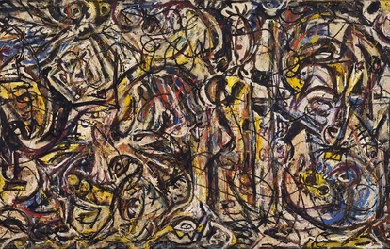
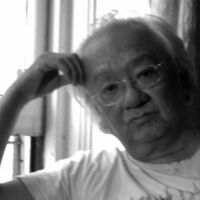
John Yau (born 1950) is an American poet and critic who lives in New York City. He received his B.A. from Bard College in 1972 and his M.F.A. from Brooklyn College in 1978. He has published over 50 books of poetry, artists' books, fiction, and art criticism. According to Matthew Rohrer's profile on Yau from Poets & Writers Magazine, Yau's parents settled in Boston after emigrating from China in 1949. His father was a bookkeeper. Yau characterizes his father as an outsider - "My father was half English and half Chinese [...] so he never fit in." As a child Yau was friends with the son of the Chinese-born abstract painter John Way. By the late 1960s Yau was exposed to, "a lot of anti-war poetry readings in Boston [and] so I'd heard Robert Bly, Denise Levertov, Galway Kinnell, people like that. I don't know - Robert Kelly (poet) just seemed a different kind of poet. Mysterious, in a way. He was interested in the occult, in gnosticism and abstract art - things that had a particular appeal to me." According to Rohrer, Yau's decision to attend Bard College was motivated by his admiration of Kelly. Yau's most recent books are Exhibits (Letter Machine Editions, 2010), A Thing Among Things: The Art of Jasper Johns (Distributed Art Publishers, 2009), and The Passionate Spectator: Essays on Art and Poetry (University of Michigan Press, 2006). His collections of poetry include Paradiso Diaspora (Penguin, 2006), Ing Grish, with Paintings by Thomas Nozkowski (Saturnalia, 2005),Borrowed Love Poems (Penguin, 2002), Forbidden Entries (Black Sparrow, 1996), Berlin Diptychon with Photographs by Bill Barrette (Timken, 1995), Edificio Sayonara (Black Sparrow, 1992),Corpse and Mirror (Holt & Rinehardt, 1983), a National Poetry Series book selected by John Ashbery, and Broken Off by The Music (Burning Deck, 1981). Artists' books include projects with Squeak Carnwath, Richard Tuttle, Norbert Prangenberg, Hanns Schimannsky, Archie Rand, Norman Bluhm, Pat Steir, Suzanne McClelland, Robert Therrien, Leiko Ikemura, and Jürgen Partenheimer (a.o.), his books of art criticism include The United States of Jasper Johns (1996) and In the Realm of Appearances: The Art of Andy Warhol (1993). He has also edited Fetish (1998), a fiction anthology. Yau has been the Arts editor of The Brooklyn Rail since March 2004. He also runs a small press, Black Square Editions, which publishes translations, poetry, and fiction. Yau currently teaches art criticism at Mason Gross School of the Arts, Rutgers University. Awards Yau has received awards and grants from Creative Capital/Warhol Foundation, the Academy of American Poets (Lavan Award), The American Poetry Review (Jerome Shestack Award), the Ingram Merrill Foundation, the National Endowment for the Arts, the New York Foundation for the Arts, the General Electric Foundation, the John Simon Guggenheim Memorial Foundation, and the Foundation for Contemporary Arts. Bibliography * 1983 – Corpse and Mirror (Poems) * 1989 – Radiant Silhouette: Selected Writing 1974-1988 (Poems and prose) * 1992 – Edificio Sayonara (Poems) * 1993 – In the Realm of Appearances: The Art of Andy Warhol (Critique) * 1995 – Berlin Diptychon (Poems) * 1995 – Hawaiian Cowboys (Short stories) * 1996 – Forbidden Entries (Poems) * 1996 – The United States of Jasper Johns (Critique) * 1998 – Fetish (Editor) * 1998 – My Symptoms (Short Stories) * 1999 – In Company: Robert Creeley's Collaborations (Essay) * 2002 – Borrowed Love Poems (Poems) * 2005 - Ing Grish * 2006 - Paradiso Diaspora * 2006 – "andalusia" Authors: John Yau (Poems), Leiko Ikemura, Verlag: Weidle Verlag, ISBN 3-931135-96-9 * 2008 - A Thing Among Things: The Art of Jasper Johns, Distributed Art Publishers, ISBN 1933045620 * 2010 - Exhibits (Poem) * 2012 - Further Adventures in Monochrome (Copper Canyon Press) (Poetry) References Wikipedia – http://en.wikipedia.org/wiki/John_Yau

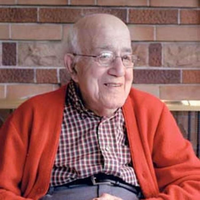
Carl Rakosi (November 6, 1903– June 25, 2004) was the last surviving member of the original group of poets who were given the rubric Objectivist. He was still publishing and performing his poetry well into his 90s. Early life Rakosi was born in Berlin and lived there and in Hungary until 1910, when he moved to the United States to live with his father and stepmother. His father was a jeweler and watchmaker in Chicago and later in Gary, Indiana. The family lived in semi-poverty but contrived to send him to the University of Chicago and then to the University of Wisconsin–Madison. During his time studying at the university level, he started writing poetry. On graduating, he worked for a time as a social worker, then returned to college to study psychology. At this time, he changed his name to Callman Rawley because he felt he stood a better chance of being employed if he had a more American-sounding name. After a spell as a psychologist and teacher, he returned to social work for the rest of his working life. Early writings At the University of Wisconsin–Madison, Rakosi edited the Wisconsin Literary Magazine. His own poetry at this stage was influenced by W. B. Yeats, Wallace Stevens, and E. E. Cummings. He also started reading William Carlos Williams and T. S. Eliot. By 1925, he was publishing poems in The Little Review and Nation. Pound and the Objectivists By the late 1920s, Rakosi was in correspondence with Ezra Pound, who prompted Louis Zukofsky to contact him. This led to Rakosi’s inclusion in the Objectivist issue of Poetry and in the Objectivist Anthology. Rakosi himself had reservations about the Objectivist tag, feeling that the poets involved were too different from each other to form a group in any meaningful sense of the word. He did, however, especially admire the work of Charles Reznikoff. Later career Like a number of his fellow Objectivists, Rakosi abandoned poetry in the 1940s. After his 1941 Selected Poems he dedicated himself to social work and apparently neither read nor wrote poetry. Years earlier, shortly after his twenty-first birthday, Rakosi had legally changed his name to Callman Rawley, believing that he would not find work with his foreign-sounding name. Under his adopted name, he served as head of the Minneapolis Jewish Children’s and Family Service from 1945 until his retirement in 1968. A letter from the English poet Andrew Crozier about his early poetry was the trigger that started Rakosi writing again. His first book in 26 years, Amulet, was published by New Directions in 1967 and his Collected Poems in 1986 by the National Poetry Foundation. These were followed by several more volumes and by readings across the United States and Europe. In early November 2003, Rakosi celebrated his 100th birthday with friends at the San Francisco Public Library. Upon his death Jacket Magazine editor John Tranter observed the following: Poet Carl Rakosi died on Friday afternoon June 25 at the age of 100, after a series of strokes, in his home in San Francisco. My wife Lyn and I were passing through California in November 2003, and we stopped by to have a coffee with Carl at his home in Sunset. By a lucky coincidence, it happened to be his 100th birthday. He was, as always, kind, thoughtful, bright and alert, and as sharp as a pin. We felt privileged to know him. External links Rakosi at Modern American Poetry The Carl Rakosi Papers in the Mandeville Special Collections Library at UC San Diego Carl Rakosi Reading and Interview on KPFA’s Ode To Gravity, 13 May 1971 (from The Internet Archive) Obituary in The Guardian, UK Carl Rakosi feature at Jacket Magazine includes Rakosi in conversation with Tom Devaney & Olivier Brossard; link to audio recordings at University of Pennsylvania, and poems, dedications & remembrances from Jane Augustine, Robert Creeley, Laurie Duggan, Michael Heller and Kent Johnson “Add-Verse” a poetry-photo-video project Rakosi participated in References Wikipedia—https://en.wikipedia.org/wiki/Carl_Rakosi
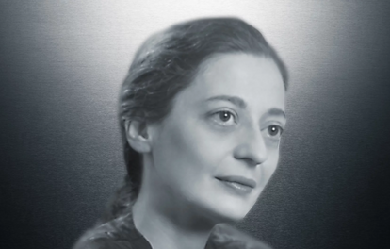
Helen Joy Davidman (18 April 1915 – 13 July 1960) was an American poet and writer. Often referred to as a child prodigy, she earned a master's degree from Columbia University in English literature at age twenty in 1935. For her book of poems, Letter to a Comrade, she won the Yale Series of Younger Poets Competition in 1938 and the Russell Loines Award for Poetry in 1939. She was the author of several books, including two novels.
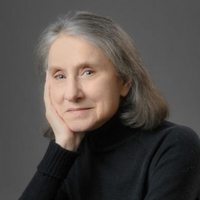
Maryann Corbett (née Zillotti, Washington, D.C.) is an American poet, medievalist, and linguist.She grew up in northern Virginia. She did her undergraduate work at the College of William and Mary in Williamsburg, Virginia, and graduated with a doctorate in English from the University of Minnesota.Her work has appeared in Southwest Review, Barrow Street, Rattle, River Styx, Atlanta Review, The Evansville Review, Measure, Literary Imagination, The Dark Horse, Italian Americana, Mezzo Cammin, Linebreak, Subtropics, Verse Daily, American Life in Poetry, The Poetry Foundation, The Writer’s Almanac, and many other venues in print and online, as well as an assortment of anthologies, including The Best American Poetry 2018. She has been a several-time Pushcart and Best of the Net nominee; a finalist for the 2009 Morton Marr Prize, the 2010 Best of the Net anthology, and the 2011 and 2016 Able Muse Book Prize; and a winner of the Lyric Memorial Award, the Willis Barnstone Translation Prize, and the Richard Wilbur Award. Her third book, Mid Evil, is the Wilbur Award winner and has been published by the University of Evansville Press.She has worked as a writing teacher and indexer for the Minnesota Legislature. She lives in St. Paul, Minnesota.
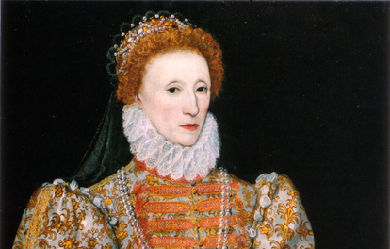
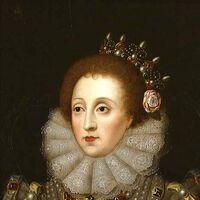
The reign of Queen Elizabeth I is often referred to as The Golden Age of English history. Elizabeth was an immensely popular Queen, and her popularity has waned little with the passing of four hundred years. She is still one of the best loved monarchs, and one of the most admired rulers of all time. She became a legend in her own lifetime, famed for her remarkable abilities and achievements. Yet, about Elizabeth the woman, we know very little. She is an enigma, and was an enigma to her own people. Elizabeth was the daughter of King Henry VIII and his second wife, Anne Boleyn. She was born on 7 September 1533 at Greenwich Palace. Her birth was possibly the greatest disappointment of her father's life. He had wanted a son and heir to succeed him as he already had a daughter, Mary, by his first wife, Katherine of Aragon. He had not divorced Katherine, and changed the religion of the country in the process, to have only another daughter. Elizabeth's early life was consequently troubled. Her mother failed to provide the King with a son and was executed on false charges of incest and adultery on 19 May 1536. Anne's marriage to the King was declared null and void, and Elizabeth, like her half-sister, Mary, was declared illegitimate and deprived of her place in the line of succession. The next eight years of Elizabeth's life saw a quick succession of stepmothers. There was Jane Seymour who died giving birth to the King's longed for son, Edward; Anne of Cleves who was divorced; Catherine Howard who was beheaded; and finally Catherine Parr. For generations, historians have debated whether the constant bride changing of her father was responsible for Elizabeth's apparent refusal to marry. It is certainly possible that the tragic fates of Anne Boleyn and Catherine Howard impressed upon her a certain fear of marriage, but there may have been other reasons for the Queen's single state, such as a fear of childbirth, which claimed the lives of a significant number of women in this period. Even if the Queen had no personal reservations about marriage, there were political problems with almost every contender for her hand. Religion was a major divisive issue, and there was also the problem of whether Elizabeth would have to relinquish any of her royal powers to a husband in an age when the political sphere was exclusively male. As a child, Elizabeth was given a very impressive education. It had become popular amongst the nobility to educate daughters as well as sons and Elizabeth excelled at her studies. She was taught by famous scholars such as William Grindal and Roger Ascham, and from an early age it was clear that she was remarkably gifted. She had an especial flare for languages, and by adulthood, she could reputedly speak five languages fluently. Elizabeth's adolescence was no easier than her childhood. While the King lived, she was safe from political opportunists, but when he died in the January of 1547, and his young son became King Edward VI, she was vulnerable to those who saw her as a political pawn. Despite being officially illegitimate, Henry had reinstated his daughters in the line of succession. Mary was to follow Edward, and Elizabeth was to follow Mary. This meant that Elizabeth was now second in line to the throne. Edward was too young to rule himself as he was only nine years old, so his uncle, Edward Seymour, became Protector of England. His younger brother, Thomas Seymour, was jealous of his position and attempted to overthrow him. His scheme, which involved an attempted kidnapping of the Boy King, cost him his life. He had made no secret of his desire to marry Elizabeth (in Tudor times a girl was considered of marriageable age at twelve) so she was implicated in his plot. It was treason for an heir to the throne to marry without the consent of the King and his Council, and at only fifteen years of age, Elizabeth had to persuade her interrogators that she knew nothing of the plot and had not consented to marry the King's uncle. She succeeded in defending her innocence, but rumors of an illicit affair with Seymour, all the more scandalous because he had been married to her last step-mother, Katherine Parr, (before she died in childbirth), plagued her long afterwards. Elizabeth again found herself implicated in treason after the Wyatt rebellion of 1554. Edward had died in the summer of 1553 from prolonged ill health, and Elizabeth's half-sister, Mary, was now Queen Mary I of England after a brief fight for the throne against the scheme of John Dudley, Duke of Northumberland, to make his daughter in law, Jane Grey, queen. Mary was not a particularly popular monarch, and was suspicious of her Protestant half-sister. It was thus not difficult to persuade her that Elizabeth may have been conspiring with Thomas Wyatt and his men to seize the throne. Whether or not the rebellion was to make Elizabeth queen is uncertain, and it is also unknown whether Elizabeth had any knowledge of the conspirators plans. Even if she did have knowledge of them, there is no evidence that she approved of the actions of Wyatt and his followers. Elizabeth said she was innocent of the accusations made against her, but she was still arrested and sent to the Tower of London as a prisoner. Many of those surrounding the Queen would have liked Elizabeth to have been executed, but there was no evidence against her and she was popular with the people. Elizabeth was kept a captive at the Tower for two months and then removed to Woodstock Manor in Oxfordshire, where she was kept a prisoner for a year. The house itself was uninhabitable so she had to be lodged in the gatehouse with her servants. It was only at the behest of the Queen's husband, Philip of Spain, that she was allowed to return to her childhood home of Hatfield in Hertfordshire. Philip was aware of the Queen's poor health and wanted to gain the friendship of Elizabeth to ensure peaceable relations between England and Spain should his wife die and Elizabeth succeed to the throne. Elizabeth did finally succeed to the throne on 17th November 1558. It was a moment of supreme triumph for the unwanted daughter who had spent her life in the shadow of the court, cast aside and forgotten. The years following the death of her father had called for sobriety and caution, but now that she was Queen, Elizabeth was determined to enjoy her new found freedom and live life to the full. She loved all kinds of sports, especially horse riding, and in the early years of her reign spent many an hour riding. She also loved hunting, hawking, bear baiting, and watching the male courtiers excel at jousts or other sporting contests. She loved music and dancing, pageantry and masques, and could even play the virginals and the lute herself with skill. She had no time for the Puritan theologians who deemed such things impious. She also loved watching plays and created the atmosphere responsible for the flourishing of the literary masterpieces of the period against the Puritan demands for the closure of all theaters and playhouses. Elizabeth was crowned Queen on Sunday 15th January 1559. In the months that followed, the new Queen re-established the Protestant Church in England and restored the debased coinage. Perhaps to appease Catholics or to appease those who did not believe a woman could become head of the church, Elizabeth became Supreme Governor of the Church of England, rather than Supreme Head as her father had been. While it is impossible to know what exactly the Queen's personal religious beliefs were, the Church she established is an indication of them. She was a committed Protestant, and reputedly spent time in prayer every day, but she was probably a conservative Protestant. She liked candles and crucifixes in her private chapel, liked church music, and enjoyed the more traditional style of worship in contrast to the sermon based service that was becoming popular in some Protestant circles. She did not like religious extremism and did not want to persecute any of her people for their religious beliefs. However, the tenacious political nature of the Catholic/Protestant split meant that her government had to take a harsher line towards Catholics than she wanted. Now that Elizabeth was Queen, proposals of marriage flooded in, but Elizabeth committed herself to none of them. In a genius of political wheeling and dealing, she managed to use her single state to benefit the country by using the bait of marriage to draw in enemies, or to frighten them by suggesting she would marry one of their foes. Whatever Elizabeth's personal feelings towards marriage, on two occasions she did come close to matrimony. For many years, the most serious contender for her hand was Robert Dudley, created Earl of Leicester in 1564. He and Elizabeth had known each other for years and had been imprisoned in the Tower of London at the same time. He was the only serious personal love interest of the Queen's life. Politically, however, marrying him would have been a disaster. He was unpopular as he was the son of the traitor Northumberland, and was loathed even more after his wife was found dead in mysterious circumstances. It was thought he had murdered her so he would be free to marry Elizabeth. The other serious contender for the Queen's hand was Francis, Duke of Alencon/Anjou, heir to the French throne. But again, political considerations made the match ultimately impossible. Not marrying and having a child of her own meant that the succession was unsettled. Elizabeth did not like to talk about the succession and tried to have talk of it suppressed, but people were anxious about what would happen to the country when she died. However, having a child of her own may not have been an end to all problems. In the eyes of Catholics, Elizabeth was illegitimate and had no right to the throne. To them, Mary, Queen of Scots was the rightful Queen of England. Plots were made to make Mary queen and these would have been formed regardless of whether Elizabeth had a child or not. This is perhaps especially so when Mary was Elizabeth's prisoner following her disastrous reign in Scotland. Forced to flee her own country, having abdicated her throne in favor of her son, she landed in England, seeking Elizabeth's help in restoring her to her kingdom. She was immediately imprisoned. This was as much to protect her as to minimize the danger she posed to Elizabeth. Mary was kept a prisoner for almost twenty years. In that time, Elizabeth refused to hear about executing her cousin, but Mary's complicity in the Babington plot of 1586 made the execution, in the eyes of many, unavoidable. It was a traumatic time for Elizabeth, and for a while it seemed that she would not have the strength to go ahead with the execution, but she did, and Mary was executed at Fotheringay Castle on 8 February 1587. Relations between Elizabeth and Philip, now King of Spain, had begun amicably, but had deteriorated over the years as their different political and religious agendas clashed. By 1588 they were enemies of the first-rate. Philip had spoken of invading England and dethroning Elizabeth for years but the execution of the Queen of Scots gave him an added incentive. Now he could claim the English throne for himself and not for her. In the summer of 1588 he sent his mighty fleet against England. But by superior tactics, ship design, and sheer good fortune, the English defeated them. Elizabeth's popularity reached its zenith. It was also another personal triumph as she had proved that she, a woman, could lead in war as well as any man. Elizabeth was dedicated to her country in a way few monarchs had been or have been since. Elizabeth had the mind of a political genius and nurtured her country through careful leadership and by choosing capable men to assist her, such as Sir William Cecil and Sir Francis Walsingham. Elizabeth was a determined woman, but she was not obstinate. She listened to the advice of those around her, and would change a policy if it was unpopular. In appearance she was extravagant, in behavior sometimes flippant and frivolous, but her approach to politics was serious, conservative, and cautious. When she ascended the throne in 1558, England was an impoverished country torn apart by religious squabbles. When she died at Richmond Palace on the 24th March 1603, England was one of the most powerful and prosperous countries in the world.
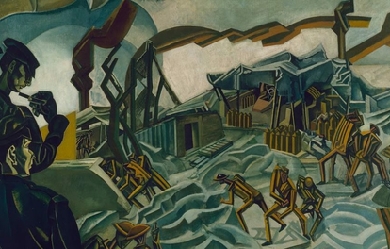
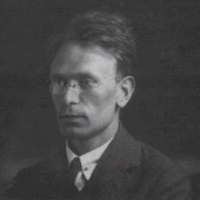
Frank Stuart Flint (19 December 1885– 28 February 1960) was an English poet and translator who was a prominent member of the Imagist group. Ford Madox Ford called him “one of the greatest men and one of the beautiful spirits of the country”. Life and career British poet, and a poetry reviewer with an unusual gift for language, a self-educated man, born in Islington, London; he left school at 13 and worked in various capacities before beginning his long and distinguished career in the Civil Service in 1904. He published a book on French poets, starting in 1908 and by 1910, his intensive private study had gained him recognition as one of Britain’s most highly informed authorities on modern French poetry. His first collection of poems, In the Net of the Stars (1909), consisted mainly of conventional love lyrics. Flint is mostly known for his participation in the “School of Images” with Ezra Pound and T. E. Hulme in 1909, of which he gave an account in the “Poetry Review” in 1909, and which was to serve as the theoretical basis for the later Imagist movement (1913). His subsequent association with Ezra Pound and T. E. Hulme, together with his deepening knowledge of innovative French poetic techniques, radically affected his poetry’s development. Glenn Hughes reports Flint ‘claiming to inventing the open verse form ’unrimed cadence’, by cutting away all personal emotion, where symbolism was barely suggested, but instead shortened and hardened, and where meter was supplanted by cadence’. Hughes explaining Flint’s form is best understood ‘by comparing his poem ’ A Swan Song’(Published in 1909 and later by Pound in 1914 in 'Des Imagistes’) and, his later ‘cadenced ’ version thereof, ' The Swan’, a poem so devoid of superfluities and cliches, to achieve that perfect chiseled beauty which is the essence of classical art’ In 1916 Flint was described as having ' the gift of artistic courage clothed in beauty which will help build the poetry of the future’. Flint himself, considered his 'cadenced’ form to be a reversion to the real tradition of the English poetry of Cynewulf in the 'Riddle, The Nightingale’ Earlier Flint had published a series of articles on contemporary French poets (1912) that much influenced his contemporaries. In 1914 he was included by Pound in Des Imagistes. He entered into a short-lived dispute with Pound as to each one’s relative contribution to the Imagist movement. During the 1930s Flint was among a number of poets who moved away from poetry and towards economics, working for the Statistics Division of the Ministry of Labour writing that "[t]he proper study of mankind is, for the time being, economics". Flint would go on to publish an article entitled The Plain Man and Economics in The Criterion in 1937. He became a leading spokesman for Imagism and exemplified its methods in the concentration and clarity displayed by much of the work in Cadences (1915). Otherworld, his third and last collection, was published in 1920, its lengthy title poem responding to the desolation of the First World War in its meditations on more viable modes of existence. For some years after he ceased publishing poetry, Flint continued to contribute influential articles to the Times Literary Supplement and The Criterion. He was also a prolific translator of prose works and poetry by French, German, and classical authors. With the exception of some short works arising from his activities as a civil servant, he ceased writing for publication entirely in the early 1930s. Poetry In the Net of the Stars, BiblioBazaar (Jun 2009) ISBN 978-1-110-85842-2 Cadences, Poetry Bookshop. London, 1915 Otherworld: Cadences, Poetry Bookshop, 1920 Translations The Love Poems of Emile Verhaeren, Houghton Mifflin, Boston 1916 The Closed Door, by Jean de Bosschere, John Lane, London 1917 Essays etc ‘Contemporary French Poetry’, article in The Poetry Review, August 1912 ‘Some Modern French Poets( A Commentarey with a Specimen) The Chapbook: A Monthly Miscellany, London October 1919 ‘ The Younger French Poets The Chapbook; A Monthly Miscellany, London November 1920 ‘The History of Imagism’, essay in The Egoist, May 1915 ‘The Poetry of HD ’ essay in The Egoist, May 1915 ‘ Six French Poets’ essay in The Egoist, January 1916 ‘Imagisme, Poetry Chicago March 1913 References Wikipedia—https://en.wikipedia.org/wiki/F._S._Flint
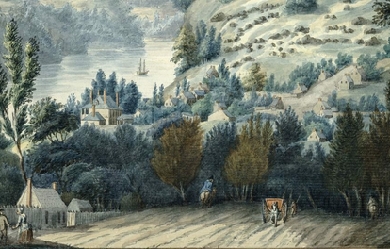
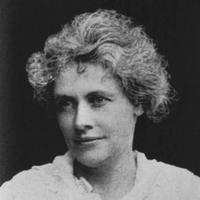
Florence Randall Livesay, daughter of Stephen and Mary Louisa Randal, was born at Compton, P. Q., and educated at Compton Ladies' College, now King's Hall. She taught for one year in a private school in New York, and subsequently for seven years was a member of the staff of the Evening Journal, Ottawa,–editor of the Woman's Page. In 1902, the Hon. Joseph Chamberlain requested Canada to send some teachers to the Boer Concentration Camps and Miss Randal, offering her services, was one of the forty chosen. She remained for one year and then returned to Canada, locating at Winnipeg. She joined the staff of the Winnipeg Telegram, and three years later that of the Manitoba Free Press. For several years she edited the Children's Department of the latter, but now writes as a 'free lance.' In 1908, she married Mr. J. Fred. B. Livesay of Winnipeg, Manager and Secretary of the Western Associated Press, Limited, and is now the mother of two girls. Of recent years, Mrs. Livesay has contributed poems, short stories and articles to Canadian and American magazines and journals, and a volume of her verse, entitled Songs of Ukraina is now being published by J. M. Dent & Sons. Mrs. Livesay's folk songs translated from the Ruthenian are unusual and notable, but her poetical gift is quite as discernible in her other poems. She has the imagination and the practiced touch of the artist., daughter of Stephen and Mary Louisa Randal, was born at Compton, P. Q., and educated at Compton Ladies' College, now King's Hall. She taught for one year in a private school in New York, and subsequently for seven years was a member of the staff of the Evening Journal, Ottawa,–editor of the Woman's Page. In 1902, the Hon. Joseph Chamberlain requested Canada to send some teachers to the Boer Concentration Camps and Miss Randal, offering her services, was one of the forty chosen. She remained for one year and then returned to Canada, locating at Winnipeg. She joined the staff of the Winnipeg Telegram, and three years later that of the Manitoba Free Press. For several years she edited the Children's Department of the latter, but now writes as a 'free lance.' In 1908, she married Mr. J. Fred. B. Livesay of Winnipeg, Manager and Secretary of the Western Associated Press, Limited, and is now the mother of two girls. Of recent years, Mrs. Livesay has contributed poems, short stories and articles to Canadian and American magazines and journals, and a volume of her verse, entitled Songs of Ukraina is now being published by J. M. Dent & Sons. Mrs. Livesay's folk songs translated from the Ruthenian are unusual and notable, but her poetical gift is quite as discernible in her other poems. She has the imagination and the practiced touch of the artist.
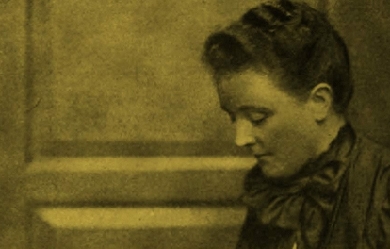
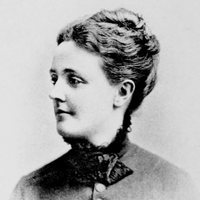
Sarah Orne Jewett (September 3, 1849– June 24, 1909) was an American novelist, short story writer and poet, best known for her local color works set along or near the southern seacoast of Maine. Jewett is recognized as an important practitioner of American literary regionalism. Early life Jewett’s family had been residents of New England for many generations, and Sarah Orne Jewett was born in South Berwick, Maine. Her father was a doctor specializing in “obstetrics and diseases of women and children.” and Jewett often accompanied him on his rounds, becoming acquainted with the sights and sounds of her native land and its people. As treatment for rheumatoid arthritis, a condition that developed in early childhood, Jewett was sent on frequent walks and through them also developed a love of nature. In later life, Jewett often visited Boston, where she was acquainted with many of the most influential literary figures of her day; but she always returned to South Berwick, small seaports near which were the inspiration for the towns of “Deephaven” and “Dunnet Landing” in her stories. Jewett was educated at Miss Olive Rayne’s school and then at Berwick Academy, graduating in 1866. She supplemented her education through an extensive family library. Jewett was “never overtly religious,” but after she joined the Episcopal church in 1871, she explored less conventional religious ideas. For example, her friendship with Harvard law professor Theophilus Parsons stimulated an interest in the teachings of Emanuel Swedenborg, an eighteenth-century Swedish scientist and theologian, who believed that the Divine “was present in innumerable, joined forms—a concept underlying Jewett’s belief in individual responsibility.” Career She published her first important story in the Atlantic Monthly at age 19, and her reputation grew throughout the 1870s and 1880s. Her literary importance arises from her careful, if subdued, vignettes of country life that reflect a contemporary interest in local color rather than plot. Jewett possessed a keen descriptive gift that William Dean Howells called “an uncommon feeling for talk—I hear your people.” Jewett made her reputation with the novella The Country of the Pointed Firs (1896). A Country Doctor (1884), a novel reflecting her father and her early ambitions for a medical career, and A White Heron (1886), a collection of short stories are among her finest work. Some of Jewett’s poetry was collected in Verses (1916), and she also wrote three children’s books. Willa Cather described Jewett as a significant influence on her development as a writer, and “feminist critics have since championed her writing for its rich account of women’s lives and voices.” Later life On September 3, 1902, Jewett was injured in a carriage accident that all but ended her writing career. She was paralyzed by a stroke in March 1909, and she died on June 24 after suffering another. The Georgian home of the Jewett family, built in 1774 overlooking Central Square at South Berwick, is now a National Historic Landmark and Historic New England museum called the Sarah Orne Jewett House. Jewett never married, but she established a close friendship with writer Annie Adams Fields (1834–1915) and her husband, publisher James Thomas Fields, editor of the Atlantic Monthly. After the sudden death of James Fields in 1881, Jewett and Annie Fields lived together for the rest of Jewett’s life in what was then termed a “Boston marriage”. Some modern scholars have speculated that the two were lovers. Both women “found friendship, humor, and literary encouragement” in one another’s company, traveling to Europe together and hosting “American and European literati.” In France Jewett met Thérèse Blanc-Bentzon with whom she had long corresponded and who translated some of her stories for publication in France.
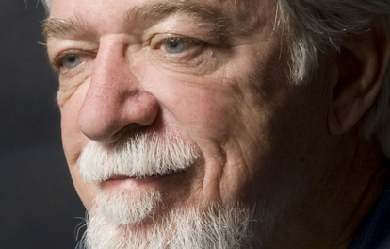
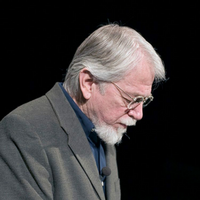
B.H. Fairchild (born 1942) is an American poet and former college professor. His most recent book is Usher (W.W. Norton, 2009), and his poems have appeared in literary journals and magazines including The New Yorker, The Paris Review, The Southern Review, Poetry, TriQuarterly, The Hudson Review, Salmagundi, The Sewanee Review. His third poetry collection, The Art of the Lathe, winner of the 1997 Beatrice Hawley Award (Alice James Books, 1998), brought Fairchild’s work to national prominence, garnering him a large number of awards and fellowships including the William Carlos Williams Award, Kingsley Tufts Poetry Award, California Book Award, Natalie Ornish Poetry Award, PEN Center USA West Poetry Award, National Book Award (finalist), Capricorn Poetry Award, and Rockefeller and Guggenheim fellowships. The book ultimately gave him international prominence, as The Way Weiser Press in England published the U.K. edition of the book. The Los Angeles Times wrote that “The Art of the Lathe by B.H. Fairchild has become a contemporary classic—a passionate example of the plain style, so finely crafted and perfectly pitched... workhorse narratives suffused with tenderness and elegiac music.” Fairchild has written that a fellowship from the National Endowment for the Arts was vital to his career as a poet: "It’s very simple: without an NEA Fellowship in 1989-90, I would not have been able to complete my second book, Local Knowledge, nor have had the necessary time to compose the core poems for The Art of the Lathe, my third book, which, I am proud to say, received the Kingsley Tufts Award and was a finalist for the National Book Award, thus bringing my work to a wider audience than the immediate members of my family and also, therefore, making future work possible.” He was born in Houston, Texas, and grew up in small towns in the oil fields of Oklahoma, Texas, and Kansas, later working through high school and college for his father, a lathe machinist. He taught English and Creative Writing at California State University, San Bernardino and Claremont Graduate University. He lives in Claremont, California with his wife, Patti, and dog, Minnie. As of 2011, it has been announced that Fairchild will teach at The University of North Texas. Books * Full-Length Poetry Collections * The Blue Buick: New and Selected Poems (W. W. Norton, 2014) * Usher (W. W. Norton, 2009) * Local Knowledge (W. W. Norton, 2005, second edition) * Early Occult Memory Systems of the Lower Midwest (W. W. Norton, 2003) * The Arrival of the Future (Alice James Books, 2000, second edition) * The Art of the Lathe (Alice James Books, 1998) * Local Knowledge (Quarterly Review of Literature, Princeton, NJ, 1991) * The Arrival of the Future (illustrated by Ross Zirkle, Swallow’s Tale Press, 1985; Livingston Publishing, 1985) * Chapbooks * The System of Which the Body Is One Part (State Street Press, 1988) * Flight (Devil’s Millhopper Press, 1985) * C & W Machine Works (Trilobite Press, 1983) * Special Editions * Trilogy, with an introduction by Paul Mariani and engravings by Barry Moser. (Pennyroyal Press, 2008) * Literary Criticism * Such Holy Song: Music as Idea, Form, and Image in the Poetry of William Blake (Kent State University Press, 1980) Honors and awards * 2015 The Paterson Poetry Prize * 2015 The Blue Buick, one of two books of poetry chosen for the RUSA/ALA Notable Books List * 2014 John William Corrington Award for Literary Excellence from Centenary College * 2014 Pushcart Prize in Poetry for “The Story” * 2011 Pushcart Prize in the Essay for “Logophilia” * 2010 Best of the Net Award for “The Student Assistant” * 2009 Pushcart Prize in Poetry for “Frieda Pushnik” * 2007 University of Kansas Distinguished Achievement Award * 2005 Lannan Foundation Residency in Marfa, Texas * 2005 Gold Medal in Poetry, California Book Awards * 2005 Aiken Taylor Award for Modern American Poetry * 2005 National Endowment for the Arts - Literature Fellowship in Poetry * 2004 Bobbitt National Prize for Poetry * 2002 Arthur Rense Poetry Prize, from the American Academy of Arts and Letters * 2002 National Book Critics Circle Award, for Early Occult Memory Systems of the Lower Midwest * 2001 The Frost Place poet in residence * 2000 Rockefeller Fellowship * 1999 Guggenheim Fellowship * 1999 William Carlos Williams Award * 1999 Kingsley Tufts Poetry Award * 1999 California Book Award * 1999 Natalie Ornish Poetry Award * 1999 PEN Center USA West Poetry Award * 1998 Finalist, National Book Award * 1997 Beatrice Hawley Award * 1996 Capricorn Poetry Award * 1988 National Endowment for the Arts - Literature Fellowship in Poetry * Walter E. Dakin Fellowship to the Sewanee Writers Conference * National Writers’ Union First Prize * AWP Anniversary Award References Wikipedia—https://en.wikipedia.org/wiki/B._H._Fairchild
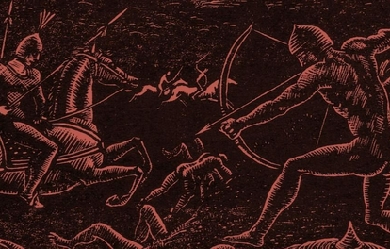
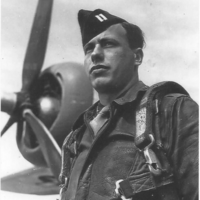
Ralph Nicholas Chubb (8 February 1892– 14 January 1960) was an English poet, printer, and artist. Heavily influenced by Whitman, Blake, and the Romantics, his work was the creation of a highly intricate personal mythology, one that was anti-materialist and sexually revolutionary. Life Ralph Chubb was born in Harpenden, Hertfordshire. His family moved to the historic town of St Albans before his first birthday. Chubb attended St Albans School and Selwyn College, Cambridge before becoming an officer in the First World War. He served with distinction but developed neurasthenia, and he was invalided out in 1918. From 1919 to 1922 Chubb studied at the Slade School of Art in London. It was there that he met Leon Underwood and other influential artists. He went on to contribute several articles and poems for Underwood’s magazine, The Island. Although his work was displayed at such venues as the Goupil Gallery and the Royal Academy of Art, his paintings did not sell. There are several in public collections in Britain. His major painting The Well (1920) is in Wakefield; Southampton has bathers with boys wrestling, and there are nudes at Leamington, all illustrated in the Public Art Foundation catalogues. He moved with his family to the village of Curridge, near Newbury in Berkshire. He began to devote his artistic talents to the printed works which would remain his chief labour in life. His books were created in several chief phases. His typeset books of the twenties were a humble offering, exhibiting Chubb’s talent for woodcutting and his quaint, visually inspired poetry. Even at this early stage, Chubb’s lifelong obsession with adolescent males was beginning to become apparent. He expands upon this theme more explicitly in An Appendix, a pederastic and spiritualist manifesto duplicated from a cursive manuscript. An Appendix was the first of his printed works to be printed in his own hand; he soon followed this with the first of his opulent lithographic books, The Sun Spirit. Throughout the nineteen-thirties, Chubb’s books became more elaborate and appealing. Water Cherubs crystallizes Chubb’s aesthetic of the youthful male form, and The Secret Country unfolds like an illuminated manuscript, recounting stories of Chubb’s family and his journeys among the Romani of the New Forest in Hampshire. Chubb’s printing press was interrupted by the war, but in 1948 he entered into the third period of career with two massive volumes: The Child Of Dawn and Flames of Sunrise. Each page of these two volumes is crowded with obscure digressions on Chubb’s mythology and drawings of symbolic significance. Briefly summarized, Chubb’s vision was a prophecy of the redemption of 'Albion’, or England, by the boy-god Ra-el-phaos, of whom Ralph claimed himself to be the prophet and herald. This echoes an earlier announcement to be found in The Heavenly Cupid: I announce a secret event as tremendous and mysterious as any that has occurred in the spiritual history of the world. I announce the inauguration of a Third Dispensation, the dispensation of the Holy Ghost on earth, and the visible advent thereof on earth in the form of a Young Boy of thirteen years old, naked perfect and unblemished. Other themes run through all of Chubb’s work. He was forever haunted by the memory of a young chorister at St Albans who disappeared from Chubb’s life just as he had summoned up the courage to speak to him. Similarly, a brief sexual relationship with another boy when Ralph was 19 seemed to serve as a template for future visions of paradise. Chubb’s books become progressively more self-involved and paranoid. Seeking to articulate his pederastic desires, he created a personal mythology which explained everything in terms only he could understand. Nonetheless, Chubb’s work is of fascinating psychological significance; each of the various angels, knights, seers, and boy-gods in his dream world represents an aspect of his introspective and persecuted self. Chubb, like many other artists of his generation, resented science for its intrusion into his imagination. He disparaged the scientists, orthodox theologians, and politicians of world, accusing them of squelching his personal thirst for liberty. In 1927 he wrote: Existence, besides being a miracle, is a symbol. Albeit here for inscrutable purposes the spirit is only to be discerned as it were in a distorting-glass. (The Book of God’s Madness) Chubb sought to persuade his readers in An Appendix of the verity of his solipsism by illustrating some examples of serendipitous events from his life. His aim is more on the mark when he excoriates the taboos and frustrations of modern life. The green green hills, the blue blue sky, blue sea, great golden SUN, yellow dandelions, the pink naked beauty of ripe boyhood, deathless free and happy, brimming with health. This I must have. Nothing less than this can ever satisfy me! GIVE ME MY HEAVEN! GIVE ME MY HEAVEN! (Water-Cherubs) Failing in health and facing continuing legal and financial difficulties, Ralph Chubb abandoned his controversial works in the mid-fifties, and began to collect and reprint his early poems and childhood memories. Treasure Trove and The Golden City (published posthumously) are devoid of the usual profusion of naked, lissome youths, but instead offer a glimpse into his youthful imagination, and some of his most charming poetry. In the final years of his life he donated his remaining volumes to the national libraries of Britain. He died peacefully at Fair Oak Cottage in Hampshire and was buried next to his parents at the Kingsclere Woodland Church. Chubb’s own assessment of his work conforms to the general critical reaction: I do not necessarily claim to be a great artist or writer; but I claim to be a true spirit– this is a subtler test. Seek me out; but you may not find me. (An Appendix) Works * None of the editions of Chubb’s books exceed more than 200 copies, and some of his lithographed masterworks exist in only 30 or 40 copies, of which a mere 6 or 7 are meticulously hand-colored by Chubb. * The dates and titles of Chubb’s printed works are given below. Early typeset works * 1924 Manhood * 1924 The Sacrifice of Youth * 1925 A Fable of Love & War * 1927 The Cloud & the Voice * 1928 Woodcuts * 1928 The Book of God’s Madness * 1929 An Appendix (duplicated hand-written text) Lithographed texts * 1930 Songs of Mankind * 1931 The Sun Spirit * 1934 The Heavenly Cupid * 1935 Songs Pastoral and Paradisal (illustrated by Vincent Stuart; script by Helen Hinkley) * 1936 Water Cherubs * 1939 The Secret Country Post-war prophetic texts * 1948 The Child of Dawn * 1953 Flames of Sunrise Juvenalia and early romances * 1957 Treasure Trove * 1960 The Golden City Posthumous works * 1965 The Day of St Alban * 1970 Autumn Leaves References and further reading * Cave, Roderick (1960). In Blake’s Tradition: the Press of Ralph Chubb. The American Book Collector. 11 (2), p8-17 * Cave, Roderick (1960). 'Blake’s Mantle’, a Memoir of Ralph Chubb. Book Design and Production. 3 (2), p24-8 * D’Arch Smith, Timothy (1970). Love in Earnest. London: Routledge & Kegan Paul. * Rahman, Tariq (1991). Ephebophilia and the Creation of a Spiritual Myth in the Works of Ralph Nicholas Chubb. Journal of Homosexuality. 20 (1-2), p103-127 * Reid, Anthony (1970). Ralph Chubb: The Unknown. Reprinted from The Private Library. 3 (3-4). References Wikipedia—https://en.wikipedia.org/wiki/Ralph_Chubb

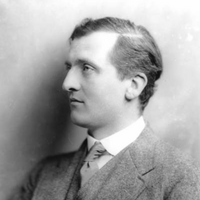
Thomas Ernest Hulme (16 September 1883– 28 September 1917) was an English critic and poet who, through his writings on art, literature and politics, had a notable influence upon modernism. He was an aesthetic philosopher and the 'father of imagism’. Early life Hulme was born at Gratton Hall, Endon, Staffordshire, the son of Thomas and Mary Hulme. He was educated at Newcastle-under-Lyme High School, and from 1902, St John’s College, Cambridge, where he read mathematics, but was sent down in 1904 after rowdy behaviour on Boat Race night. He was thrown out of Cambridge a second time after a scandal involving a Roedean girl. He returned to his studies at University College, London before travelling around Canada and spending time in Brussels acquiring languages. Proto-modernist From about 1907 Hulme became interested in philosophy, translating works by Henri Bergson and sitting in on lectures at Cambridge. He translated Georges Sorel’s Reflections on Violence. The most important influences on his thought were Bergson, who asserted that 'human experience is relative, but religious and ethical values are absolute’ and, later, Wilhelm Worringer (1881–1965), German art historian and critic - in particular his Abstraktion und Einfühlung (Abstraction and Empathy, 1908). Hulme was influenced by Remy de Gourmont’s aristocratic concept of art and his studies of sensibility and style. From 1909 Hulme contributed critical articles to The New Age, edited by A. R. Orage. Hulme developed an interest in poetry and wrote a small number of poems. He was made secretary of the Poets’ Club, attended by such establishment figures as Edmund Gosse and Henry Newbolt. There he encountered Ezra Pound and F. S. Flint. In late 1908 Hulme delivered his paper A Lecture on Modern Poetry to the club. Hulme’s poems Autumn and City Sunset, both published in 1909 in a Poets’ Club anthology, have the distinction of being the first Imagist poems. A further five poems were published in The New Age in 1912 as The Complete Poetical Works of T.E. Hulme. Despite this misleading title, Hulme in fact wrote about 25 poems totalling some 260 lines, of which the majority were possibly written between 1908–1910. Robert Frost met Hulme in 1913 and was influenced by his ideas. The publisher of the book 'Ripostes’ (to which Pound appended the 'complete’ poetical works of T. E. Hulme) spoke in that book of Hulme ‘the meta-physician, who achieves great rhythmical beauty in curious verse-forms.’ In his critical writings Hulme distinguished between Romanticism, a style informed by a belief in the infinite in man and nature, characterised by Hulme as “spilt religion”, and Classicism, a mode of art stressing human finitude, formal restraint, concrete imagery and, in Hulme’s words, “dry hardness”. Similar views were later expressed by T.S. Eliot. Hulme’s ideas had a major effect on Wyndham Lewis (quite literally when they came to blows over Kate Lechmere; Lewis ended the worse for it, hung upside down by the cuffs of his trousers from the railings of Great Ormond Street). He championed the art of Jacob Epstein and David Bomberg, was a friend of Gaudier-Brzeska, and was in on the debut of Lewis’s literary magazine BLAST and vorticism. Hulme’s politics were conservative, and he moved further to the right after 1911 as a result of contact with Pierre Lasserre, who was associated with Action Française. First World War Hulme volunteered as an artilleryman in 1914 and served with the Honourable Artillery Company and later the Royal Marine Artillery in France and Belgium. He kept up his writing for The New Age. Notable publications during this period for that magazine were “War Notes,” written under the pen name “North Staffs”, and “A Notebook”, which contains some of his most organised critical writing. He was wounded in 1916. Back at the front in 1917, he was killed by a shell at Oostduinkerke near Nieuwpoort, in West Flanders. [...] On 28 September 1917, four days after his thirty-fourth birthday, Hulme suffered a direct hit from a large shell which literally blew him to pieces. Apparently absorbed in some thought of his own he had failed to hear it coming and remained standing while those around threw themselves flat on the ground. What was left of him was buried in the Military Cemetery at Koksijde, West-Vlaanderen, in Belgium where—no doubt for want of space—he is described simply as 'One of the War poets’.” Works * Notes on Language and Style (1929, University of Washington Book Store); in The Criterion, Vol. 3, No. 12, (July 1925) (ed. T.S. Eliot) * Speculations: Essays on Humanism and the Philosophy of Art (1936, K. Paul, Trench, Trubner & Co., Ltd.), edited by Herbert Read * Further Speculations of T. E. Hulme (1955, University of Minnesota), edited by Samuel Hynes * The Collected Writings of T. E. Hulme (1996, OUP), edited by Karen Csengeri * Selected Writings of T. E. Hulme (2003, Fyfield Books), edited by Patrick McGuinness Selected poems * Above the Dock * Autumn * A City Sunset * Conversion * The Embankment * Mana Aboda * The Man in the Crow’s Nest * Susan Ann and Immortality * The Poet * A Tall Woman * A Sudden Secret * In the Quiet Land * At Night! * Town Sky-line As translator * Henri Bergson, An Introduction to Metaphysics, (1912) * Georges Sorel, Reflections on Violence, (1915) Articles References Wikipedia—https://en.wikipedia.org/wiki/T._E._Hulme
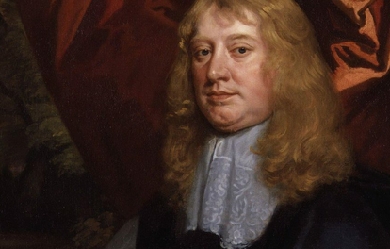
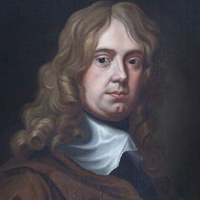
Abraham Cowley (1618– 28 July 1667) was an English poet born in the City of London late in 1618. He was one of the leading English poets of the 17th century, with 14 printings of his Works published between 1668 and 1721. Early life and career His father, a wealthy citizen, who died shortly before his birth, was a stationer. His mother was wholly given to works of devotion, but it happened that there lay in her parlour a copy of The Faerie Queene. This became the favourite reading of her son, and he had read it twice before he was sent to school. As early as 1628, that is, in his tenth year, he composed his Tragicall History of Piramus and Thisbe, an epic romance written in a six-line stanza, a style of his own invention. It is not too much to say that this work is the most astonishing feat of imaginative precocity on record; it is marked by no great faults of immaturity, and possesses constructive merits of a very high order. Two years later the child wrote another and still more ambitious poem, Constantia and Philetus, being sent about the same time to Westminster School. Here he displayed extraordinary mental precocity and versatility, and wrote in his thirteenth year the Elegy on the Death of Dudley, Lord Carlton. These three poems of considerable size, and some smaller ones, were collected in 1633, and published in a volume entitled Poetical Blossoms, dedicated to the head master of the school, and prefaced by many laudatory verses by schoolfellows. The author at once became famous, although he had not, even yet, completed his fifteenth year. His next composition was a pastoral comedy, entitled Love’s Riddle, a marvelous production for a boy of sixteen, airy, correct and harmonious in language, and rapid in movement. The style is not without resemblance to that of Randolph, whose earliest works, however, were at that time only just printed. In 1637 Cowley was elected into Trinity College, Cambridge, where he betook himself with enthusiasm to the study of all kinds of learning, and early distinguished himself as a ripe scholar. Portraits of Cowley, attributed to William Faithorne and Stephen Slaughter, are in Trinity College’s collection. It was about this time that he composed his scriptural epic on the history of King David, one book of which still exists in the Latin original, the rest being superseded in favour of an English version in four books, called the Davideis, which were published after his death. The epic deals with the adventures of King David from his boyhood to the smiting of Amalek by Saul, where it abruptly closes. In 1638 Love’s Riddle and a Latin comedy, the Naufragium Joculare, were printed, and in 1641 the passage of Prince Charles through Cambridge gave occasion to the production of another dramatic work, The Guardian, which was acted before the royal visitor with much success. During the civil war this play was privately performed at Dublin, but it was not printed till 1650. It is bright and amusing, in the style common to the “sons” of Ben Jonson, the university wits who wrote more for the closet than the public stage. Royalist in exile The learned quiet of the young poet’s life was broken up by the Civil War; he warmly espoused the royalist side. He became a fellow of Trinity College, Cambridge, but was ejected by the Parliamentarians in 1643. He made his way to Oxford, where he enjoyed the friendship of Lord Falkland, and was tossed, in the tumult of affairs, into the personal confidence of the royal family itself. After the battle of Marston Moor he followed the queen to Paris, and the exile so commenced lasted twelve years. This period was spent almost entirely in the royal service, “bearing a share in the distresses of the royal family, or labouring in their affairs. To this purpose he performed several dangerous journeys into Jersey, Scotland, Flanders, the Netherlands, or wherever else the king’s troubles required his attendance. But the chief testimony of his fidelity was the laborious service he underwent in maintaining the constant correspondence between the late king and the queen his wife. In that weighty trust he behaved himself with indefatigable integrity and unsuspected secrecy; for he ciphered and deciphered with his own hand the greatest part of all the letters that passed between their majesties, and managed a vast intelligence in many other parts, which for some years together took up all his days, and two or three nights every week.” In spite of these labours he did not refrain from literary industry. During his exile he met with the works of Pindar, and determined to reproduce their lofty lyric passion in English. However, Cowley misunderstood Pindar’s metrical practice and therefore his reproduction of the Pindaric Ode form in English does not accurately reflect Pindar’s poetics. But despite this problem, Cowley’s use of iambic lines of irregular length, pattern, and rhyme scheme was very influential and is still known as English “Pindarick” Ode, or Irregular Ode. One of the most famous odes written after Cowley in the Pindaric tradition is Wordsworth’s “Intimations of Immortality.” During this same time, Cowley occupied himself in writing a history of the Civil War (which did not get published in full until 1973). In the preface to his 1656 Poems, Cowley mentioned that he had completed three books of an epic poem on the Civil War, but had left it unfinished after the First Battle of Newbury when the Royalist cause began to lose significant ground. In the preface Cowley indicated that he had destroyed all copies of the poem, but this was not precisely the truth. In 1697, twelve years after Cowley’s death, a shortened version of the first book of the poem, called A Poem on the Late Civil War was published. It was assumed that the rest of the poem had indeed been destroyed or lost until the mid-20th century when scholar Allan Pritchard discovered the first of two extant manuscript copies of the whole poem among the Cowper family papers. Thus, the three completed books of Cowley’s great (albeit unfinished) English epic, The Civill Warre (otherwise spelled “The Civil War”), was finally published in full for the first time in 1973. In 1647 a collection of his love verses, entitled The Mistress, was published, and in the next year a volume of wretched satires, The Four Ages of England, was brought out under his name, with the composition of which he had nothing to do. In spite of the troubles of the times, so fatal to poetic fame, his reputation steadily increased, and when, on his return to England in 1656, he published a volume of his collected poetical works, he found himself without a rival in public esteem. This volume included the later works already mentioned, the Pindarique Odes, the Davideis, the Mistress and some Miscellanies. Among the latter are to be found Cowley’s most vital pieces. This section of his works opens with the famous aspiration: “What shall I do to be for ever known, And make the coming age my own?” It contains elegies on Wotton, Vandyck, Falkland, William Hervey and Crashaw, the last two being among Cowley’s finest poems, brilliant, sonorous and original; the amusing ballad of The Chronicle, giving a fictitious catalogue of his supposed amours; various gnomic pieces; and some charming paraphrases from Anacreon. The Pindarique Odes contain weighty Lines and passages, buried in irregular and inharmonious masses of moral verbiage. Not more than one or two are good throughout, but a full posy of beauties may easily be culled from them. The long cadences of the Alexandrines with which most of the strophes close, continued to echo in English poetry from Dryden down to Gray, but the Odes themselves, which were found to be obscure by the poet’s contemporaries, immediately fell into disesteem. The Mistress was the most popular poetic reading of the age, and is now the least read of all Cowley’s works. It was the last and most violent expression of the amatory affectation of the 17th century, an affectation which had been endurable in Donne and other early writers because it had been the vehicle of sincere emotion, but was unendurable in Cowley because in him it represented nothing but a perfunctory exercise, a mere exhibition of literary calisthenics. He appears to have been of a cold, or at least of a timid, disposition; in the face of these elaborately erotic volumes, we are told that to the end of his days he never summoned up courage to speak of love to a single woman in real life. The “Leonora” of The Chronicle is said to have been the only woman he ever loved, and she married the brother of his biographer, Sprat. Return to England Soon after his return to England he was seized in mistake for another person, and only obtained his liberty on a bail of £1000. In 1658 he revised and altered his play of The Guardian, and prepared it for the press under the title of The Cutter of Coleman Street, but it did not appear until 1661. Late in 1658 Oliver Cromwell died, and Cowley took advantage of the confusion of affairs to escape to Paris, where he remained until the Restoration brought him back in Charles’s train. He published in 1663 Verses upon several occasions, in which The Complaint is included. He is also known for having provided the earliest reference to coca in English literature, in a poem called “A legend of coca” in his 1662 collection of poems Six Books of Plants. Cowley obtained permission to retire into the country; and through his friend, Lord St Albans, he obtained a property near Chertsey, where, devoting himself to botany and books, he lived in comparative solitude until his death. He took a practical interest in experimental science, and he was one of those advocating the foundation of an academy for the protection of scientific enterprise. Cowley’s pamphlet on The Advancement of Experimental Philosophy, 1661, immediately preceded the foundation of the Royal Society; to which Cowley, in March 1667, at the suggestion of John Evelyn, addressed an ode. He died in the Porch House, in Chertsey, in consequence of having caught a cold while superintending his farm-labourers in the meadows late on a summer evening. On 3 August, Cowley was buried in Westminster Abbey beside the ashes of Chaucer and Spenser, where in 1675 the duke of Buckingham erected a monument to his memory. His Poemata Latina, including six books “Plantarum,” were printed in 1668. The poetry of Cowley rapidly fell into neglect. The works of Cowley were collected in 1668, when Thomas Sprat brought out an edition in folio, to which he prefixed a life of the poet. There were many reprints of this collection, which formed the standard edition till 1881, when it was superseded by Alexander Balloch Grosart’s privately printed edition in two volumes, for the Chertsey Worthies library. The Essays have frequently been revived. A Satire Against Separatists, printed in 1675, has been variously attributed to Cowley and to Peter Hausted. References Wikipedia—https://en.wikipedia.org/wiki/Abraham_Cowley
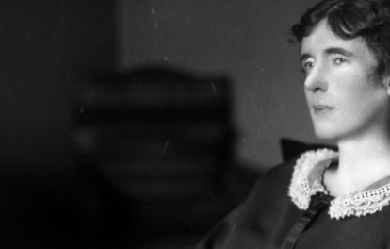
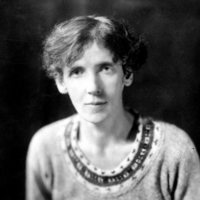
Dame Emilie Rose Macaulay, DBE (1 August 1881– 30 October 1958) was an English writer, most noted for her award-winning novel The Towers of Trebizond, about a small Anglo-Catholic group crossing Turkey by camel. The story is seen as a spiritual autobiography, reflecting her own changing and conflicting beliefs. Macaulay’s novels were partly-influenced by Virginia Woolf; she also wrote biographies and travelogues. Early years and education Macaulay was born in Rugby, Warwickshire the daughter of George Campbell Macaulay, a Classical scholar, and his wife, Grace Mary (née Conybeare). Her father was descended in the male-line directly from the Macaulay family of Lewis. She was educated at Oxford High School for Girls and read Modern History at Somerville College at Oxford University. Career Macaulay began writing her first novel, Abbots Verney (published 1906), after leaving Somerville and while living with her parents at Ty Isaf, near Aberystwyth, in Wales. Later novels include The Lee Shore (1912), Potterism (1920), Dangerous Ages (1921), Told by an Idiot (1923), And No Man’s Wit (1940), The World My Wilderness (1950), and The Towers of Trebizond (1956). Her non-fiction work includes They Went to Portugal, Catchwords and Claptrap, a biography of Milton, and Pleasure of Ruins. Macaulay’s fiction was influenced by Virginia Woolf and Anatole France. During World War I Macaulay worked in the British Propaganda Department, after some time as a nurse and later as a civil servant in the War Office. She pursued a romantic affair with Gerald O’Donovan, a writer and former Jesuit priest, from 1918 until his death in 1942. During the interwar period she was a sponsor of the pacifist Peace Pledge Union; however she resigned from the PPU and later recanted her pacifism in 1940. Her London flat was utterly destroyed in the Blitz, and she had to rebuild her life and library from scratch, as documented in the semi-autobiographical short story, Miss Anstruther’s Letters, which was published in 1942. The Towers of Trebizond, her final novel, is generally regarded as her masterpiece. Strongly autobiographical, it treats with wistful humour and deep sadness the attractions of mystical Christianity, and the irremediable conflict between adulterous love and the demands of the Christian faith. For this work, she received the James Tait Black Memorial Prize in 1956. Personal life Macaulay was never a simple believer in “mere Christianity”; however, and her writings reveal a more complex, mystical sense of the divine. That said, she did not return to the Anglican church until 1953; she had been an ardent secularist before and, while religious themes pervade her novels, previous to her conversion she often treats Christianity satirically, for instance in Going Abroad and The World My Wilderness. She never married, as a result of her lengthy and secret relationship with Gerald O’Donovan. They met in 1918 and the affair lasted until his death in 1942. She was created a Dame Commander of the Order of the British Empire (DBE) on 31 December 1957 in the 1958 New Years Honours. Macaulay was an active feminist throughout her life. Dame Rose Macaulay died on 30 October 1958, aged 77. Memorable quotes From The Towers of Trebizond: “Adultery is a meanness and a stealing, a taking away from someone what should be theirs, a great selfishness, and surrounded and guarded by lies lest it should be found out. And out of meanness and selfishness and lying flow love and joy and peace beyond anything that can be imagined.” First line of The Towers of Trebizond, cited by librarian Nancy Pearl in “Famous First Words: A Librarian Shares Favorite Literary Opening Lines,” [1] hosted by Steve Inskeep on NPR’s Morning Edition, 8 September 2004, as an example among “some notable opening lines that have made Pearl’s heart pound”. “Take my camel, dear”, said my Aunt Dot, as she climbed down from this animal on her return from High Mass. From Staying with Relations. Discussing the coat worn by a visitor, a character remarks: “Is rabbit fur disgusting because it’s cheap, or is it cheap because it’s disgusting?”


James Ingram Merrill (March 3, 1926– February 6, 1995) was an American poet whose awards include the Pulitzer Prize for Poetry (1977) for Divine Comedies (1976). His poetry falls into two distinct bodies of work: the polished and formalist lyric poetry of his early career, and the epic narrative of occult communication with spirits and angels, titled The Changing Light at Sandover (published in three volumes from 1976 to 1980), which dominated his later career. Although most of his published work was poetry, he also wrote essays, fiction, and plays.
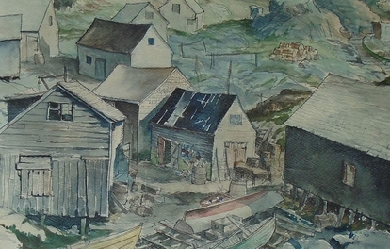
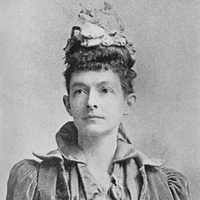
Susan Frances Harrison née Riley (February 24, 1859– May 5, 1935) (a.k.a. Seranus) was a Canadian poet, novelist, music critic and music composer who lived and worked in Ottawa and Toronto. Life Susie Frances Riley was born in Toronto of Irish-Canadian ancestry, the daughter of John Byron Riley. She studied music with Frederic Boscovitz, at a private school for girls in Toronto, and later in Montreal. She reportedly began publishing poetry, in the Canadian Illustrated News, at 16 under the pseudonym “Medusa.” After completing her education, she worked as a pianist and singer. In 1880 she married organist John W. F. Harrison, of Bristol, England, who was the organist of St. George’s Church in Montreal. The couple had a son and a daughter. The Harrisons lived in Ottawa in 1883, when Susie Harrison composed the song “Address of Welcome to Lord Lansdowne” to celebrate the first public appearance of the new Governor General, the Marquess of Lansdowne. In 1887 the Harrisons moved to Toronto, where John Harrison became organist and choirmaster of St. Simon the Apostle, and Susan Harrison began a literary career under the pseudonym “Seranus” (a misreading of her signature, “S. Frances”), soon publishing articles in “many of the leading journals and periodicals.” She wrote a number of songs published in the United States and England under the name Seranus, and published other songs in England under the name, Gilbert King. She was the music critic of The Week from December 1886 to June 1887 under her pen-name of Seranus. She wrote the “Historical sketch on Canadian music” for the 1898 Canada: An Encyclopedia of the Country. Susan Harrison was considered an authority on folk music, and often lectured on the subject. She used traditional Irish melodies in her String Quartet on Ancient Irish Airs, and French-Canadian music in her 1887 Trois Esquisses canadiennes (Three Canadian Sketches), ‘Dialogue,’ ‘Nocturne,’ and 'Chant du voyageur’. She also incorporated French-Canadian melodies in her three-act opera, Pipandor (with libretto by F.A. Dixon of Ottawa). Her String Quartet on Ancient Irish Airs, is likely the first string quartet composed in Canada by a woman. In 1896 and 1897 she presented a series of well-received lectures in Toronto on "The Music of French Canada. For 20 years Harrison was the principal of the Rosedale branch of the Toronto Conservatory of Music. During the 1900s she contributed to and edited the Conservatory’s publication Conservatory Monthly, and contributed to its successor Conservatory Quarterly Review. She wrote the article on “Canada” for the 1909 Imperial History and Encyclopedia of Music. In addition, she wrote at least six books of poetry, and three novels. Writing Poetry Harrison’s musical training is reflected in her poetry: “she was adept in her handling of the rhythmic complexities of poetic forms such as the sonnet and the villanelle. Like other Canadian poets of the late nineteenth century, her prevailing themes include nature, love, and patriotism. Her landscape poetry, richly influenced by the works of Charles G.D. Roberts and Archibald Lampman, paints the Canadian wilderness as beguilingly beautiful yet at the same time mysterious and distant.” Harrison was a master of the villanelle. The villanelle was a French verse form that had been introduced to English readers by Edmund Gosse in his 1877 essay, “A Plea for Certain Exotic Forms of Verse”. Novels Her two novels “articulate a fascination with a heavily mythologized Quebec culture that Harrison shared with many English-speaking Canadians of her time... characterized by a gothic emphasis on horror, madness, aristocratic seigneurial manor houses, and a decadent Catholicism.” “Harrison writes elegiacally of a regime whose romantic qualities are largely the creation of an Upper Canadian quest for a distinctive historical identity.” Recognition Harrison experienced a decline in reputation in her lifetime. In 1916 anthologist John Garvin called her “one of our greater poets whose work has not yet had the recognition in Canada it merits.”. "By 1926, Garvin describes her merely as 'one of our distinctive poets’.” The Dictionary of Literary Biography wrote of Susan Frances Harrison, in 1990, that “Harrison’s unpublished work has not been preserved, her published work is out of print and difficult to obtain, and her once-substantial position in the literary life of her country is now all but forgotten.” Publications Selected songs * Song of Welcome. * Pipandor. opera * ‘Trois Esquisses canadiennes: ’Dialogue,' ‘Nocturne,’ 'Chant du voyageur’. 1887. * Quartet on Ancient Irish Airs. Poetry * Four Ballads and a Play. Toronto: Author, 1890. * Pine, Rose and Fleur De Lis. Toronto: Hart, 1891. * In Northern Skies and Other Poems. Toronto: Author, 1912. * Songs of Love and Labor. Toronto: Author, 1925. * Later Poems and New Villanelles. Toronto: Ryerson, 1928. * Penelope and Other Poems. Toronto: Author, 1934. * Bibliographical information on poems from Wanda Campbell, Hidden Rooms. Prose * Crowded Out and Other Sketches. Ottawa: Evening Journal, 1886. * The Forest of Bourg-Marie, novel. Toronto: G.N. Morang, 1898. * Ringfield, novel. London: Hodder & Stoughton, 1914. Edited * Canadian Birthday Book. Toronto: Robinson, 1887. Poetry anthology. Articles * “Historical sketch of music in Canada,” Canada: An Encyclopedia of the Country, vol 4, J.C. Hopkins ed., Toronto, 1898. * “Canada,” The Imperial History and Encyclopedia of Music, vol 3: History of Foreign Music, W.L. Hubbard ed., New York ca 1909. Discography * Harrison’s piano music has been recorded and issued on media, including: * Keillor, Elaine. By a Canadian Lady Piano Music 1841-1997 Carleton Sound * Keillor, Elaine. Piano Music by Torontonians (1984) References Wikipedia—https://en.wikipedia.org/wiki/Susie_Frances_Harrison
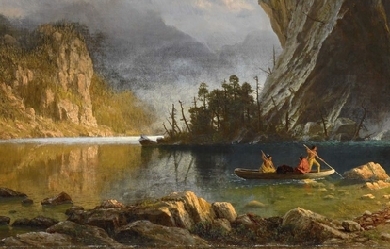
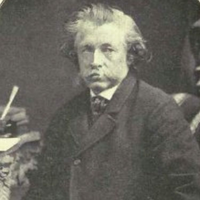
Charles Sangster (July 16, 1822– December 9, 1893) was a Canadian poet whose 1856 volume, The St. Lawrence and the Saguenay, “was received with unanimous acclaim as the best and most important book of poetry produced in Canada until that time.” He was “the first poet who made appreciative use of Canadian subjects in his poetical work.” The Dictionary of Canadian Biography calls him “the best of the pre-confederation poets.” Life Sangster was born at the Navy Yard on Point Frederick (now the site of Royal Military College of Canada), near Kingston, Ontario, the son of Ann Ross and James Sangster. A twin sister died in infancy. His father, a “joiner” or shipbuilder who worked for the British Navy around the Great Lakes, died at Penetanguishene just before Charles turned 2. His mother raised Charles and his 4 siblings on her own. Sangster was an indifferent student, finding “the school curriculum irrelevant and his masters stern and uninspiring.” At 15 years old, he left school to help provide for the family. He took a job in the naval lab making cartridges at Fort Henry and two years later was transferred to the Ordnance office at the fort. About this time (1839) Sangster wrote his first serious poem, a 700-line narrative in rhyming couplets called “The Rebel.” The poem “contains an extensive vocabulary and rich and imaginative historical and geographical allusions,... beyond what might be expected of a boy... who had so little formal education.... the content and form suggest considerable previous writing.” During the 12 years he worked at the Ordinance office Sangster began doing part-time work for a Kingston newspaper, the British Whig. He also continued writing poetry and submitting it, anonymously or pseudonymously, to the local papers. Writing career and success In 1849 Sangster quit his job at Fort Henry and moved to Amherstburg, Ontario, where he became editor of the Amherstburg Courier. When James Reeves, owner of the Courier, died the same year, Sangster returned to Kingston, to work as a proofreader and bookkeeper for the British Whig. Sangster first gained national attention as a poet in 1850, when his poetry began appearing in Canada’s Literary Garland magazine. Soon his work appeared in other magazines, such as Anglo-American Magazine. In 1853 Sangster took a steamship excursion down the St. Lawrence River and up the Saguenay River in Quebec, which he wrote about for the Whig in a series of travel letters called “Etchings by the Way”—material he would also use in his long poem, “The St. Lawrence and the Saguenay”. Sangster published his first book of poetry, The St Lawrence and the Saguenay, and Other Poems, in 1856. The book was widely praised by reviewers and readers. Susanna Moodie wrote to Sangster; "If a native of Canada, [one] may well be proud of her Bard, who has sung in such lofty strains the natural beauties of his native land." The National Magazine of London echoed the same sentiment: “Well may the Canadians be proud of such contributions to their infant literature.... In some sort, and according to his degree, Mr. Sangster may be regarded as the Wordsworth of Canada.” Charles Sangster "married 21-year-old Mary Kilborn of Kingston on Sept. 16, 1856, and the newlyweds moved into a brick house at 144 Barrie Street across from the grassy park. (An historical plaque directly across the street honours the Sangster home.)" Mary was to die of pneumonia just 16 months later. In 1859, Sangster wrote the poem “Brock”, commissioned for the inauguration of the monument to General Isaac Brock at Queenston Heights. Sangster’s second book of poetry, Hesperus and Other Poems and Lyrics, appeared in 1860, published in Kingston and Montreal. “A rousing success, Hesperus... received even more approval than his first book.” “Hesperus was well received, and many critics considered it superior to The St. Lawrence and the Saguenay, as did Sangster himself.” The same year, Sangster remarried, to Henrietta Charlotte Mary Meagher, who was only 17 years of age (to his 38). In 1864, Sangster became a reporter for the Kingston Daily News, and 16 of his poems appeared in the first-ever anthology of Canadian poetry, Selections from Canadian Poets. The same year, the Sangsters celebrated the birth of their first child, Charlotte Mary. Post office and retirement By 1867, Sangster “was in a poor financial situation and suffered increasingly from ill health, depression, and a nervous disorder that would cause him deep mental pain the rest of his life.” To help him out his neighbor, the new Postmaster-General Alexander Campbell arranged a job for Sangster with Canada’s new Post Office Department. Accordingly, in 1868, at 46, Sangster “accepted a position in the Post-Office Department at Ottawa, where his poetic energy and ambition succumbed, apparently, to the incessant drudgery and to the hampering cares of ill-paid employment.”, “With his appointment... Sangster’s life became characterized by overwork, ill health and scant literary output.” He remained with the Post Office until his retirement in 1886. Sangster was also kept busy by a growing family. Sadly, Charlotte died in 1868, shortly after the move to Ottawa. The same year, though, Mrs. Sangster gave birth to a second daughter, Florence. Two years later, in 1870, their third daughter, Gertrude was born, followed in 1879 by a son, Roderick. Sangster published 16 poems in magazines between 1868 and 1878, most of which he had written before moving to Ottawa. He wrote virtually nothing for the 18 years he worked at the Post Office. As he later wrote: "When I went down to Ottawa... I took a pile of M.S. of a third volume with me, as I thought 'ready for the press’, but in all the 18 years I remained there I did little more than correct.... When they get a man into the Civil Service, their first duty is to crush him flat, and if he is a fool of a Poet, or dares to think of any nonsense of that kind, draw him through a Knot or a gimlet hole a few times, pile with agony of toil, toil, toil until his nerves are flattened out, all the rebound knocked out of him, and then– superannuate him... and tell him he should be thankful.” Sangster had a nervous breakdown in 1875, and developed a chronic nervous system condition during the 1880s. To make matters worse, Henrietta died sometime between 1883 and 1886, leaving him to raise his new family alone. After another breakdown in March 1886, he took a six-month leave of absence, and also resigned from the Royal Society of Canada (which had elected him in 1882). Finally, that September he retired and moved back to Kingston. For the first years of retirement, Sangster did little but convalesce. In July 1888, he received a letter from W.D. Lighthall, inquiring about new poems for an upcoming anthology (most likely Lighthall’s 1889 Songs of the Great Dominion. Sangster replied the next day, and the two men struck up a friendship by mail. Revitalized, Sangster began revising his poetry. He doubled the size of “The Saint Lawrence and the Saguenay” to over 200 stanzas, and sent the manuscript to his cousin Amos Sangster to illustrate. When Amos died, the manuscript and the new poem was lost. However, 40 of the new stanzas survived thanks to being published in various magazines. Charles Sangster also cut many of the “other” poems in the first volume, and made over 2,000 changes to the ones he kept. Hesperus got off easier, but Sangster still made more than 200 revisions to the work. As well, Sangster prepared two more volumes for publication, mostly from poems he’d written before moving to Ottawa: Norland Echoes & Other Strains, and The Angel Guest & Other Poems. By the summer of 1871, all four manuscripts were complete, and Sangster sent them off to Lighthall (who had become his literary executor). However, before any of them could be published, Sangster died. None of them were published until the 1970s. Charles Sangster died in Kingston in 1893, and is buried in the city’s Cataraqui Cemetery. Writing The Canadian Encyclopedia says that “Sangster’s poetry distinguishes him as a lover and keen observer of the natural world. He displays overwhelming passion in some poems and equally extreme melancholy in others. Whatever his mood he is consistently and intensely serious and deeply religious.” Sangster’s inspiration was drawn from three themes he was passionate about: love, nature and religion. He wrote many poems about his experiences and was commended for his ability to express the beauty of Canada’s landscapes. Sangster was often called the “father of Canadian poetry” because of this. Many of the love poems from his first book were directed towards his first wife; the nature poems were of his travels. For a man with limited educational training, Charles Sangster had a vast vocabulary and an extraordinary knowledge of history, classics, mythology and authors. His poems include an extensive knowledge of classic, historic, and mythological works, as well as British and American authors, including Shakespeare, Milton, Burns, Wordsworth, P.J. Bailey, and Longfellow. Recognition Sangster was elected a Fellow of the Royal Society of Canada in 1892. Publications * The St. Lawrence and the Saguenay, and Other Poems. Kingston, ON: J. Creighton & J. Duff, 1856. New York: Miller, Orton & Mulligan, 1856. * Hesperus, and Other Poems and Lyrics. Kingston: J. Creighton, 1860. Montreal: J. Lovell, 1860. London, UK: Trubner, 1860. * Our Norland. Toronto: Copp Clark, [1890]. * The St Lawrence and the Saguenay and other poems; Hesperus and other poems and lyrics, intro. Gordon Johnston (Toronto: University of Toronto Press and Buffalo, N.Y., 1972. ISBN 0-8020-1935-8 * Norland echoes and other strains and lyrics,. Frank M. Tierney ed. Ottawa: Tecumseh, 1976. ISBN 0-919662-59-5 * The angel guest and other poems and lyrics. Frank M. Tierney ed. Ottawa: Tecumseh, 1977. ISBN 0-919662-63-3 * Hesperus and other poems and lyrics(rev. ed.). Frank M. Tierney ed. Ottawa: Tecumseh, 1979. ISBN 0-919662-72-2 * St. Lawrence and the Saguenay and other poems (rev. ed.). Frank M. Tierney ed. Ottawa: Tecumseh, 1984. ISBN 0-919662-95-1, ISBN 0-919662-96-X * Except where noted, bibliographic information courtesy Dictionary of Canadian Biography. References Wikipedia—https://en.wikipedia.org/wiki/Charles_Sangster
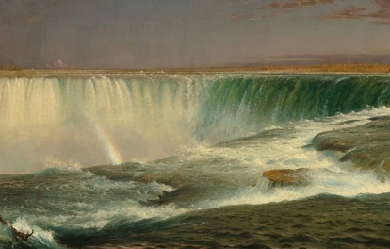
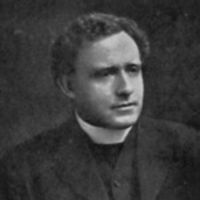
Rev. James Bernard Dollard ("Father Dollard") (1872–1946) was a Roman Catholic parish priest and noted poet. Life He was born at Mooncoin, County Kilkenny, Ireland, August 30, 1872, to Michael and Anastasia (Quinn) Dollard, the youngest son in a large family. After taking the course in Classics at Kilkenny College, he sailed in 1890 for New Brunswick, Canada. He graduated from the Grand Seminary of Montreal and received from Laval University the degrees of Bachelor of Theology and Bachelor of Canon Law. The same university conferred on him in 1916, the honorary degree of Litt.D. He was ordained to the priesthood in December 1896. He served as a curate in St. Helen’s Church, and St. Mary’s Church, Toronto, and for nine years, parish priest of Uptergrove, Ontario before he became the parish priest of St. Monica’s Church, North Toronto. He published two volumes of poems Irish Mist and Sunshine (1902) and Poems (1910), and a volume of short stories entitled The Gaels of Moondharrig. He sometimes wrote under the pseudonym of Sliav-na-mon. In a lecture on “The War and the Poets,” delivered in Toronto, 1916, Mr. Joyce Kilmer, poetry editor of the Literary Digest, declared that Father Dollard’s sonnet was the best poem that had appeared on the death of Rupert Brooke. He died in 1946. References Wikipedia—https://en.wikipedia.org/wiki/James_B._Dollard

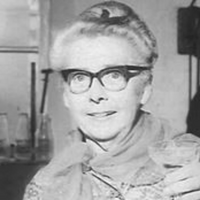
Kathleen Faragher (1904–1974) was the most significant and prolific Manx dialect author of the mid twentieth century. She is best known for her poems first published in the Ramsey Courier and collected into five books published between 1955 and 1967. She was also a prolific short story writer and playwright. Her work is renowned for its humour born of a keen observation of Manx characters, and for its evocative portrayal of the Isle of Man and its people. Life Kathleen Faragher was born in 1904 in Ramsey, Isle of Man, to Joseph and Catherine Anne Faragher, owners of a grocer and provision merchant business on Approach Road. Kathleen was the youngest of five children: Laurence (who died in Gibraltar in 1944 during WWII), Fred (later manager of Martin’s Bank, Peel), Joseph (who took over the family business but died in 1946), Evelyn (who emigrated to Auckland, New Zealand, where she died in 1949) and herself. Kathleen Faragher was raised in Ramsey until about 1924, when she moved to London to take up a business career. After 25 years working in London, ill-health forced her into early retirement, whereupon she returned to live on the Isle of Man in October 1949. Faragher lived first in Ramsey but eventually moved to Maughold, finally coming to live near to the Dhoon Church in Glen Mona. Poetry Faragher’s first poem, 'Blue Point’, was published in the Ramsey Courier on 14 October 1949. The poem was written whilst in Kent and sent to the paper, who surprised Faragher in accepting it, although it was not published until she had returned to live on the island. This poem was different in style to Faragher’s subsequent work and it was only published in her third book of poetry, Where Curlews Call, in 1959, by which time it had been substantially rewritten. Her next poem, 'Maughold Head’, was published at the start of February 1950, after which her poems were published regularly in the Ramsey Courier. Her first published poem in the Anglo-Manx dialect was 'A Lament’, which appeared in September 1950. Her poems were quickly picked up as special evocations of the Isle of Man and they were recited at meetings of Manx Societies in England alongside poems by the Manx National Poet, T. E. Brown, as early as November 1951. Her poems, 'Maughold Head’ and 'In Exile’, were set to music by C. Sydney Marshall and had been cut to record by February 1960. Her first book of poems, Green Hills by the Sea, was published in February 1955 by The Ramsey Courier Ltd. The book’s title is a reference to the popular song, 'Ellan Vannin’, composed from a poem by Eliza Craven Green. The book was described as displaying Faragher’s “deep insight into Manx feelings and a nostalgic love of the old folk and ways” by George Bellairs. The collection opened with 'Land of My Birth’, which she described as “the greatest compliment she can pay to the Manx people” and with which she usually ended her recitals. I love this purple-misted Isle, This land where I was born. The gorse-clad hills and bracken tops, The fields of waving corn. [...] But best of all I love to hear The gentle, lilting voice Of kindly Manx folk greeting me: It makes my heart rejoice, To feel once more the friendly hand, To hear the welcome warm, To look into each smiling face And know I have come home. Her second collection, This Purple-Misted Isle, was published in October 1957. The title was another reference to her forebears of Manx literature, this time to T. E. Brown, a reference continued within the collection with Faragher’s 'The Immortal “Kitty”' paying homage to Brown’s 'Kitty o’ the Sherragh Vane’ from his Fo’c’s’le Yarns. The collection had a Foreword by the Lieutenant Governor, Ambrose Flux Dundas. It proved to be very popular, having to be reprinted by the end of the year, and by the end of 1959 a third print had also almost sold out. This collection included 'The Homecomer’, which displays her distinctive Anglo-Manx conversational style: [...] “It isn’ me dyin’ that I min’, boy,” She said as she sat by her bed; “I’d go peaceful if it wasn’ for thinkin’ Ye’ll be managin’ so maul when I’m dead.” An’ Billy sthroked her cheek– so the tale goes – An’ whispered all lovin’ an’ low, “Dunt be grievin’, Nellie Kate; theer’s no need to gel, To worry about me when yer go! For theer’s the nices’ li’l wumman in Laxaa That I’ve had me eye on this las’ bit; She’ll look after me well, I can tell yer, So take yer res’, Nellie Kate, an’ dunt fret!” My gough! She gorrup from that bed theer Like an arra shot straight from the bow! Ay! an’ Billy himself was years buried ‘Fore herself in the en’ had to go! [...] By 1959 Faragher’s poems had been heard on BBC Radio a number of times, recited both by herself and by others. It was in October of that year that her third collection was released, Where Curlews Call, bearing a perceptive Preface by Sir Ralph Stevenson: “Our mother tongue has been overlaid by a stereotyped accent [...]. The Manx lilt [...] is all too rapidly fading. She does her best in these poems to keep it alive and at the same times gives a warm and human picture of our farms and crofts and the kindly folk who live in them. For this, if for nothing else, she has earned our gratitude.” Her subsequent collections of poetry were These Fairy Shores (1962) and English and Manx Dialect Poems (1967). Faragher’s poems can be predominantly categorised into two types: light-humoured dialect vignettes or lyrical descriptions of the Isle of Man. Her poems are distinctive in Manx literature in being prevailingly from or of a female perspective and based within the family or home environment. Theatre and prose As early as 1951 Faragher had been experimenting with extending her conversational monologue Anglo-Manx poems into theatrical dialogues for performance. In 1964 four such 'character sketches’ were published as Kiare Cooisghyn. As was distinctive of her dialect poetry, all of these pieces were written for middle-aged or elderly female characters and used a very tender humour born of a close observation of Manx character. Something of this is shown in the first 'duologue’ from the collection, 'The Caffy’ in which two women discuss the new café in town: [...] Mrs K. An’ what like was the china? Gran’ mighty I suppose? Mrs C. Aw! somethin’ awful that was! Rale indacent, in fac’. A whole lorra naked childher flyin’ about on the plates shootin’ bows an’ arras. Mrs K. Aw! them 'ud be l’il Cupids. Mrs C. Li’l Cupids? Li’l divils, more like! Why wan o’ them was the dead spit o’ that young dirt Kermid’s yandher! Ay! skeetin’ up at me through the gravy he was– enough to turn yer! [...] She came to concentrate on prose towards the end of her life, publishing By The Red Fuchsia Tree in 1967, a collection of short stories interspersed with reprints of poems from her earlier collections. This was followed by a long series of short dialect stories published under the pseudonym, “Kirree Ann”, in the Ramsey Courier at a rate of almost one a week over the last two years of her life. This output of nearly 100 short stories makes her the most prolific Manx short story writer of the twentieth Century. Death and legacy Kathleen Faragher died in 1974, on the same day as her final story was published in the Ramsey Courier. She was buried in the family plot in Maughold churchyard, a graveyard also associated with other important Manx writers such as T. E. Brown, Hall Caine, Cushag and William Kennish. Six years after her death, her friend, Constance Radcliffe, the leading authority on the local history of Ramsey and Maughold, wrote of Faragher’s work that: “In all her works she expressed her affection for a Manx way of life which has only just disappeared, her kindly humour based on acute observation of people’s idiosyncrasies, and her deep and abiding love of the island itself.” Her work continues to be popularly performed in recitals on the Isle of Man, despite none of her books having been republished after her death, and her “Kirree Ann” stories having never been collected. In 2015 a project to record the memories of those who knew and remember Faragher was launched. Funded by Culture Vannin, it is envisioned to tie in with the Culture Vannin oral history programme, but also to reach more widely to collect unpublished works, memorabilia or other artefacts that might be uncovered. In introducing the initiative, the project organiser gave an estimation of Faragher’s work in relation to Manx literature: “the importance of her work to the Isle of Man would be hard to overestimate. It would be a tragedy for Manx culture if we did not do everything in our power to preserve all we can of her memory.” Publications * Green Hills by the Sea. Ramsey: The Ramsey Courier Ltd. 1954. * This Purple-Misted Isle. Ramsey: The Ramsey Courier Ltd. 1957. * Where Curlews Call. Ramsey: The Ramsey Courier Ltd. 1959. * These Fairy Shores. Ramsey: The Ramsey Courier Ltd. 1962. * Kiare Cooisghyn. Ramsey: The Ramsey Courier Ltd. 1964. * English and Manx Dialect Poems. Douglas: Norris Modern Press. 1967. * By The Red Fuchsia Tree. Douglas: The Norris Modern Press. 1967. References Wikipedia—https://en.wikipedia.org/wiki/Kathleen_Faragher
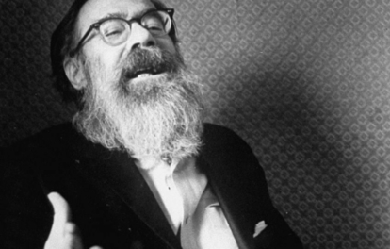
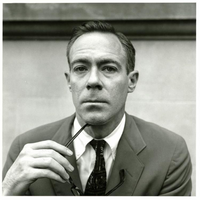
John Allyn Berryman (October 25, 1914– January 7, 1972) was an American poet and scholar, born in McAlester, Oklahoma. He was a major figure in American poetry in the second half of the 20th century and was considered a key figure in the Confessional school of poetry. His best-known work is The Dream Songs. Life and career John Berryman was born John Allyn Smith, Jr. in Oklahoma where he was raised until the age of ten, when his father, John Smith, a banker, and his mother, Martha (also known as Peggy), a schoolteacher, moved to Tampa, Florida. In 1926, in Florida, when the poet was eleven years old, his father shot and killed himself, Berryman was haunted by his father’s death for the rest of his life and would later write about his struggle to come to terms with it in his book The Dream Songs. In "Dream Song #143", he wrote, "That mad drive [to commit suicide] wiped out my childhood. I put him down/while all the same on forty years I love him/stashed in Oklahoma/besides his brother Will". In "Dream Song #145", he also wrote the following lines about his father: he only, very early in the morning, rose with his gun and went outdoors by my window and did what was needed. I cannot read that wretched mind, so strong & so undone. I've always tried. I–I'm trying to forgive whose frantic passage, when he could not live an instant longer,in the summer dawn left Henry to live on. Similarly, in Dream Song #384, Berryman wrote: The marker slants, flowerless, day's almost done, I stand above my father's grave with rage, often, often before I've made this awful pilgrimage to one who cannot visit me, who tore his page out: I come back for more, I spit upon this dreadful bankers grave who shot his heart out in a Florida dawn After his father’s death at the rear entrance to Kipling Arms, where the Smiths rented an apartment, the poet’s mother, within months, married John Angus McAlpin Berryman in New York City. The poet was renamed John Allyn McAlpin Berryman. Berryman’s mother also changed her first name from Peggy to Jill. Although his stepfather would later divorce his mother, Berryman and his stepfather stayed on good terms. With both his mother and stepfather working, his mother decided to send him away to the South Kent School, a private boarding school in Connecticut. Then Berryman went on to college at Columbia College where he was president of the Philolexian Society, joined the Boar’s Head Society, edited the Columbia Review, and studied under the literary scholar and poet Mark Van Doren. Berryman would later credit Van Doren with sparking his interest in writing poetry seriously. For two years, Berryman also studied overseas at Clare College, Cambridge, on a Kellett Fellowship, awarded by Columbia. He graduated in 1936. Regarding Berryman’s earliest success in poetry, the Norton Anthology of Modern Poetry editors note that "Berryman’s early work formed part of a volume entitled Five Young American Poets, published by New Directions in 1940". One of the other young poets included in the book was Randall Jarrell. Berryman would soon publish some of this early verse in his first book, also with New Directions Publishing, simply titled Poems, in 1942. However, his first mature collection of poems, The Dispossessed, appeared six years later, published by William Sloane Associates. The book received largely negative reviews from poets like Randall Jarrell who wrote, in The Nation, that Berryman was "a complicated, nervous, and intelligent [poet]" whose poetry in The Dispossessed was too derivative of W. B. Yeats. Berryman would later concur with this assessment of his early work, stating, “I didn’t want to be like Yeats; I wanted to be Yeats.” In October 1942, Berryman married Eileen Mulligan (later Simpson) in a ceremony at St. Patrick’s Catherdral, with poet Mark Van Doren as his best man. The pair moved to Beacon Hill, where Berryman lectured at Harvard. The marriage ended in 1953 (a divorce was formalized in 1956), when Simpson finally grew weary of tolerating Berryman’s affairs and acting as “net-holder” throughout his self-destructive personal crises. Simpson would memorialize her time with Berryman and his circle in her 1982 book Poets in Their Youth. In 1947, Berryman started an affair with a married woman named Chris, documented in a long sonnet sequence that he refrained from publishing, in part, because publication of the sonnets would have revealed the affair to his wife. However, he did eventually decide to publish the work, titled Berryman’s Sonnets, in 1967. The work included over one hundred sonnets. In 1950, Berryman published a biography of the fiction writer and poet Stephen Crane whom he greatly admired becoming, “the only biography by a leading American poet of the great American writer, Stephen Crane.” This book was followed by his next significant poem, Homage to Mistress Bradstreet (1956), which featured illustrations by the artist Ben Shahn and was Berryman’s first poem to receive “national attention” and a positive response from critics. Edmund Wilson wrote that it was “the most distinguished long poem by an American since T. S. Eliot’s The Waste Land.” When “Homage to Mistress Bradstreet and Other Poems” was published in 1959, the poet Conrad Aiken praised the shorter poems in the book which he thought were actually better than “Homage to Mistress Bradstreet”. Despite the relative success of his third book of verse, Berryman’s great poetic breakthrough occurred after he published 77 Dream Songs in 1964. It won the 1965 Pulitzer Prize for poetry and solidified Berryman’s standing as one of the most important poets of the post-World War II generation that included Robert Lowell, Elizabeth Bishop, and Delmore Schwartz. Soon afterwards, Berryman started receiving a great deal of national attention from the press, from arts organizations, and even from the White House which sent him an invitation to dine with President Lyndon B. Johnson (though Berryman had to decline because he was in Ireland at the time). Berryman was elected a Fellow of the American Academy of Arts and Sciences in 1967, and that same year Life magazine ran a feature story on him. Also, that year the newly created National Endowment for the Arts awarded him a ten thousand dollar grant (though he admitted, when asked about the award by a Minneapolis reporter, that he had never heard of the organization before). Berryman also continued to work on the “dream song” poems at a feverish pace and published a second, significantly longer, volume entitled His Toy, His Dream, His Rest, in 1968, which won the National Book Award for Poetry and the Bollingen Prize. The following year Berryman republished 77 Dreams Songs and His Toy, His Dream, His Rest as one book titled The Dream Songs, in which the character Henry serves as Berryman’s alter ego. But in Love & Fame (1970), he dropped the mask of Henry to write more plainly about his life. Responses to the poems from critics and most of Berryman’s peers ranged from tepid, at best, to hostile; now the collection is generally “considered a minor work”. The character of Henry reappeared in a couple of poems published in Delusions Etc., (1972), Berryman’s last collection, which focused on his religious concerns and his own spiritual rebirth. The book was published posthumously and, like its predecessor, Love & Fame, it is considered a minor work. Berryman taught or lectured at a number of universities including University of Iowa (in their Writer’s Workshop), Harvard University, Princeton University, the University of Cincinnati, and the University of Minnesota, where he spent the majority of his career, except for his sabbatical year in 1962-3, when he taught at Brown University. Some of his illustrious students included W. D. Snodgrass, William Dickey, Donald Justice, Philip Levine, Robert Dana, Jane Cooper, Donald Finkel, and Henri Coulette. Philip Levine stated, in a recorded interview from 2009, that Berryman took his class extremely seriously and that "he was entrancing... magnetic and inspiring and very hard on [his students’] work... [and] he was [also] the best teacher that I ever had". Berryman was fired from the University of Iowa after a fight with his landlord led to him being arrested, jailed overnight, and fined for disorderly conduct and public intoxication. He turned to his friend, the poet Allen Tate, who helped him get his teaching job at the University of Minnesota. Berryman was married three times. And according to the editors of The Norton Anthology of Modern Poetry, he lived turbulently. During one of the many times he was hospitalized in order to detox from alcohol abuse, in 1970, he experienced what he termed “a sort of religious conversion”. According to his biographer Paul Mariani, Berryman experienced “a sudden and radical shift from a belief in a transcendent God... to a belief in a God who cared for the individual fates of human beings and who even interceded for them.” Nevertheless, Berryman continued to abuse alcohol and to struggle with depression, as he had throughout much of his adult life, and on the morning of January 7, 1972, he killed himself by jumping from the Washington Avenue Bridge in Minneapolis, Minnesota, onto the west bank of the Mississippi River. Newspaper reports of the event indicate that he missed the water and smothered in mud. Poetry Berryman’s poetry, which often revolved around the sordid details of his personal problems (in The Dream Songs but also in his other poems as well) is closely associated with the Confessional poetry movement. In this sense, his poetry had much in common with the poetry of his friend, Robert Lowell. The editors of The Norton Anthology of Modern Poetry note that “the influence of Yeats, Auden, Hopkins, Crane, and Pound on him was strong, and Berryman’s own voice—by turns nerve-racked and sportive—took some time to be heard.” Berryman’s first major work, in which he began to develop his own unique style of writing, was Homage to Mistress Bradstreet, published in 1956. In the long, title poem, which first appeared in Partisan Review in 1953, Berryman addressed the 17th century American poet Anne Bradstreet, combining the history of her life with his own fantasies about her (and inserting himself into the poem). Joel Athey noted, “This difficult poem, a tribute to the Puritan poet of colonial America, took Berryman five years to complete and demanded much from the reader when it first appeared with no notes. The Times Literary Supplement hailed it as a path-breaking masterpiece; poet Robert Fitzgerald called it ‘the poem of his generation.’” Edward Hirsch observed that "the 57 stanzas of Homage to Mistress Bradstreet combine the concentration of an extended lyric with the erudition and amplitude of a historical novel". Berryman’s major poetic breakthrough came after he began to publish the first volume of The Dream Songs, 77 Dream Songs, in 1964. The dream song form consisted of short, eighteen-line lyric poems in three stanzas. The poems are written in free verse although some stanzas contain irregular rhyme. 77 Dream Songs (and its sequel His Toy, His Dream, His Rest) centers on a character named “Henry” who bears a striking resemblance to John Berryman. However, Berryman was careful about making sure that his readers realized that “Henry” was not his equivalent, but rather a fictional version of himself (or a literary alter ego). In an interview, Berryman stated, “Henry does resemble me, and I resemble Henry; but on the other hand I am not Henry. You know, I pay income tax; Henry pays no income tax. And bats come over and they stall in my hair—and fuck them, I’m not Henry; Henry doesn’t have any bats.” In The New York Times review of 77 Dream Songs, John Malcolm Brinnin praised the book, declaring that "[the book’s] excellence calls for celebration". And in The New York Review of Books, Robert Lowell also reviewed the book, writing, “At first the brain aches and freezes at so much darkness, disorder and oddness. After a while, the repeated situations and their racy jabber become more and more enjoyable, although even now I wouldn’t trust myself to paraphrase accurately at least half the sections.” In response to the perceived difficulty of the dream songs, in his 366th “Dream Song”, Berryman facetiously wrote, "These Songs are not meant to be understood, you understand. / They are only meant to terrify & comfort". In His Toy, His Dream, His Rest, many of the dream songs are elegies for Berryman’s recently deceased poet friends, including Delmore Schwartz, Randall Jarrell, and Theodore Roethke. Since this volume contained four times the number of poems that appeared in the previous volume, Berryman covered a lot more subject matter. For instance, in addition to the elegies, Berryman writes about his trip to Ireland as well as his own burgeoning literary fame. Berryman’s last two volumes of poetry, Love & Fame and Delusions, Etc. featured free-verse poems that were much more straightforward and less idiosyncratic than The Dream Songs. Prior to the publication of Love & Fame, Berryman sent his manuscript to several peers for feedback, including the poets Adrienne Rich and Richard Wilbur, both of whom were disappointed with the poems which they considered inferior to the poems in The Dream Songs. However, a number of Berryman’s old friends and supporters, including the novelist Saul Bellow and the poets Robert Lowell and William Meredith, offered high praise for a number of the Love & Fame poems. Both Love & Fame and Delusions, Etc. were more openly “confessional” than Berryman’s earlier verse, and since he embraced religion when he wrote these volumes, he also explored the nature of his spiritual rebirth in poems like “Eleven Addresses to the Lord” (which Lowell thought was one of Berryman’s best poems and “one of the great poems of the age”), as a well as “Certainty Before Lunch”. In 1977 John Haffenden published Henry’s Fate & Other Poems, a selection of dream songs that Berryman wrote after His Toy, His Dream, His Rest, but had never published. In reviewing the book, Time magazine noted, “Posthumous selections of unpublished poetry should be viewed suspiciously. The dead poet may have had good aesthetic reasons for keeping some of his work to himself. Fortunately, Henry’s Fate does not malign the memory of John Berryman”. Berryman’s Collected Poems—1937-1971 edited and introduced by Charles Thornbury, was published in 1989. However, Robert Giroux decided to leave out The Dream Songs from the collection. In his review of the Collected Poems, Edward Hirsch commented on this decision, stating, "It is obviously practical to continue to publish the 385 dream songs separately, but reading the Collected Poems without them is a little like eating a seven-course meal without a main course." Hirsch also notes that, "[Collected Poems features] a thorough nine-part introduction and a chronology as well as helpful appendixes that include Berryman’s published prefaces, notes and dedications; a section of editor’s notes, guidelines and procedures; and an account of the poems in their final stages of composition and publication.” In 2004, the Library of America published John Berryman: Selected Poems, edited by the poet Kevin Young. In Poetry magazine, David Orr wrote: Young includes all the Greatest Hits [from Berryman’s career]... but there are also substantial excerpts from Berryman’s Sonnets (the peculiar book that appeared after The Dream Songs, but was written long before) and Berryman’s later, overtly religious poetry. Young argues that “if his middle, elegiac period... is most in need of rediscovery, then these late poems are most in need of redemption.” It’s a good point. Although portions of Berryman’s late work are sloppy and erratic, these poems help clarify the spiritual struggle that motivates and sustains his best writing. After surveying Berryman’s career and accomplishments, the editors of The Norton Anthology of Modern Poetry stated, “What seems likely to survive of his poetry is its pungent and many-leveled portrait of a complex personality which, for all its eccentricity, stayed close to the center of the intellectual and emotional life of the mid-century and after.” In popular culture The ghost of John Berryman is a character in Thomas Disch’s novel The Businessman: A Tale of Terror, published in 1984. The Hold Steady’s song “Stuck Between Stations” from the 2006 album Boys and Girls in America relates a loose rendition of Berryman’s death, describing the isolation he felt, despite his critical acclaim, and depicting him walking with “the devil” on the Washington Avenue Bridge where he committed suicide. Okkervil River’s song “John Allyn Smith Sails” from their 2007 album The Stage Names is about John Berryman. Australian singer/songwriter Nick Cave has admiringly referenced Berryman in the song “We Call Upon the Author” from the 2007 album Dig, Lazarus, Dig!!!. Phish bassist Mike Gordon’s side-project band has performed "Dream Song 22-'Of 1826", releasing it on a live album, The Egg. Additionally, on March 30, 2014, their show featured a rendition of “The Poet’s Final Instructions”. Berryman and his poem Dream Song 235 is referenced in Elizabeth Strout’s novel and HBO’s adaption of Olive Kitteridge with the quote "Save us from shotguns & fathers’ suicides.” Berryman and his poem “The Curse” are referenced in the prologue of Tracy Letts’s play August: Osage County by the character Beverly, a poet who later commits suicide. Bibliography * Poems. Norfolk, Ct.: New Directions Press, 1942. * The Dispossessed. New York: William Sloan Associates, 1948. * Stephen Crane. New York: Sloan, 1950. * Homage to Mistress Bradstreet. New York: Farrar, Straus & Giroux, 1956. * 77 Dream Songs. New York: Farrar, Straus & Giroux, 1964. * Berryman’s Sonnets. New York: Farrar, Straus & Giroux, 1967. * His Toy, His Dream His Rest. New York: Farrar, Straus & Giroux, 1968. * The Dream Songs. New York: Farrar, Straus & Giroux, 1969. * Love & Fame. New York: Farrar, Straus & Giroux, 1970. * Delusions, Etc. New York: Farrar, Straus & Giroux, 1972. * Recovery. New York: Farrar, Straus & Giroux, 1973. * The Freedom of the Poet. New York: Farrar, Straus, & Giroux, 1976. * Henry’s Fate & Other Poems, 1967-1972. New York: Farrar, Straus, & Giroux, 1977. * Collected Poems 1937-1971. Ed. Charles Thornbury. New York: Farrar, Straus & Giroux, 1989. * Berryman’s Shakespeare. Ed. John Haffenden. New York: Farrar, Straus & Giroux, 1999. * Selected Poems. Ed. Kevin Young. New York: Library of America, 2004. * The Heart Is Strange. Ed. Daniel Swift. New York: Farrar, Straus & Giroux, 2014. References Wikipedia—https://en.wikipedia.org/wiki/John_Berryman
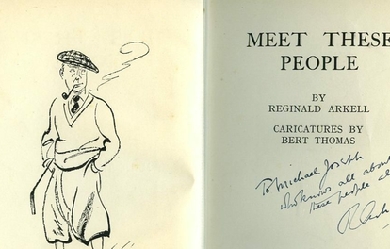
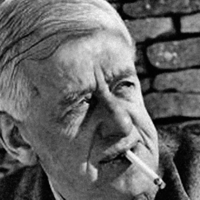
Reginald Arkell (1882–1959) was a British script writer and comic novelist who wrote many musical plays for the London theatre. The most popular of those was an adaptation of the spoof history book 1066 and All That: 1066—and all that: A Musical Comedy based on that Memorable History by Sellar and Yeatman. He was the author of A Cottage in the Country and the Green Fingers series of garden verse. Arkell was born on 14 October 1882 at Lechlade, Gloucestershire, England, was educated at Burford Grammar School and trained as a journalist. He married actress Elizabeth Evans in 1912. During the First World War he served with the King’s Own Yorkshire Light Infantry and The Norfolk Regiment. Arkell died on 1 May 1959 at Cricklade, England. Works * The Round House (1958) (novel) * Charley Moon (1953) (novel) Published by Michael Joseph Ltd. * “Trumpets Over Merriford” (1955), American title: The Miracle Of Merriford (1956) (novel) * Collected Green Fingers (1956) (poems) * Come to the ball; or, Harlequin (1951) (adaptation of Johann Strauss II’s Die Fledermaus) * Old Herbaceous (1950, republished 2002) * Green fingers Again (1942) (poems) * War Rumours (1939) (verse, illustrated by Edgar Norfield) * Percy Ponsonby (1939) (TV series) * 1066 And All That (1939) (TV version) * The Street Singer or Interval for Romance (1937) (film musical which starred Arthur Tracy) * Smash and Grab (1937) (film) * Green fingers, and other poems (1934) (includes Roses at Owlpen) * The Last Waltz (1936) (film of the musical comedy) * 1066 And All That (1935) (revue) * A Kingdom for a Cow (1935) (adaptation of Kurt Weill’s operetta Der Kuhhandel) * Playing the Games (1935) (humour) * Bridge Without Sighs (1934) (A Harmless Handbook to the game, written in rhyme) * Richard Jefferies (1933) (biography) * Winter Sportings (1929) * Meet These People (1928) - Poetry with caricatures by Bert Thomas. Published by Herbert Jenkins. * Columbine– A Fantasy of Summertime (1928) (adaptation for radio) * The Blue Train (1927) (musical, music by Robert Stolz, additional lyrics by Ivy St. Helier) * Frasquita (1925) (operetta, music by Franz Lehár) * Our Nell (1924) (musical play, music by Ivor Novello and Harold Fraser-Simson) * The tragedy of Mr. Punch (1923) (play) * Columbine (1922) (play) * Catherine (1922) (musical play, music by Tchaikovsky) * The Last Waltz (1922) (musical comedy, music by Oscar Straus) * All the Rumors (1916) (contains the poem Actual Evidence I Have None... Published by Duckworth & Company, 1916 - World War, 1914-1918 - 47 pages) * The Holidays (Children’s poem in The Captain Dec 1910) Old Herbaceous * Old Herbaceous is a classic British novel of the garden, with a title character as outsized and unforgettable as P. G. Wodehouse’s immortal manservant, Jeeves. Born at the dusk of the Victorian era, Bert Pinnegar, an awkward orphan child with one leg a tad longer than the other, rises from inauspicious schoolboy days spent picking wildflowers and dodging angry farmers to become the legendary head gardener “Old Herbaceous,” the most esteemed flower-show judge in the county and a famed horticultural wizard capable of producing dazzling April strawberries from the greenhouse and the exact morning glories his Lady spies on the French Riviera, “so blue, so blue it positively hurts.” * Sprinkled with nuggets of gardening wisdom, Old Herbaceous is a witty comic portrait of the most archetypal—and crotchety—head gardener ever to plant a row of bulbs at a British country house. External links * Works by Reginald Arkell at Faded Page (Canada) * BBC page on Percy Ponsonby * Reginald Arkell on Internet Movie Database References Wikipedia—https://en.wikipedia.org/wiki/Reginald_Arkell
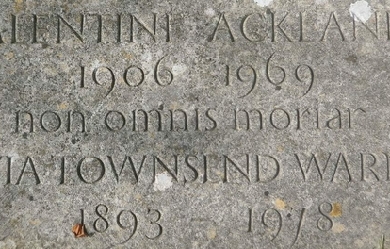
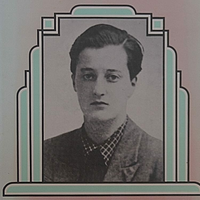
Valentine Ackland (20 May 1906– 9 November 1969) was an English poet, an important figure in the emergence of modernism in twentieth-century British poetry. Life Ackland was born Mary Kathleen Macrory Ackland to Robert Craig Ackland and his wife Ruth Kathleen (née Macrory), and nicknamed “Molly” by her family. With no sons born to the family, Valentine’s father, a West End London dentist, worked at making a symbolic son of Molly, teaching her to shoot rifles and to box. This attention to Molly made her sister Joan Alice Elizabeth (b. 1898) immensely jealous. Older by eight years, Joan psychologically tormented and physically abused Molly as a way of unleashing her jealousy and anger. Molly received an Anglo-Catholic upbringing in Norfolk and a convent school education in London. In 1925 at the age of nineteen, she impetuously married Richard Turpin, a homosexual youth who was unable to consummate their marriage. Upon her marriage, she was also received into the Catholic church, a religion that she later abandoned, returned to, and then abandoned again in the last decade of her life. In less than a year, she had her marriage to Turpin annulled, and, despite numerous pleas from her family and much psychological pressure from them, never returned to a serious relationship with a man again. Alert to social mores of her day, she became aware of societal patterns of male privilege and female submission set about challenging the female gender identifications expected of her. She took to wearing men’s clothing, cut her hair in a short style called the Eton crop, and was at times mistaken for a handsome young boy. She changed her name to the androgynous Valentine Ackland when she decided to become a serious poet in the late 1920s. Her poetry appeared in British and American literary journals during the 1920s to the 1940s, but Ackland deeply regretted that she never became a noted and widely read poet. In this regard, much of her poetry was published posthumously, and she received little attention from critics until a revival of interest in her work in the 1970s. In 1930, Ackland was introduced to the short story writer and novelist Sylvia Townsend Warner, with whom she had a lifelong relationship, albeit tumultuous at times given Ackland’s increasing alcoholism and infidelities. Warner was twelve years older than Ackland, and the two lived together until Ackland’s death from breast cancer in 1969. Warner went on to outlive Ackland by nine years, dying in 1978. The pair were together for thirty-nine years. Ackland’s reflections upon her relationship with Warner and the former’s long affair with American heiress and writer Elizabeth Wade White (1908–1994), were posthumously published in For Sylvia: An Honest Account (1985). Ackland was a highly emotional woman prone to numerous self-doubts and shifts in emotions and intellectual interests. She was responsible for involving Warner in membership in the Communist Party in the 1930s and in 1937 she visited Valencia and Benicàssim within the framework of the Spanish Civil War as well as numerous socialist and pacifist activities. The two women’s involvement in the Communist Party came under investigation by the British government in the late 1930s and remained an open file until 1957, when the investigation was halted. Ackland and Warner supported the Republican cause during the Spanish Civil War, and Ackland criticised the British government for its indifference to the “sufferings of the Spanish people at the grass-roots level” in her poem "Instructions from England, 1936". Note nothing of why or how, enquire no deeper than you need into what set these veins on fire, Note simply that they bleed. After World War II, Ackland turned her attention to confessional poetry and a memoir concerning her relationship with Warner and its many emotional issues as Ackland pursued involvements with other women. At first, Warner was tolerant with her younger lover’s dalliances, but the seriousness and length of Ackland’s relationship with Elizabeth Wade White was distressing to Warner and also pushed her relationship with Ackland to the edge. Ackland’s distresses at loving two women simultaneously and of endeavouring to balance her feelings for each woman with the responsibilities and commitments of her primary relationship with Warner are presented openly in Ackland’s poetry and in her memoir of this period. Ackland was struggling with additional doubts and conflicts during this period as well. She continued to battle her alcoholism, and she was undergoing shifts in her political and religious alliances. Doubts about her sexual identity and her identity as a poet as well as about her Christian faith and her political convictions are evident in her poetry. In 1934, Ackland and Warner produced a volume of poetry, “Whether a Dove or a Seagull” that was an unusual and democratic experiment in writing as none of the poems is ascribed to either author. The volume was also an attempt by Warner to introduce Ackland to publication since Warner had an already established reputation as a novelist, and her work was widely read in the 1930s. The volume was controversial for its frank discussion of lesbianism at a time and in a society in which lesbianism was regarded as deviant and immoral behaviour. In 1937, Ackland and Warner moved from rural Dorset to a house near Dorchester. Both became involved with Communist ideals and issues, with Ackland writing a column called “Country Dealings” concerning rural poverty for the “Daily Worker” and the “Left Review.” In 1939, the two women attended the American Writers Congress in New York City to consider the loss of democracy in Europe and returned when World War II broke out. Ackland’s poetry of this period attempted to capture the political dynamics she saw at work, but she had a difficult time as a poet mastering the craft of combining political polemics with her natural tendency toward lyrical expression. In a similar vein, her distress over the loss of democracy in Europe became a broader identification with Existentialism and the sense that the human condition itself was hopeless. Death Ackland died on 9 November 1969 from breast cancer that had metastasised to her lungs. She was buried together with Sylvia Townsend Warner in St Nicholas’s churchyard at Chaldon Herring with the inscription from Horace Non omnis moriar (Ode III.30, “I shall not wholly die”) on her gravestone. Critical assessment Ackland’s poetry—largely neglected after the 1940s—came into a resurgence of interest with the emergence of both women’s studies and of lesbian literature. Contemporary critical reaction finds much to value in Ackland’s poetry and confessional writings, which are of historical interest to the development of self-reflective, modernist poetry, and to the political and cultural issues of the 1930s and 1940s. One example of a recent critical analysis is Wendy Milford’s 1988 study, This Narrow Place: Sylvia Townsend Warner and Valentine Ackland. With regard to her self-reflection as a poet, Ackland exhibits themes and explorations similar to poets like Sylvia Plath and Anne Sexton. Of interest, too, is Ackland’s explorations of terminal illness as her life was drawing to a close from cancer. In her later years, Ackland turned from Catholicism to Quaker beliefs and also to involvement with issues of environmentalism. In overall assessment, Milford considers the two-minds at work in Ackland’s work. She cites as examples Ackland’s focus on optimism and dread, the longing for emotional closeness and the fear of intimacy, self-assertion and self-negation, the search for privacy and solitude amidst the longing for connection and social acceptance as a lesbian and as a noteworthy poet. In this regard, Ackland shares much thematically—though not in artistic achievement—with metaphysical poets like John Donne and Philip Larkin in the effort to see personal experience from multiple perspectives and never fully resting with one perspective or another. A contemporary examination of Ackland’s poetry and essays was published by Carcanet Press in 2008 titled Journey from Winter: Selected Poems. The volume is edited by Frances Bingham, who also provides a contextual and critical introduction. Bibliography * Whether a Dove or a Seagull (1934) volume of poetry with Sylvia Townsend Warner * Twenty-Eight Poems (1957) privately printed in London * Later Poems by Valentine Ackland (1970) * The Nature of the Moment (1973) * Further Poems of Valentine Ackland (1978) * For Sylvia: An Honest Account (1985) a memoir of Ackland’s relationship with Sylvia Townsend Warner * This Narrow Place: Sylvia Townsend Warner and Valentine Ackland 1931–1951, by Wendy Mulford (1988) * Jealousy in Connecticut, by Susanna Pinney (1998) References Wikipedia—https://en.wikipedia.org/wiki/Valentine_Ackland
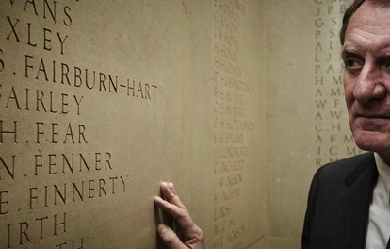
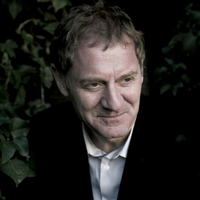
Sir Andrew Motion FRSL (born 26 October 1952) is an English poet, novelist, and biographer, who was Poet Laureate of the United Kingdom from 1999 to 2009. During the period of his laureateship, Motion founded the Poetry Archive, an online resource of poems and audio recordings of poets reading their own work. In 2012, he became President of the Campaign to Protect Rural England, taking over from Bill Bryson. Early life Motion was born on 26 October 1952 in London; his mother was Catherine Gillian Bakewell (known as Gillian) and his father Andrew Richard Michael Motion (known as Richard). The family moved to Stisted, near Braintree in Essex, when Motion was 12 years old. Motion went to boarding school from the age of seven joined by his younger brother. Most of the boy’s friends were from the school and when Motion was in the village he spent a lot of time on his own. He began to have an interest and affection for the countryside and he went for walks with a pet dog. Later he went to Radley College, where, in the sixth form, he encountered Peter Way, an inspiring English teacher who introduced him to poetry– first Hardy, then Philip Larkin, W. H. Auden, Heaney, Hughes, Wordsworth and Keats. When Motion was 17 years old, his mother had a horse riding accident and suffered a serious head injury requiring a life-saving neurosurgery operation. She regained some speech, but she was severely paralysed and remained in and out of coma for nine years. She died in 1978 and her husband died of cancer in 2006. Motion has said that he wrote to keep his memory of his mother alive and that she was a muse of his work. When Motion was about 18 years old he moved away from the village to study English at University College, Oxford; however, since then he has remained in contact with the village to visit the church graveyard, where his parents are buried, and also to see his brother, who lives nearby. At University he studied at weekly sessions with W. H. Auden, whom he greatly admired. Motion won the university’s Newdigate Prize and graduated with a first class honours degree. Career Between 1976 and 1980, Motion taught English at the University of Hull and while there, at age 24, he had his first volume of poetry published. At Hull he met university librarian and poet Philip Larkin. Motion was later appointed as one of Larkin’s literary executors which would privilege Motion’s role as his biographer following Larkin’s death in 1985. In Philip Larkin: A Writer’s Life, Motion says that at no time during their nine-year friendship did they discuss writing his biography and it was Larkin’s longtime companion Monica Jones who requested it. He reports how, as executor, he rescued many of Larkin’s papers from imminent destruction following his friend’s death. His 1993 biography of Larkin, which won the Whitbread Prize for Biography, was responsible for bringing about a substantial revision of Larkin’s reputation. Motion was Editorial Director and Poetry Editor at Chatto & Windus (1983–89), he edited the Poetry Society’s Poetry Review from 1980–1982 and succeeded Malcolm Bradbury as Professor of Creative Writing at the University of East Anglia. He is now on the faculty at the Johns Hopkins Writing Seminars. Laureateship Motion was appointed Poet Laureate on 1 May 1999, following the death of Ted Hughes, the previous incumbent. The Nobel Prize-winning Northern Irish poet and translator Seamus Heaney had ruled himself out for the post. Breaking with the tradition of the laureate retaining the post for life, Motion stipulated that he would stay for only ten years. The yearly stipend of £200 was increased to £5,000 and he received the customary butt of sack. He wanted to write “poems about things in the news, and commissions from people or organisations involved with ordinary life,” rather than be seen a 'courtier’. So, he wrote "for the TUC about liberty, about homelessness for the Salvation Army, about bullying for ChildLine, about the foot and mouth outbreak for the Today programme, about the Paddington rail disaster, the 11 September attacks and Harry Patch for the BBC, and more recently about shell shock for the charity Combat Stress, and climate change for the song cycle he finished for Cambridge University with Peter Maxwell Davies.” On 14 March 2002, as part of the 'Re-weaving Rainbows’ event of National Science Week 2002, Motion unveiled a blue plaque on the front wall of 28 St Thomas Street, Southwark, to commemorate the sharing of lodgings there by John Keats and Henry Stephens while they were medical students at Guy’s and St Thomas’ Hospital in 1815–16. In 2003, Motion wrote Regime change, a poem in protest at Invasion of Iraq from the point of view of Death walking the streets during the conflict, and in 2005, Spring Wedding in honour of the wedding of the Prince of Wales to Camilla Parker Bowles. Commissioned to write in the honour of 109-year-old Harry Patch, the last surviving “Tommy” to have fought in World War I, Motion composed a five-part poem, read and received by Patch at the Bishop’s Palace in Wells in 2008. As laureate, he also founded the Poetry Archive, an on-line library of historic and contemporary recordings of poets reciting their own work. Motion remarked that he found some of the duties attendant to the post of poet laureate difficult and onerous and that the appointment had been "very, very damaging to [his] work". The appointment of Motion met with criticism from some quarters. As he prepared to stand down from the job, Motion published an article in The Guardian that concluded, "To have had 10 years working as laureate has been remarkable. Sometimes it’s been remarkably difficult, the laureate has to take a lot of flak, one way or another. More often it has been remarkably fulfilling. I’m glad I did it, and I’m glad I’m giving it up– especially since I mean to continue working for poetry." Motion spent his last day as Poet Laureate holding a creative writing class at his alma mater, Radley College, before giving a poetry reading and thanking Peter Way, the man who taught him English at Radley, for making him who he was. Carol Ann Duffy succeeded him as Poet Laureate on 1 May 2009. Post-laureateship Motion is Chairman of the Arts Council of England’s Literature Panel (appointed 1996) and is also a Fellow of the Royal Society of Literature. In 2003, he became Professor of Creative Writing at Royal Holloway, University of London. Since July 2009, Motion has been Chairman of the Museums, Libraries and Archives Council (MLA) appointed by the Department for Culture, Media and Sport. He is also a Vice-President of the Friends of the British Library, a charity which provides funding support to the British Library. He was knighted in the 2009 Queen’s Birthday Honours list. He has been a member of English Heritage’s Blue Plaques Panel since 2008. Motion was selected as jury chair for the Man Booker Prize 2010 and in March 2010, he announced that he was working with publishers Jonathan Cape on a sequel to Robert Louis Stevenson’s Treasure Island. Entitled Silver, the story is set a generation on from the original book and was published in March 2012. In July 2010, Motion returned to Kingston-upon-Hull for the annual Humber Mouth literature festival and taking part in the Larkin 25 festival commemorating the 25th anniversary of Philip Larkin’s death. In his capacity as Larkin’s biographer and as a former lecturer in English at the University of Hull, Motion named an East Yorkshire Motor Services bus Philip Larkin. Motion’s debut play Incoming, about the war in Afghanistan, premièred at the High Tides Festival in Halesworth, Suffolk in May 2011. Motion also featured in Jamie’s Dream School in 2011 as the poetry teacher. In June 2012, he became the President of the Campaign to Protect Rural England. In March 2014 he was elected an Honorary Fellow at Homerton College, Cambridge. Motion won the 2015 Ted Hughes Award for new work in poetry for the radio programme Coming Home. The production featured poetry by Motion based on recordings he made of British soldiers returning from the wars in Iraq and Afghanistan. Work Motion has said of himself: “My wish to write a poem is inseparable from my wish to explain something to myself.” His work combines lyrical and narrative aspects in a “postmodern-romantic sensibility”. Motion says that he aims to write in clear language without tricks. The Independent describes the stalwart poet as the “charming and tireless defender of the art form”. Motion has won the Arvon Prize, the John Llewellyn Rhys Prize, Eric Gregory Award, Whitbread Prize for Biography and the Dylan Thomas Prize. Motion took part in the Bush Theatre’s 2011 project Sixty-Six Books, writing and performing a piece based upon a book of the King James Bible. Personal life Motion’s marriage to Joanna Powell ended in 1983. He was married to Jan Dalley from 1985 to 2009, divorcing after a seven-year separation. They had one son born in 1986 and twins, a son and a daughter, born in 1988. In 2009 he married Kyeong-Soo Kim. They live in Baltimore, Maryland. Selected honours and awards 1975: won the Newdigate prize for Oxford undergraduate poetry 1976: Eric Gregory Award 1981: wins Arvon Foundation’s International Poetry Competition with The Letter 1984: John Llewellyn Rhys Prize for Dangerous Play: Poems 1974–1984 1986: Somerset Maugham Award for The Lamberts 1987: Dylan Thomas Prize for Natural Causes 1999: appointed Poet Laureate for ten years 1994: Philip Larkin: A Writer’s Life, Whitbread Prize for Biography 2009: Knighthood 2014: Wilfred Owen Poetry Award Selected works Poetry collections * 1972: Goodnestone: a sequence. Workshop Press * 1976: Inland. Cygnet Press * 1977: The Pleasure Steamers. Carcanet * 1981: Independence. Salamander Press * 1983: Secret Narratives. Salamander Press * 1984: Dangerous Play: Poems 1974–1984. Salamander Press / Penguin * 1987: Natural Causes. Chatto & Windus * 1988: Two Poems. Words Ltd * 1991: Love in a Life. Faber and Faber * 1994: The Price of Everything. Faber and Faber * 1997: Salt Water Faber and Faber * 1998: Selected Poems 1976–1997. Faber and Faber * 2001: A Long Story. The Old School Press * 2002: Public Property. Faber and Faber * 2009: The Cinder Path. Faber and Faber * 2012: The Customs House. Faber and Faber * 2015: Peace Talks. Faber and Faber * 2015: Coming Home. Published by Andrew J Moorhouse at Fine Press Poetry http://www.finepresspoetry.com Criticism * 1980: The Poetry of Edward Thomas. Routledge & Kegan Paul * 1982: Philip Larkin. (Contemporary Writers series) Methuen * 1986: Elizabeth Bishop. (Chatterton Lectures on an English Poet) * 1998: Sarah Raphael: Strip!. Marlborough Fine Art (London) * 2008: Ways of Life: On Places, Painters and Poets. Faber and Faber Biography and memoir * 1986: The Lamberts: George, Constant and Kit. Chatto & Windus * 1993: Philip Larkin: A Writer’s Life. Faber and Faber * 1997: Keats: A Biography. Faber and Faber * 2006: In the Blood: A Memoir of my Childhood. Faber and Faber Fiction * 1989: The Pale Companion. Penguin * 1991: Famous for the Creatures. Viking * 2003: The Invention of Dr Cake. Faber and Faber * 2000: Wainewright the Poisoner: The Confessions of Thomas Griffiths Wainewright (biographical novel) * 2012: Silver. Jonathan Cape Edited works, introductions, and forewords * 1981: Selected Poems: William Barnes. Penguin Classics * 1982: The Penguin Book of Contemporary British Poetry with Blake Morrison. Penguin * 1994: Thomas Hardy: Selected Poems. Dent * 1993: New Writing 2 (With Malcolm Bradbury). Minerva in association with the British Council * 1994: New Writing 3 (With Candice Rodd). Minerva in association with the British Council * 1997: Penguin Modern Poets: Volume 11 with Michael Donaghy and Hugo Williams. Penguin * 1998: Take 20: New Writing. University of East Anglia * 1999: Verses of the Poets Laureate: From John Dryden to Andrew Motion. With Hilary Laurie. Orion. * 1999: Babel: New Writing by the University of East Anglia’s MA Writers. University of East Anglia. * 2001: Firsthand: The New Anthology of Creative Writing from the University of East Anglia. University of East Anglia * 2002: Paper Scissors Stone: New Writing from the MA in Creative Writing at UEA. University of East Anglia. * 2001: The Creative Writing Coursebook: Forty Authors Share Advice and Exercises for Fiction & Poetry. With Julia Bell. Macmillan * 2000: John Keats: Poems Selected by Andrew Motion. Faber and Faber * 2001: Here to Eternity: An Anthology of Poetry. Faber and Faber * 2002: The Mays Literary Anthology; Guest editor. Varsity Publications * 2003: 101 Poems Against War . Faber and Faber (Afterword) * 2003: First World War Poems. Faber and Faber * 2006: Collins Rhyming Dictionary. Collins * 2007: Bedford Square 2: New Writing from the Royal Holloway Creative Writing Programme. John Murray Ltd. References Wikipedia—https://en.wikipedia.org/wiki/Andrew_Motion
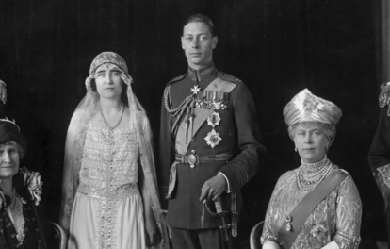
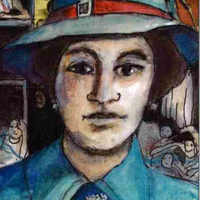
Lilian Helen Bowes Lyon (1895–1949) was a British poet. Biography Born 23 December 1895 at Ridley Hall, Northumberland. She was the youngest daughter of the Honourable Francis Bowes Lyon and was a first cousin of Elizabeth Bowes-Lyon, Queen Elizabeth the Queen Mother. During the First World War, Bowes Lyon helped at Glamis Castle (owned by her uncle) which became a convalescence home for soldiers. Her brother Charles Bowes Lyon was killed in the war on 23 October 1914, inspiring her poem “Battlefield” which was later published in Bright Feather Fading. After the Great War, Bowes Lyon studied for a time at the University of Oxford and then moved to London. She was independently wealthy. In 1929, she met the writer William Plomer CBE and through him, Laurens van der Post. She published two novels, The Buried Stream (1929) and Under the Spreading Tree (1931) but thereafter focused on poetry. Bowes Lyon published six individual collections with Jonathan Cape and a Collected Poems in 1948. Her “Collected Poems” contains an introduction by C. Day-Lewis, who noted the influences of Emily Dickinson, Hopkins and Christina Rossetti. Her verse appeared in many periodicals and anthologies including The Adelphi, Country Life, Kingdom Come, The Listener, The London Mercury, The Lyric (USA), The Observer, Orion, Punch, The Spectator, Time and Tide and “Poetry” (USA). During the Second World War, Bowes Lyon moved to the East End of London, where she used the Tilbury Docks unofficial air raid shelter and assisted with nursing the injured. She had several amputations due to thromboangiitis obliterans (Buerger’s Disease), losing toes, a foot, her lower legs and eventually both her legs below her hips. She returned to her home in Kensington and continued to write poetry despite the thromboangitis obliterans beginning to affect her hands. These poems, found amongst William Plomer’s papers at University of Durham, were published in “Uncollected Poems” by Tragara Press. She died on 25 July 1949.
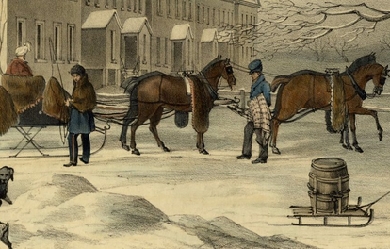
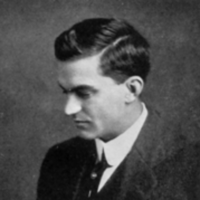
William Harris Lloyd Roberts (31 October 1884– 28 June 1966) was a Canadian writer, poet, and playwright. He was born in Fredericton, New Brunswick, the son of noted Canadian poet Charles George Douglas Roberts and Mary Isabel Fenety. After an education by private tutors, he attended King’s Collegiate School then, in 1905, Fredericton High School. In 1903 he performed clerical work at McClure’s magazine. From 1904 until 1907 he was an assistant editor at the Outing magazine, based in New York City. He wrote short stories and poetry for various magazines, plus performing part-time newspaper work starting in 1911. On January 1, 1914, he was married to Helen Hope Farquhar Bolmain. The couple had a daughter, Patricia Bliss, before Helen died. In 1912, he became editor of immigration literature for the Canadian Department of Interior in Ottawa. Two years later, he served as a correspondent for the Timer and Grazing branch of the Interior Department in Ottawa. On August 15, 1914, he married his second wife, Lila White; the couple divorced shortly thereafter. After 1920 he retired from work in order to devote all of his time to writing fiction, drama, poetry, and special articles. From 1925 until 1939 he was a correspondent for the Christian Science Monitor, then he performed public relations for the Royal Canadian Mounted Police up to 1945. His third marriage in 1943 was to Julia Bristow, and they would have two daughters. Bibliography * England Over Seas (1914) * Come Quietly, Britain (1915) * Mother Doneby (1916) * The Book of Roberts (1923) * Along the Ottawa (1927) * I Sing of Life (1937) References Wikipedia—https://en.wikipedia.org/wiki/William_Harris_Lloyd_Roberts
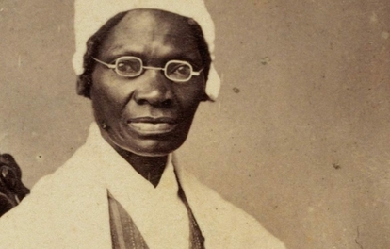
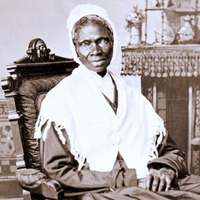
Sojourner Truth (born Isabella ("Bell") Baumfree; C. 1797– November 26, 1883) was an African-American abolitionist and women’s rights activist. Truth was born into slavery in Swartekill, Ulster County, New York, but escaped with her infant daughter to freedom in 1826. After going to court to recover her son, in 1828 she became the first black woman to win such a case against a white man. She gave herself the name Sojourner Truth in 1843 after she became convinced that God had called her to leave the city and go into the countryside “testifying the hope that was in her.” Her best-known speech was delivered extemporaneously, in 1851, at the Ohio Women’s Rights Convention in Akron, Ohio. The speech became widely known during the Civil War by the title “Ain’t I a Woman?,” a variation of the original speech re-written by someone else using a stereotypical Southern dialect; whereas Sojourner Truth was from New York and grew up speaking Dutch as her first language. During the Civil War, Truth helped recruit black troops for the Union Army; after the war, she tried unsuccessfully to secure land grants from the federal government for former slaves. In 2014, Truth was included in Smithsonian magazine’s list of the "100 Most Significant Americans of All Time". Early years Truth was one of the ten or twelve children born to James and Elizabeth Baumfree (or Bomefree). Colonel Hardenbergh bought James and Elizabeth Baumfree from slave traders and kept their family at his estate in a big hilly area called by the Dutch name Swartekill (just north of present-day Rifton), in the town of Esopus, New York, 95 miles (153 km) north of New York City. Charles Hardenbergh inherited his father’s estate and continued to enslave people as a part of that estate’s property. When Charles Hardenbergh died in 1806, nine-year-old Truth (known as Belle), was sold at an auction with a flock of sheep for $100 to John Neely, near Kingston, New York. Until that time, Truth spoke only Dutch. She later described Neely as cruel and harsh, relating how he beat her daily and once even with a bundle of rods. Neely sold her in 1808, for $105, to Martinus Schryver of Port Ewen, a tavern keeper, who owned her for eighteen months. Schryver sold her in 1810 to John Dumont of West Park, New York. Although this fourth owner was kindly disposed toward her, considerable tension existed between Truth and Dumont’s second wife, Elizabeth Waring Dumont, who harassed her and made her life more difficult. (John Dumont’s first wife, Sarah “Sally” Waring Dumont (Elizabeth’s sister), died around 1805, five years before he bought Truth.) Around 1815, Truth met and fell in love with a slave named Robert from a neighboring farm. Robert’s owner (Charles Catton, Jr., a landscape painter) forbade their relationship; he did not want the people he enslaved to have children with people he was not enslaving, because he would not own the children. One day Robert sneaked over to see Truth. When Catton and his son found him, they savagely beat Robert until Dumont finally intervened, and Truth never saw Robert again. He later died some years later, perhaps as a result of the injuries, and the experience haunted Truth throughout her life. Truth eventually married an older slave named Thomas. She bore five children: James, her firstborn, who died in childhood, Diana (1815), fathered by either Robert or John Dumont, and Peter (1821), Elizabeth (1825), and Sophia (ca. 1826), all born after she and Thomas united. Freedom The state of New York began, in 1799, to legislate the abolition of slavery, although the process of emancipating those people enslaved in New York was not complete until July 4, 1827. Dumont had promised to grant Truth her freedom a year before the state emancipation, “if she would do well and be faithful.” However, he changed his mind, claiming a hand injury had made her less productive. She was infuriated but continued working, spinning 100 pounds of wool, to satisfy her sense of obligation to him. Late in 1826, Truth escaped to freedom with her infant daughter, Sophia. She had to leave her other children behind because they were not legally freed in the emancipation order until they had served as bound servants into their twenties. She later said “I did not run off, for I thought that wicked, but I walked off, believing that to be all right.” She found her way to the home of Isaac and Maria Van Wagenen in New Paltz, who took her and her baby in. Isaac offered to buy her services for the remainder of the year (until the state’s emancipation took effect), which Dumont accepted for $20. She lived there until the New York State Emancipation Act was approved a year later. Truth learned that her son Peter, then five years old, had been sold illegally by Dumont to an owner in Alabama. With the help of the Van Wagenens, she took the issue to court and in 1828, after months of legal proceedings, she got back her son, who had been abused by those who were enslaving him. Truth became one of the first black women to go to court against a white man and win the case. Truth had a life-changing religious experience during her stay with the Van Wagenens, and became a devout Christian. In 1829 she moved with her son Peter to New York City, where she worked as a housekeeper for Elijah Pierson, a Christian Evangelist. While in New York, she befriended Mary Simpson, a grocer on John Street who claimed she had once been enslaved by George Washington. They shared an interest in charity for the poor and became intimate friends. In 1832, she met Robert Matthews, also known as Prophet Matthias, and went to work for him as a housekeeper at the Matthias Kingdom communal colony. Elijah Pierson died, and Robert Matthews and Truth were accused of stealing from and poisoning him. Both were acquitted of the murder, though Matthews was convicted of lesser crimes, served time, and moved west. In 1839, Truth’s son Peter took a job on a whaling ship called the Zone of Nantucket. From 1840 to 1841, she received three letters from him, though in his third letter he told her he had sent five. Peter said he also never received any of her letters. When the ship returned to port in 1842, Peter was not on board and Truth never heard from him again. “The Spirit Calls Me” 1843 was a turning point for Truth. She became a Methodist, and on June 1, she changed her name to Sojourner Truth. She told friends: “The Spirit calls me, and I must go” and left to make her way traveling and preaching about the abolition of slavery. At that time, Truth began attending Millerite Adventist campmeetings. However, that did not last since Jesus failed to appear in 1843 and then again in 1844. Like many others disappointed, Truth distanced herself from her Millerite friends for a while. In 1844, she joined the Northampton Association of Education and Industry in Northampton, Massachusetts. Founded by abolitionists, the organization supported women’s rights and religious tolerance as well as pacifism. There were, in its four-and-a-half year history, a total of 240 members, though no more than 120 at any one time. They lived on 470 acres (1.9 km2), raising livestock, running a sawmill, a gristmill, and a silk factory. While there, Truth met William Lloyd Garrison, Frederick Douglass, and David Ruggles. In 1846, the group disbanded, unable to support itself. In 1845, she joined the household of George Benson, the brother-in-law of William Lloyd Garrison. In 1849, she visited John Dumont before he moved west. Truth started dictating her memoirs to her friend Olive Gilbert, and in 1850 William Lloyd Garrison privately published her book, The Narrative of Sojourner Truth: A Northern Slave. That same year, she purchased a home in what would become the village of Florence in Northampton for $300, and spoke at the first National Women’s Rights Convention in Worcester, Massachusetts. In 1854, with proceeds from sales of the Narrative and cartes-de-visite entitled “I sell the shadow to support the substance,” she paid off the mortgage held by her friend from the Community, Samuel L. Hill. “Ain’t I a Woman?” In 1851, Truth joined George Thompson, an abolitionist and speaker, on a lecture tour through central and western New York State. In May, she attended the Ohio Women’s Rights Convention in Akron, Ohio, where she delivered her famous extemporaneous speech on women’s rights, later known as “Ain’t I a Woman.” Her speech demanded equal human rights for all women as well as for all blacks. The convention was organized by Hannah Tracy and Frances Dana Barker Gage, who both were present when Truth spoke. Different versions of Truth’s words have been recorded, with the first one published a month later by Marius Robinson, a newspaper owner and editor who was in the audience. Robinson’s recounting of the speech included no instance of the question “Ain’t I a Woman?” Twelve years later in May 1863, Gage published another, very different, version. In it, Truth’s speech pattern had characteristics of Southern slaves, and the speech included sentences and phrases that Robinson didn’t report. Gage’s version of the speech became the historic standard version, and is known as “Ain’t I a Woman?” because that question was repeated four times. It is highly unlikely that Truth’s own speech pattern was Southern in nature, as she was born and raised in New York, and she spoke only Dutch until she was nine years old. In contrast to Robinson’s report, Gage’s 1863 version included Truth saying her 13 children were sold away from her into slavery. Truth is widely believed to have had five children, with one sold away, and was never known to boast more children. Gage’s 1863 recollection of the convention conflicts with her own report directly after the convention: Gage wrote in 1851 that Akron in general and the press in particular were largely friendly to the woman’s rights convention, but in 1863 she wrote that the convention leaders were fearful of the “mobbish” opponents. Other eyewitness reports of Truth’s speech told a calm story, one where all faces were “beaming with joyous gladness” at the session where Truth spoke; that not “one discordant note” interrupted the harmony of the proceedings. In contemporary reports, Truth was warmly received by the convention-goers, the majority of whom were long-standing abolitionists, friendly to progressive ideas of race and civil rights. In Gage’s 1863 version, Truth was met with hisses, with voices calling to prevent her from speaking. Over the next 10 years, Truth spoke before dozens, perhaps hundreds, of audiences. From 1851 to 1853, Truth worked with Marius Robinson, the editor of the Ohio Anti-Slavery Bugle, and traveled around that state speaking. In 1853, she spoke at a suffragist “mob convention” at the Broadway Tabernacle in New York City; that year she also met Harriet Beecher Stowe. In 1856, she traveled to Battle Creek, Michigan, to speak to a group called the “Friends of Human Progress.” In 1858, someone interrupted a speech and accused her of being a man; Truth opened her blouse and revealed her breasts. Other notable speeches Northampton Camp Meeting—1844, Northampton, Massachusetts: At a camp meeting where she was participating as an itinerant preacher, a band of “wild young men” disrupted the camp meeting, refused to leave, and threatening to burn down the tents. Truth caught the sense of fear pervading the worshipers and hid behind a trunk in her tent, thinking that since she was the only black person present, the mob would attack her first. However, she reasoned with herself and resolved to do something: as the noise of the mob increased and a female preacher was “trembling on the preachers’ stand,” Truth went to a small hill and began to sing “in her most fervid manner, with all the strength of her most powerful voice, the hymn on the resurrection of Christ." Her song, “It was Early in the Morning,” gathered the rioters to her and quieted them. They urged her to sing, preach, and pray for their entertainment. After singing songs and preaching for about an hour, Truth bargained with them to leave after one final song. The mob agreed and left the camp meeting. Abolitionist Convention—1840s, Boston, Massachusetts: William Lloyd Garrison invited Sojourner Truth to give a speech at an annual antislavery convention. Wendell Phillips was supposed to speak after her, which made her nervous since he was known as such a good orator. So Truth sang a song, “I am Pleading for My people,” which was her own original composition sung to the tune of Auld Lang Syne. Mob Convention—September 7, 1853: At the convention, young men greeted her with "a perfect storm,” hissing and groaning. In response, Truth said, “You may hiss as much as you please, but women will get their rights anyway. You can’t stop us, neither”. Sojourner, like other public speakers, often adapted her speeches to how the audience was responding to her. In her speech, Sojourner speaks out for women’s rights. She incorporates religious references in her speech, particularly the story of Esther. She then goes on to say that, just as women in scripture, women today are fighting for their rights. Moreover, Sojourner scolds the crowd for all their hissing and rude behavior, reminding them that God says to “Honor thy father and thy mother.” American Equal Rights Association—May 9–10, 1867: Her speech was addressed to the American Equal Rights Association, and divided into three sessions. Sojourner was received with loud cheers instead of hisses, now that she had a better-formed reputation established. The Call had advertised her name as one of the main convention speakers. For the first part of her speech, she spoke mainly about the rights of black women. Sojourner argued that because the push for equal rights had led to black men winning new rights, now was the best time to give black women the rights they deserve too. Throughout her speech she kept stressing that “we should keep things going while things are stirring” and fears that once the fight for colored rights settles down, it would take a long time to warm people back up to the idea of colored women’s having equal rights. In the second sessions of Sojourner’s speech, she utilized a story from the Bible to help strengthen her argument for equal rights for women. She ended her argument by accusing men of being self-centered, saying, “man is so selfish that he has got women’s rights and his own too, and yet he won’t give women their rights. He keeps them all to himself.” For the final session of Sojourner’s speech, the center of her attention was mainly on women’s right to vote. Sojourner told her audience that she owned her own house, as did other women, and must therefore pay taxes. Nevertheless, they were still unable to vote because they were women. Black women who were enslaved were made to do hard manual work, such as building roads. Sojourner argues that if these women were able to perform such tasks, then they should be allowed to vote because surely voting is easier than building roads. Eighth Anniversary of Negro Freedom—New Year’s Day, 1871: On this occasion the Boston papers related that “...seldom is there an occasion of more attraction or greater general interest. Every available space of sitting and standing room was crowded". She starts off her speech by giving a little background about her own life. Sojourner recounts how her mother told her to pray to God that she may have good masters and mistresses. She goes on to retell how her masters were not good to her, about how she was whipped for not understanding English, and how she would question God why he had not made her masters be good to her. Sojourner admits to the audience that she had once hated white people, but she says once she met her final master, Jesus, she was filled with love for everyone. Once enslaved folks were emancipated, she tells the crowd she knew her prayers had been answered. That last part of Sojourner’s speech brings in her main focus. Some freed enslaved people were living on government aid at that time, paid for by taxpayers. Sojourner announces that this is not any better for those colored people than it is for the members of her audience. She then proposes that black people are given their own land. Because a portion of the South’s population contained rebels that were unhappy with the abolishment of slavery, that region of the United States was not well suited for colored people. She goes on to suggest that colored people be given land out west to build homes and prosper on. On a mission In 1856, Truth bought a neighboring lot in Northampton, but she did not keep the new property for long. On September 3, 1857, she sold all her possessions, new and old, to Daniel Ives and moved to Battle Creek, Michigan, where she rejoined former members of the Millerite Movement who had formed the Seventh-day Adventist Church. Antislavery movements had begun early in Michigan and Ohio. Here, she also joined the nucleus of the Michigan abolitionists, the Progressive Friends, some who she had already met at national conventions. According to the 1860 census, her household in Harmonia included her daughter, Elizabeth Banks (age 35), and her grandsons James Caldwell (misspelled as “Colvin”; age 16) and Sammy Banks (age 8). During the Civil War, Truth helped recruit black troops for the Union Army. Her grandson, James Caldwell, enlisted in the 54th Massachusetts Regiment. In 1864, Truth was employed by the National Freedman’s Relief Association in Washington, D.C., where she worked diligently to improve conditions for African-Americans. In October of that year, she met President Abraham Lincoln. In 1865, while working at the Freedman’s Hospital in Washington, Truth rode in the streetcars to help force their desegregation. Truth is credited with writing a song, “The Valiant Soldiers”, for the 1st Michigan Colored Regiment; it was said to be composed during the war and sung by her in Detroit and Washington, D.C. It is sung to the tune of “John Brown’s Body” or “The Battle Hymn of the Republic”. Although Truth claimed to have written the words, it has been disputed (see “Marching Song of the First Arkansas”). In 1867, Truth moved from Harmonia to Battle Creek. In 1868, she traveled to western New York and visited with Amy Post, and continued traveling all over the East Coast. At a speaking engagement in Florence, Massachusetts, after she had just returned from a very tiring trip, when Truth was called upon to speak she stood up and said “Children, I have come here like the rest of you, to hear what I have to say.” In 1870, Truth tried to secure land grants from the federal government to former enslaved people, a project she pursued for seven years without success. While in Washington, D.C., she had a meeting with President Ulysses S. Grant in the White House. In 1872, she returned to Battle Creek and tried to vote in the presidential election, but was turned away at the polling place. Truth spoke about abolition, women’s rights, prison reform, and preached to the Michigan Legislature against capital punishment. Not everyone welcomed her preaching and lectures, but she had many friends and staunch support among many influential people at the time, including Amy Post, Parker Pillsbury, Frances Gage, Wendell Phillips, William Lloyd Garrison, Laura Smith Haviland, Lucretia Mott, Ellen G. White, and Susan B. Anthony.” Death and legacy Several days before Sojourner Truth died, a reporter came from the Grand Rapids Eagle to interview her. “Her face was drawn and emaciated and she was apparently suffering great pain. Her eyes were very bright and mind alert although it was difficult for her to talk.” Truth died at her Battle Creek home on November 26, 1883. On November 28 her funeral was held at the Congregational-Presbyterian Church officiated by its pastor, the Reverend Reed Stuart. Some of the prominent citizens of Battle Creek acted as pall-bearers. Truth was buried in the city’s Oak Hill Cemetery. The calendar of saints of the Episcopal Church remembers Sojourner Truth annually, together with Elizabeth Cady Stanton, Amelia Bloomer and Harriet Ross Tubman on July 20. The calendar of saints of the Lutheran Church remembers Sojourner Truth together with Harriet Tubman on March 10. A larger-than-life sculpture of Sojourner Truth by artist Tina Allen, was dedicated in 1999, which is the estimated bicentennial of Sojourner’s birth. The 12-foot tall Sojourner monument is cast bronze. Cultural references and commemorations Other honors and commemorations include (by year): 1862– William Wetmore Story’s statue, The Libyan Sibyl, inspired by Sojourner Truth, won an award at the London World Exhibition. 1892– Albion artist Frank Courter is commissioned to paint the meeting between Truth and President Abraham Lincoln. 1969– The leftist group the Sojourner Truth Organization is named after her. The group folded in 1985. 1971– Sojourner Truth Library at New Paltz State University of New York is named in Truth’s honor. 1976– Interstate 194 is named for her in Michigan. 1979– The artwork The Dinner Party features a place setting for Truth. 1980– The Inter Cooperative Council at the University of Michigan and the residents of the then Lenny Bruce House rename it as Sojourner Truth House in her honor. 1981– Truth is inducted into the National Women’s Hall of Fame in Seneca Falls, New York. 1981– Feminist theorist and author bell hooks titles her first major work after Truth’s “Ain’t I a Woman?” speech. 1983– Truth is in the first group of women inducted into the Michigan Women’s Hall of Fame in Lansing. 1986– The U.S. Postal Service issues a commemorative postage stamp honoring Sojourner Truth. 1987– Truth is commemorated in a monument of “Michigan Legal Milestones” erected by the State Bar of Michigan. 1997– The NASA Mars Pathfinder mission’s robotic rover is named “Sojourner” after her. 1998– S.T. Writes Home appears on the web offering “Letters to Mom from Sojourner Truth,” in which the Mars Pathfinder Rover at times echoes its namesake. 1999– A 12-foot-high monument is built to honor her in Battle Creek, Michigan. 1999– The Broadway musical The Civil War includes an abridged version of Truth’s “Ain’t I a Woman?” speech as a spoken-word segment. On the 1999 cast recording, the track was performed by Maya Angelou. 2002– Scholar Molefi Kete Asante lists Sojourner Truth on his list of 100 Greatest African Americans. 2002– A statue was installed in Florence Massachusetts to honor Sojourner Truth in a small park located on Pine Street and Park Street, on which she lived for ten years. 2004– The King’s College, located inside the Empire State Building in New York City, names one of their houses “The House of Sojourner Truth”. 2009– Truth becomes the first black woman honored with a bust in the U.S. Capitol. The bust was sculpted by noted artist Artis Lane. It is in Emancipation Hall of the Capitol Visitor Center. v2014– Truth was included in the Smithsonian Institution’s list of the "100 Most Significant Americans". 2014– Asteroid (249521) Truth is named in her honor. 2015– A statue of Sojourner Truth is unveiled at the University of California, San Diego. The statue resides in Marshall College. As of March 2015, K-12 schools in several states, including California, Minnesota, New Jersey, New York and Oregon, are named after her, as is Sojourner–Douglass College in Baltimore. Ten-dollar bill On April 20, 2016 Treasury Secretary Jacob Lew announced that several denominations of United States currency would be redesigned prior to 2020, the 100th anniversary of the 19th Amendment. The newly designed $10 bill will include images on the reverse which will pay homage to the women’s suffrage movement and feature the images of Truth, Lucretia Mott, Susan B. Anthony, Elizabeth Cady Stanton, Alice Paul, and the 1913 Woman Suffrage Procession.

